You will receive an email containing a link allowing you to reset your password to a new preferred one.
Verification mail has been sent.
Please check your mail to verify your account.
Click Here to Login
- How To Reach

32°53'15.1"N 78°18'18.1"E
- Rumtse To Tso Moriri Trek


Inquire Now
Pickup point.
Leh Airport, India
Minimum Age
- Explore the beautiful Tso Moriri Lake.
- Spot some of the rarest and most stunning wildlife species.
- The backdrop of the majestic Mt. Kang Yatse 4. Visit incredible Buddhist monasteries on the Tso Moriri Trek.
One of the most breathtaking high altitude treks in Ladakh, the trail from Rumtse to Tso Moriri traces a verdant blanket of greenery and revolves around wildlife, alpine lakes, monasteries, and nomads. This daunting trek starts from the village of Rumtse at 4,100 m and ends at the beautiful Tso Moriri Lake in the Changthang region, which is a spellbinding sight to behold. The Changthang region houses several exotic species of wildlife like the Himalayan Wolf, Tibetan Wild Dog, Wild Ass Kiang, Himalayan Marmot, and Tibetan Argali, which may grace your landscape if you're lucky enough. Also, the campsites of Kyamar, Tisaling, and Rachungkharu are some of India's most beautiful gems, presenting you with spectacular views of the lush forests and towering mountains. The massive Mt. Kang Yatse chaperones your trek!
Brief Itinerary
Detailed itinerary, day 1 : arrive at leh, day 2 : explore and acclimatise in leh, day 3 : drive from leh to rumtse, and trek from rumtse to kyamar, day 4 : trek from kyamar to tisaling via kyumur la pass, day 5 : trek from tisaling to pangunagu via shinbuk la, day 6 : trek from pangunga to nuruchan, day 7 : trek from nuruchan to gyamar barma via kyamayuri la, day 8 : trek from gyamar barma to gyamar via kartse la, day 8 : trek from gyamar to karzok via yalung nyau la, day 10 : drive from karzok back to leh, day 11 : depart from leh.
We will arrange a cab for you from the pickup point in Leh which will be the Airport, the charges for the same are included in the package. For communications purposes, we will create a Whatsapp Group before the departure date of the trek and will share the details regarding the transportation. The drop at Leh Airport after the trek will be arranged in a similar way.
How to reach Rumtse to Tso Moriri Trek Starting Point ( Leh ) :
By Air
The Kushok Bakula Rimpochee Airport in Leh is the highest airport in India. You can get daily flights to Leh from most of the cities in India. Frequent flights ply from Delhi, Mumbai, Bangalore, Chennai, and Kolkata. Standing at an elevation of 11,150 feet, Leh is one of the highest cities in India.
The nearest major railway station is the Jammu Tawi railway station which directly connects major cities of India like New Delhi, Mumbai, Chennai, Bangalore, Kolkata and many more. It is the most convenient stop, from where frequent buses and cabs are available.
You can use either the Manali-Leh highway or Srinagar-Leh highway if you wish to travel by road. The Srinagar-Leh highway is more preferable than the Manali-Leh highway.
Latest Stories
Why trek with us .

Get Yourself Fit
Nutrition tips, things to take, health & safety.
- Accommodations at Trek: All accommodations on the trek will be on twin sharing basis in Tents or Homestays. Any accommodation in a hotel/guest house/hostel will be in a budget hotel.
- Trek Leader and Guides: An experienced and certified Trek Leader , as well as a professional guide, will accompany you for the trek. The team will have years of experience and well equipped for any emergency situation.
- Services of a Professional Trekking Team: A team of an experienced Cook, Camp Staff, Porters/Mules will accompany you for all the arrangements on the trek .
- Meals: All Meals on the Trek are included. We will serve Vegetarian Indian food on the trek which will be cooked by our high altitude chefs. It will be a five-course meal plan.
- Camping and Safety Equipment: All the camping equipment such as Tents, Sleeping bags, Toilet Tents, Dining Tent, Mattresses, and other things will be provided by us and we guarantee the quality. Safety Equipment including Medical kit, Oxygen Cylinder, Oximeter, Crampons & Gaiters(if required) will be provided by us. We recommend you to bring your own sleeping bags if possible.
- Trek Permits and Forest Camping Charges: Only for Indian Clients, All the applicable trekking permits, Camping Charges, Forest Entry Fee, etc will be paid by us. Foreigners have to pay these charges if not mentioned.
- A Life-Changing Experience: We assure you that by trekking in the Himalayas you will have a life-changing experience and we will do everything we can to provide you with the best services and make your venture in the wild an unforgettable one.
Note: Prior to booking any adventure with Trekmunk, it will be mandatory to sign the waiver form and get a medical certificate from a doctor in due time, without these, you will not be allowed to start the trek. All this will be done online without using any paper.
- GST and Other Taxes: The goods and services tax is not included in the price mentioned with the trek. They are subjected to change according to the government rules of India.
- Food in Leh: Food in Leh is not included in the package. You can dine anywhere in Leh city, we can recommend a few good options.
- Flights and Transportation: Flights or other means of transport are not included in the package. Transportation from Home city to Leh and Leh to Home city is not included in the package. Any expenses occurred during the journey are not included in the package cost.
- Personal Equipment: Your Rucksack, personal clothing, shoes, trek poles, and other personal trekking gear is not included in this package. You have to bring your own gear according to the weather and difficulty of the trek.
- Portage of Personal Bags(Offloading): We highly advise you to carry your own burden (your rucksack) but due to any reason, if you wish to not carry your rucksack, we can arrange for a porter/mule to carry it. For this service, you will be charged over and above the trek cost. The charges for offloading vary with every trek.
- Travel Insurance: Travel Insurance is not included in this package. We recommend you to have travel insurance before opting for such adventures. You can buy insurance from us while booking the trek, it is optional.
- Personal Expenses: Any personal expenses incurred (Laundry, Bottled Water, Beverages, Snacks, Orders at tea houses or dhabas, Tips for guides, Camera fees, etc) are not included in the package.
- Emergency Expenses: Any costs arising out of unforeseen circumstances such as accidents, bad weather, landslides, road conditions and any other circumstances beyond our control are not included in the package.
- Anything not mentioned in Inclusions of the package.
Cancellation Policy And More Information
Booking Terms:
1. Confirmation Policy :
Upon Booking, An invoice will be sent to your mail & within 12 to 24 hours the booking confirmation with additional details will be sent to your mail.
2. Cancellation Policy:
Note: Following Cancellation policy will be followed for departures booked on or before 31st May 2021-
1) Cancellation up to 7 days before the start date of the trek: Get a complete cash refund (minus 5% transaction fee). The money is refunded to the same bank account, credit, or debit card from where the payment was made.
2) Cancellation during the last 6 days before the start date of the trek, and not counting the day of the trek: Full refund with 100% of the trek fee in the form of a Trekmunk Trek Voucher. Valid for 1 year from the date of issue. Can be used on any Trekmunk trek.
3) Cancellation on the start day of the trek, or no show on the start day of the trek : Unfortunately, no refund.
For more details, go to https://www.trekmunk.com/cancellation-policy
3. Refund Policy:
Any refund applicable will be processed within 10 to 15 business days as per the company policy.
4. Postpone/Transfer of a booked trek:
1. You can postpone your booked trek for a period of two months (61 days) but we will charge a 20% processing fee. The last date for the postponement will be 15 days before the start of the trek. Failing to book the slot in 2 months (61 days) time, would be considered a cancellation with no refund of any kind. Postpone of a booked trek can only be done once.
2. You can transfer your booked slot for the trek to any fit person till 15 days before the trek. You just have to mail us the request and rest we will handle. The new person has to get all the mandatory documents duly signed for the trek.
More Information:
1. We Trek for a Cause : For overall development of the areas we run our operations in, we donate Rs 100/- per booking from our profits which are used for the upliftment of the local people and conserving nature. We have named this initiative as - Trek for a Cause. For more details, follow: https://www.trekmunk.com/trek-for-a-cause
2. We are paperless : We are focusing on Sustainable Tourism and to do that we are trying all measures to convert our trek operations to be Eco-Friendly. Going Paperless is one step closer to our aim.
3. Single-Use Plastic : Trekmunk does not encourage the use of single-use plastic items. We are ensuring that our team is working together to reduce the problem and educate those around them. We will send you instructions on how to go plastic-free on your adventures.
4. Preparing for your Holiday : Getting some additional exercise makes a lot of sense to spend time before coming on a trekking adventure. The fitter you are, the more enjoyable you will find the experience. Hiking in the hill country is the best training but jogging, squash and swimming are also good for developing cardiovascular fitness and stamina. To read more on how to get fit, follow: https://www.trekmunk.com/get-fit-for-trek
5. Electricity Supply & Plug : You will get electricity supply till the starting point of the trek. If not Indian, We recommend you check if you require an adaptor for your electrical items at: http://www.worldstandards.eu/electricity/plugs-and-sockets/
6. Currency: The unit of currency in India is the Indian Rupees.
7. Health & Vaccinations:
Severe Allergies : If you have a severe allergy please inform the Trekmunk office before you travel. We will do all we can to help, but we cannot guarantee an allergy-free environment on trekmunk trips. You will need to carry your own treatment for the allergy with you, as 'adrenaline auto-injectors' are not carried as standard by our leaders and staff. You should inform your leader on the arrival of your allergy, and let them know where you keep your adrenaline pen.
Vaccinations : You should contact your doctor or travel clinic to check whether you require any specific vaccinations or other preventive measures. You should be up to date with routine courses and boosters as recommended e.g. diphtheria-tetanus-polio and measles-mumps-rubella, along with hepatitis A and typhoid. Malarial prophylaxis is not usually required for trips in the mountains, however, if you are visiting rural and remote low lying areas then they might be necessary.
8. Passport & Visas/Identity Proofs : If foreigner, Validity for 6 months, should have blank pages, and should be kept with yourself all the time.
9. Water : If you are on a trekking or cycling holiday, water is supplied to fill up your individual bottles. This will be boiled or filtered. Additionally, you should take purification tablets or a filter bottle (such as a LifeStraw, Sawyer Filter) to treat your water when in towns or where water is not supplied. We do not encourage the purchasing of single-use plastic bottles.
10. Altitude : This adventure involves going to a very high altitude. This is not something that you should worry about; the human body is quite capable of adapting to a very wide range of altitudes, but it is important that we follow some simple rules in order to acclimatize successfully. We will send you the information in your mailbox about Acute Mountain Sickness and trekking in high altitudes. On this trip, we carry bottled oxygen for use in emergencies.
11. Guidance on Tipping : Tipping is the accepted way of saying thank you for good service. Normally the guide and any other trek staff are given their tips at the end of the trek and this is best done as a group. The main guide will make sure that the tip is appropriately distributed among all the staff members on the trek.
12. Spending/Emergency Money : Approximately Rs. 8000-10000/- (in Indian Currency)should be carried for miscellaneous expenses including porter and trek crew tips, drinks, soft drinks, etc. We recommend that you carry your travel money in the form of cash as the availability of ATM is less in these remote areas. This can also serve as your emergency spending money.
13. Travel Insurance : It is recommended to have travel insurance for these kinds of adventures. When taking out insurance please ensure the policy you choose covers you for the activities and altitude included in your itinerary. We will ask for the Travel Insurance Details over a mail. Indians can buy insurance from us while booking the trek.
I and my friends went to Markha Valley trek with Trekmunk and we all had a great time. Walking up and down the hill, coming across some beautiful sites was mesmerizing. Staying in tents was so much fun. And our guide had all the knowledge about the trek. Trekmunk is really good w ...
Chadar trek is considered to be one of the most difficult and dangerous treks, which requires a lot of skilled trek leaders, a perfect guide and a strong team of porters. I choose Trekmunk for Chadar and they proved they are a perfect team. Highly skilled trek leaders, profession ...
Traveling with these people is surely an insanely enthralling experience. This is my second backpacking trip with these people and the way I had imagined backpacking to be has been fulfilled by them and they have given me surely more. The best thing about travelling with these pe ...
I and my friends went to Markha Valley trek with Trekmunk and we all had a great time. Walking up and down the hill, coming across some beautiful sites was mesmerizing. Staying in tents was so much fun. And our guide had all the knowledge about the trek. Trekmunk is really good with its food and accommodation facilities. I highly recommend Trekmunk. Kudos to their Team.
Chadar trek is considered to be one of the most difficult and dangerous treks, which requires a lot of skilled trek leaders, a perfect guide and a strong team of porters. I choose Trekmunk for Chadar and they proved they are a perfect team. Highly skilled trek leaders, professional skiers, gave us details on how to walk on slippery ice. Professionally trained and certified with wilderness medication programs always ready to take your care in any condition and travelers themselves. One will enjoy their company, their travel stories and their way of leading a trek. Cheers to team Trekmunk.
Traveling with these people is surely an insanely enthralling experience. This is my second backpacking trip with these people and the way I had imagined backpacking to be has been fulfilled by them and they have given me surely more. The best thing about travelling with these people is that you understand the true meaning of travelling and experience it very closely. You are given great freedom but at the same time taking care of. You participate in the process of backpacking. You have a trip leader with you but he acts more like a friend as the days pass by! We attended the hornbill festival and did a wonderful trek to Dzukuo valley in Nagaland with the leadership of this group. You break the boundaries of yourself when you travel like a true traveller and that is possible with these people.
I was bored with my regular 9 to 5 schedule and then I decided to seclude myself from the chaotic city life. So, I went to Brahmatal trek last month along with a couple of my friends. We went with Trekmunk and it was a lovely experience. The trek guide, Ramesh was very polite and helpful. The food and snacks were amazing. The activities in the campsite during our overnight stay is something that I am gonna cherish my entire life. I am waiting for my next trek with Trekmunk.
No words for the bike trip from Srinagar to Leh. One should experience it to feel it and all this because of the management of Trekmunk especially Mohit and Harshit whose efforts even made the hardest of the ride exciting adventurous and above all safe. Although some hindrances which are quite common like bike issues and medical problems arose with our co-riders, I liked the way these two guys handled it dexterously. I went with one of my best friends and came with a lot more and the trip turned out to be memories that can be cherished for a lifetime. Thanks, Team Trekmunk for giving me a wonderful experience. I can't wait to go on my next adventure with them.

Related Blogs
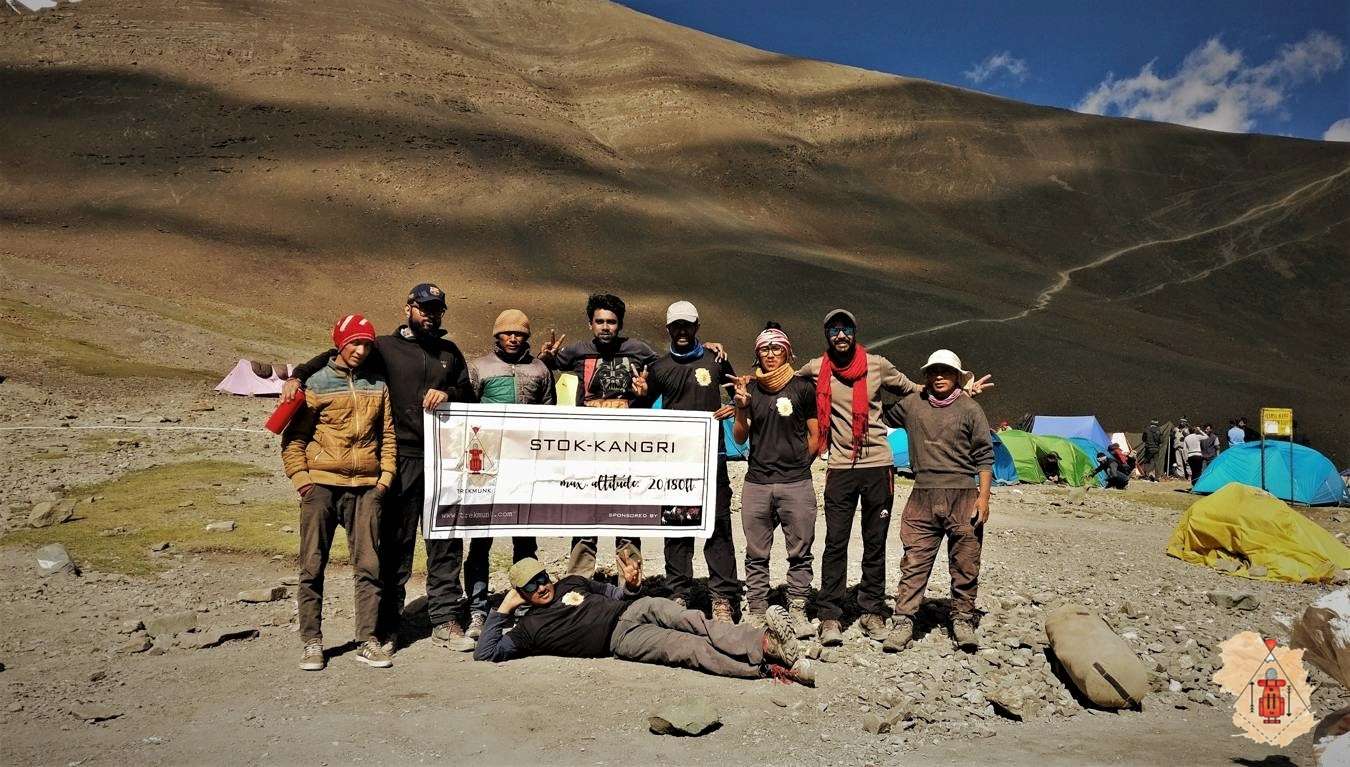
Related Tours
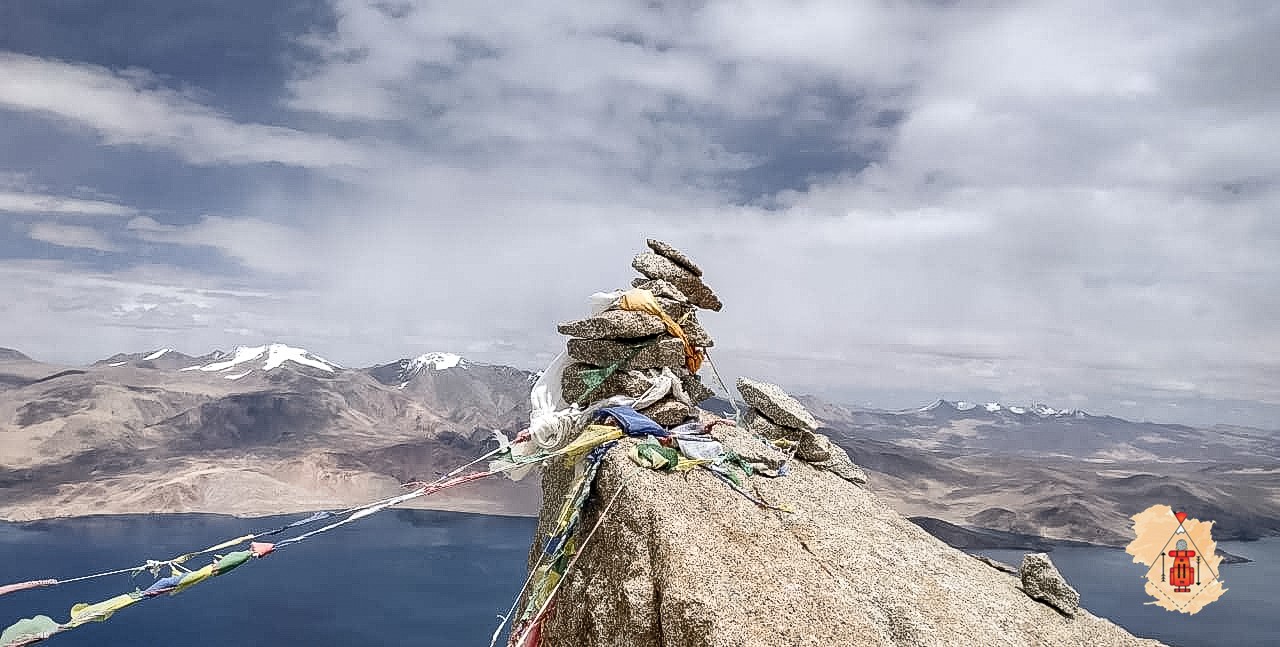
Mentok Kangri Expedition
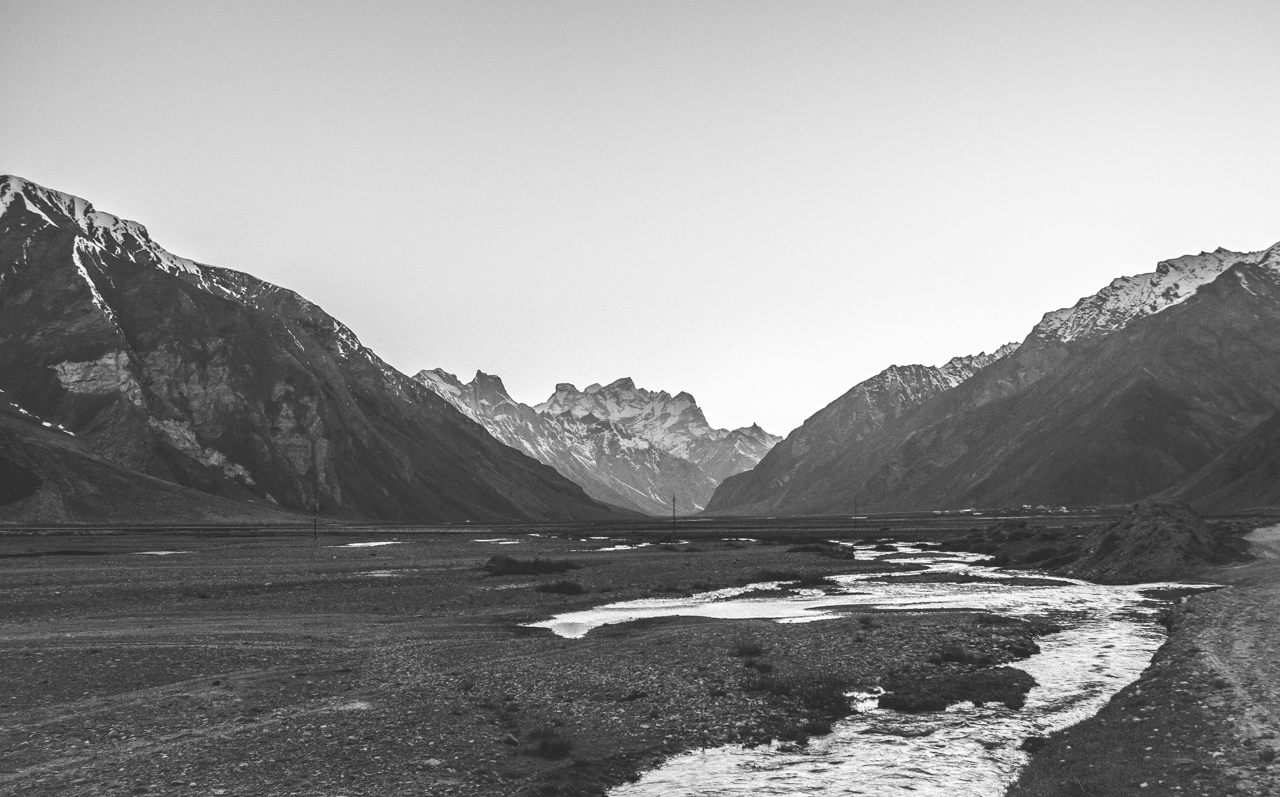
Rupshu Valley Trek
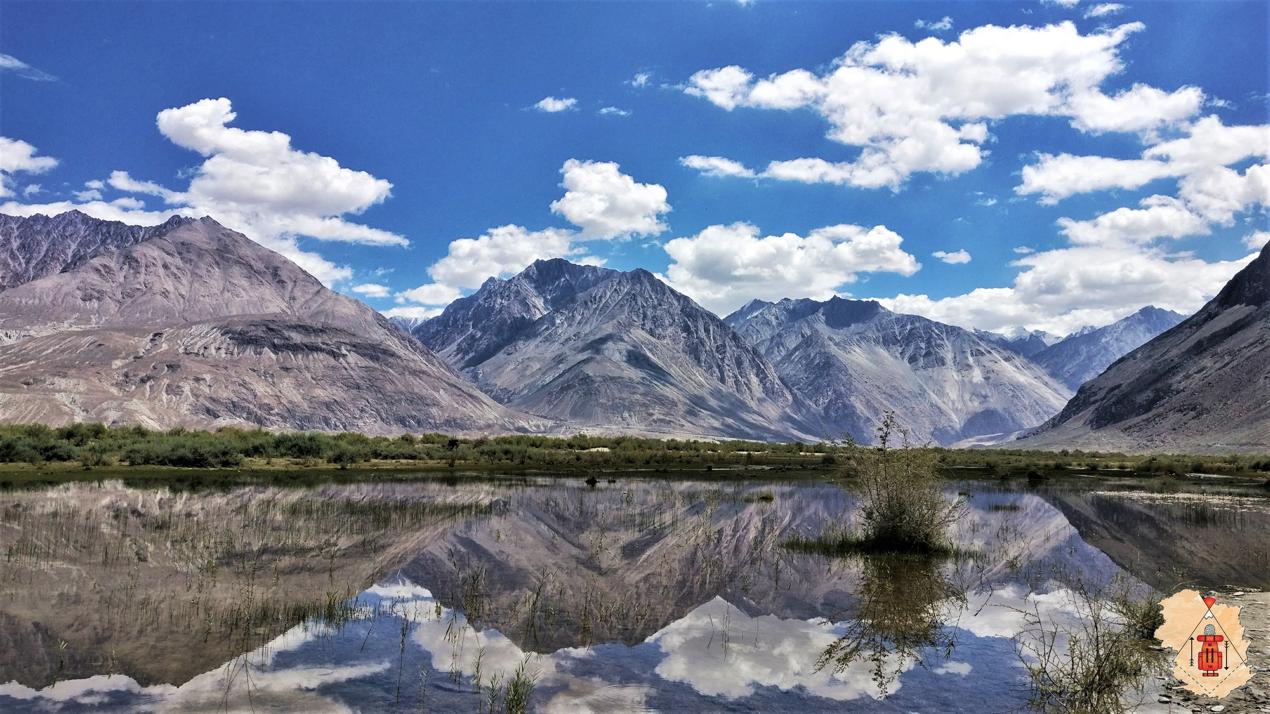
Saboo to Khaltsar Trek
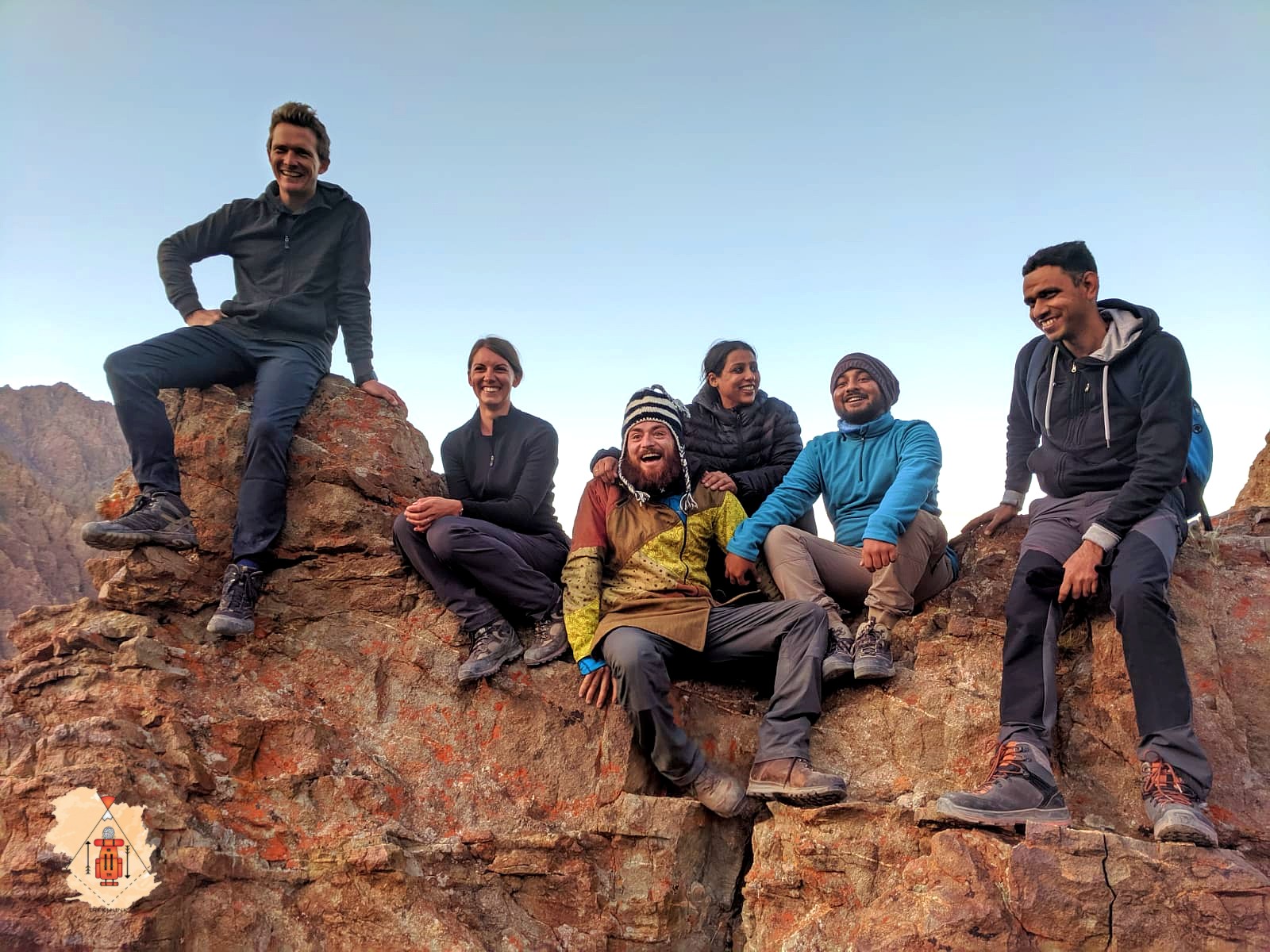
Sham Valley Trek
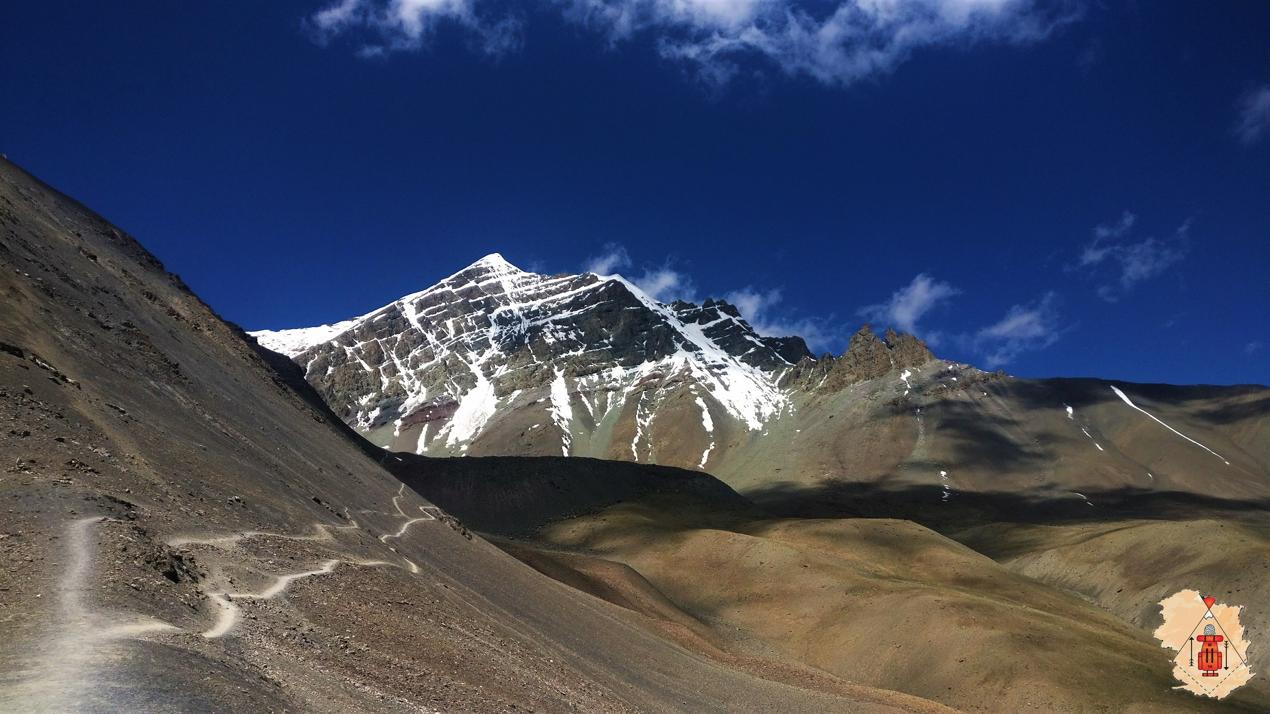
Stok Kangri Trek

"Trekmunk is changing the indian trekking industry"
"10 Most Promising Adventure Sporting and Trekking Companies - 2020"

" Things you do for the Passion for Travel"
Hello there, How can we help you ?
Timing: 10 am to 6 pm IST (GMT +5:30)
Whats App Us
Rumtse to Tso Moriri Trek
The striking trek to Changthang is the most beautiful one in Ladakh
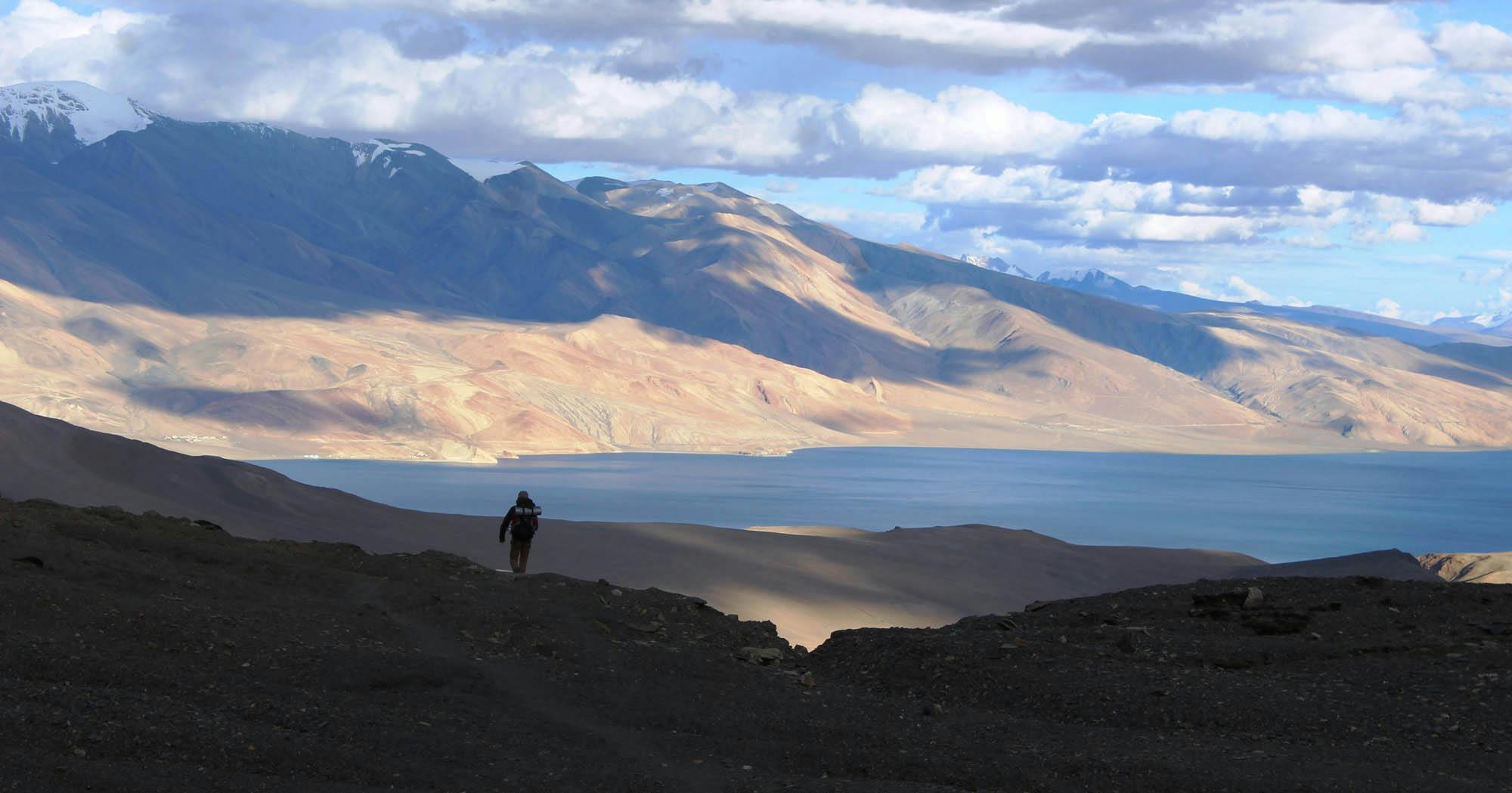
Can You Help Us With Photographs Of This Trek?
We are looking to enrich this documentation with more photos. Pictures go a long way in explaining the trail, more than words ever can. If you have done this trek, can you share your photos with us? We will include them on this page, with due credit to you. Click here to contribute .
The Complete Guide to Rumtse to Tso Moriri
Rumtse to Tso Moriri is arguably the most beautiful trek in Ladakh. Colourful mountains, two huge alpine lakes and plenty of wildlife all add to the surreal beauty of this trek.
With seven pass crossings, more than ten river crossings and three campsites higher than 16,000 ft, this trek is surely an adventurer’s delight. The altitude of the trek along with all the ascents and descents involved in the seven pass crossings make this trek a challenging one.
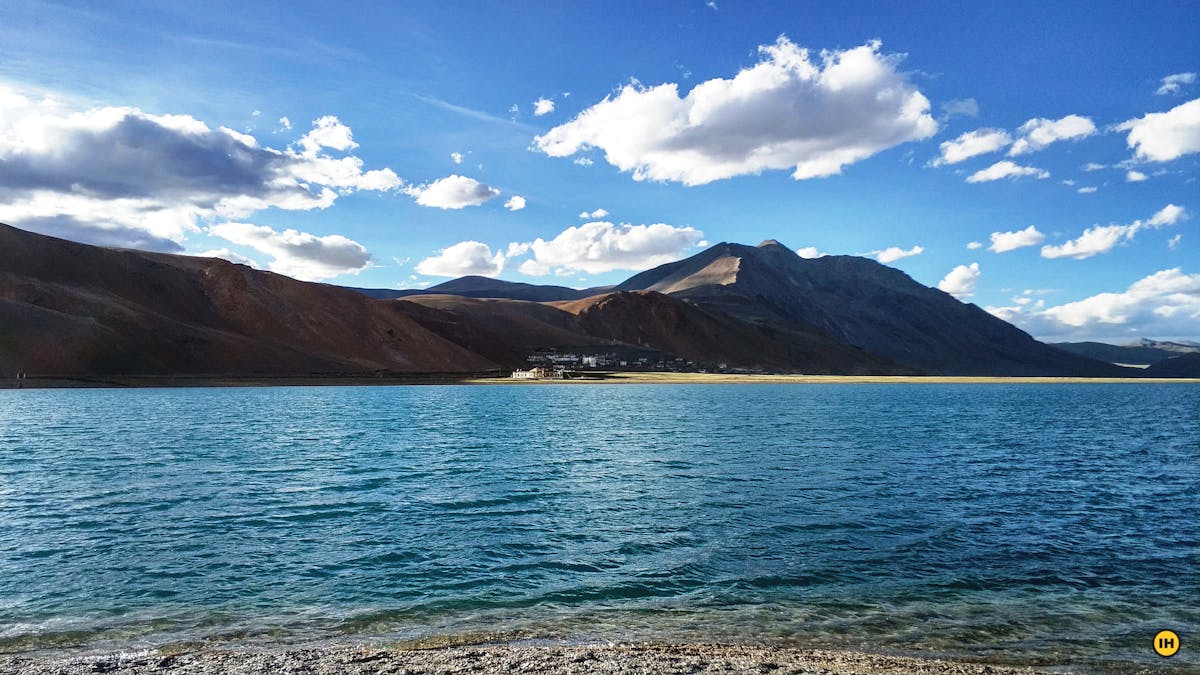
The Tso Moriri lake. You can see Karzok in the distance. Photo by Danny Slewe
However, nothing is more rewarding than ending a tough day’s trek at a lovely green campsite with some great mountain views. That is how all the campsites are on this trek, they are some of the most gorgeous settings you will get to camp in.
This trek is a great alternative to the relatively popular Markha Valley trek. Not only is it less frequented by trekkers, it is also much more beautiful and challenging.
➤ What to Watch Out For – Rumtse to Tso Moriri
The camping grounds of rachungkharu.
All the camping grounds on this trek are extremely pretty, with a carpet of greenery splayed across campsites of Tisaling, Kyamar and Rachungkharu. To see so much vegetation at an altitude is a mind-boggling sight. However, among them, Rachungkharu stands out because that is the only Changpa settlement that is inhabited in the summer. You will come across and interact with Changpa nomads, who have a distinct Tibetan culture. They mainly raise yak and goats and are historically known to travel from Ladakh to Lhasa, Changpa clans now make their presence felt on this trail.
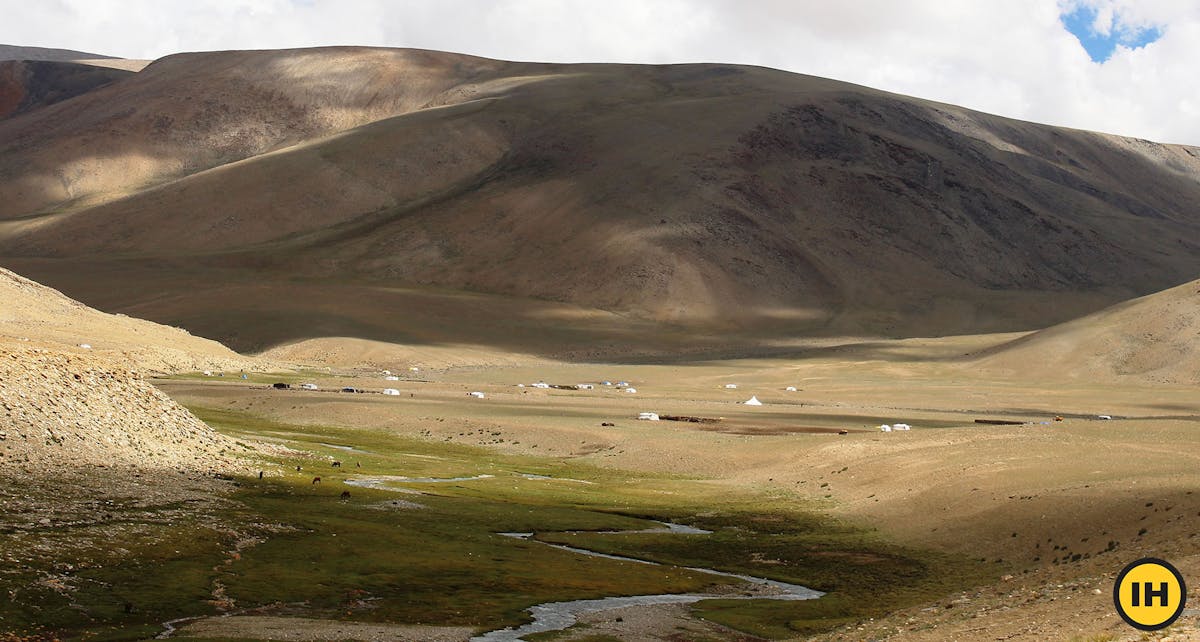
The camping grounds of Rangchungkharu. Photo by Danny Slewe
The lakes of Tso Kar and Tso Moriri
The sight of brackish Tso Kar is a sight for sore eyes from Shibuk La, while the sapphire blue of Tso Moriri that will leave an ever lasting impression. Right from when you first see Tso Moriri from Yarlung Nyau La to see it lap the shores of Karzok village, the lake is surreal.
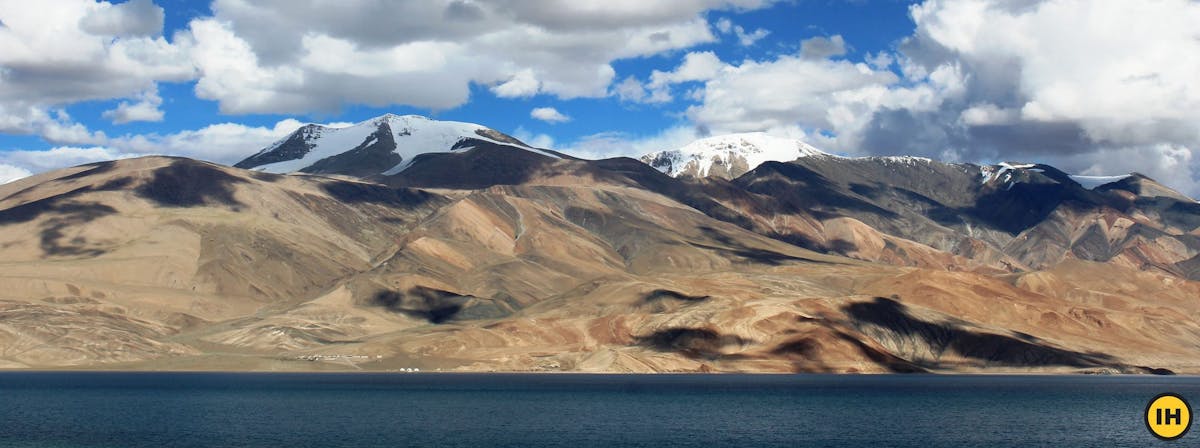
The Tso Moriri lake. Photo by Manoj MN
The wildlife of Changthang plateau
The Changthang Plateau is known for its birds. Keep your ears open for songbirds such as the Horned Lark and the seed-eating Finch. The Brown Headed Gull, Brahminy duck and The Bar Headed Goose, known to be the highest flying bird in the world, can also be found here. The high plateaus of the area are home to some rare animals such as the Kyang (wild ass), blue sheep, marmots, Himalayan Ibex and snow leopards.

A lone kiang in the expanse of Changthang valley. Photo by Danny Slewe
➤ Short Itinerary
- Spread over 120 square kilometres, Tso Moriri is the largest high-altitude lake that is entirely within India. And this Ladakhi wonder is the biggest reward of this trek.
- One trudges through seven mountain passes, more than 10 river-crossings and arid, deserted never-ending lands to get there.
- Throughout the 10-day trail, trekkers have the company of landscapes that are so outlandish, they don’t seem to belong from this world. It’s a starkly beautiful trail that no other trek can replicate.
➤ Trail Information
Day 1: drive from leh to rumtse : acclimatization at rumtse.
- Altitude: 11, 560 ft – 13,770 ft
- Distance: 79 km drive
- Duration: 3 hour drive
It is highly recommended that you reach Rumtse a day before starting the trek to acclimatise. You can also get to Rumtse from Leh and start trekking immediately, but keep in mind that Rumtse is at a considerably higher altitude than Leh. The altitude gain from Leh to the first campsite Kyamar would be too much for a single day and you risk getting altitude sickness.
Rumtse is a small village, 79 km before Leh on the Leh-Manali road. You can get there by taking any of the Manali/Keylong bound buses from Leh, it should take around 2-3 hours.
Rumtse has camping grounds where you can pitch tents or you can also stay at local homestays or dhabas for about Rs. 500 a night. There is also a lodge run by Jammu & Kashmir Tourism.
Day 2: Rumtse – Kyamar
- Altitude: 13,770 ft – 15,010 ft
- Distance: 9 km
- Duration: 4-5 hours
Today is the first day of the trek. Start by walking down the Leh-Manali highway, towards Manali. Walk for 1 km from the Rumtse local market.
Take the trail towards your left, pass by the Jammu & Kashmir Tourism lodge and hike alongside the Chhaba Chu stream, which will flow on your left. After 10 minutes you will come across a steel bridge. Cross the bridge with the stream on your left and keep left, along a small plateau.
The dusty trail will eventually take a U-turn as you leave Chhaba Chu and enter Kyamar valley. This point is the confluence of Kyamar stream and Chhaba Chu. Leaving behind Chhaba Chu, look for multiple rivulets. These are small streams and can easily be crossed.
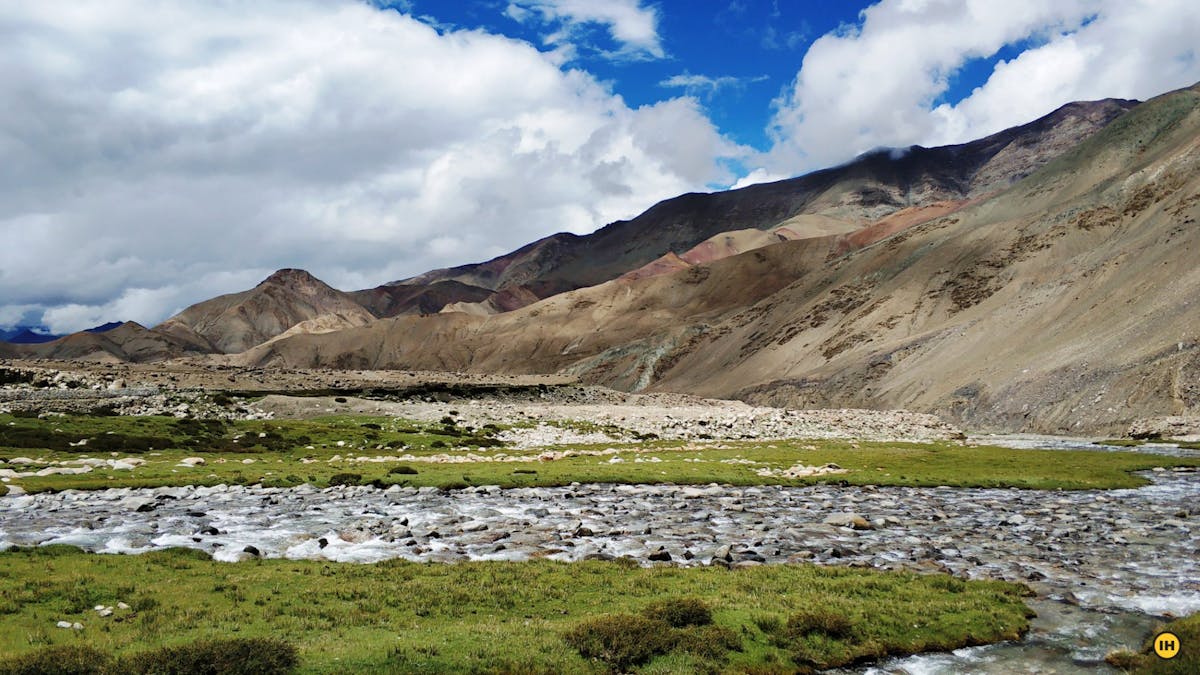
The Chhaba Chu streams, after crossing the steel bridge. Photo by Danny Slewe
After 20 minutes of level walk, you will come across large green marshes on your right, suitable for camping. Here cross the stream and take the trail going left. The walk to Kyamar campsite is easy and over relatively flat terrain. The trail swirls inward along the natural scope of the valley.
A hike of 30 minutes will lead to a change in the landscape as green marshes give way to gravel. After 10 minutes, you will reach the base of the plateau. From here, observe a 3 way opening of the valley- take the widest valley in front of you. This is the logical trail going to the grazing grounds of Kyamar. After walking for about 30 minutes, the green marshes will re-appear along Kyamar stream.
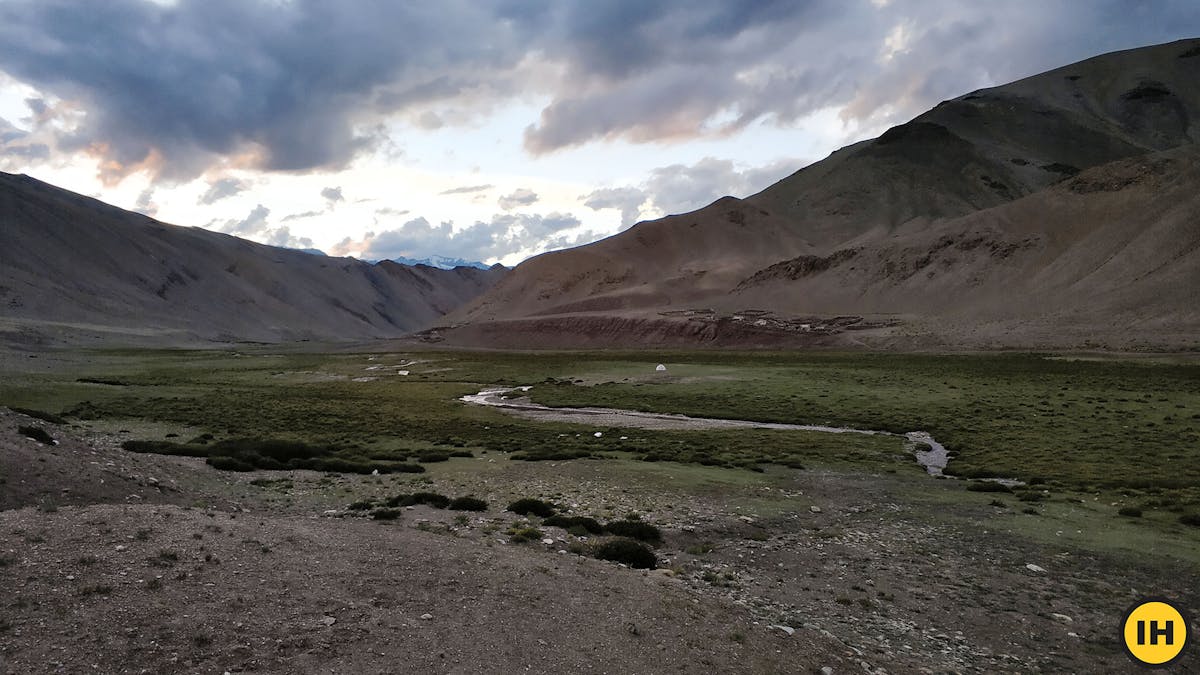
The Kyamar valley. Photo by Danny Slewe
You will be required to cross the stream towards the right and then back to the left side as per the trail in front of you. This section of the valley will take around one hour to traverse. The Kyamar grazing grounds are located at the base of the highest mountain ahead of you.
The final section of the trek will take around one hour. Look for a suitable camping spot next to the stream, which is on the right side of the trail. Kyamar’s grounds are surrounded by beautiful rocky hills on three sides of the valley.
Day 3: Kyamar – Kyamar La – Mandachalan La – Tisaling
- Altitude: 15,010 ft – 16,800 ft – 17,160 ft – 16,500 ft
- Distance: 15 km
- Duration: 8-9 hours
You have a long day ahead, so start early. Take the trail going to the base of Kyamar Mountain, cross the stream and re-join the trail coming from Rumtse. From the base of the mountain walk on the trail that naturally curves left. The green landscape is left behind as you now enter the barren mountainscape of the upper plateau of Kyamar.
The trail now gradually climbs up as you approach the base of Kyamar La. After about 20 minutes of walking you will reach the centre of the valley. From here, take the wide SUV trail on your right. It takes an hour to reach the base of the pass.
Observe a small bridge made of boulders and stones over Kyamar stream, cross over and take the trail that winds upward on your right. From here, it’s a steep ascent all the way to the pass. The final section of the ridge is littered with tiny wildflowers.
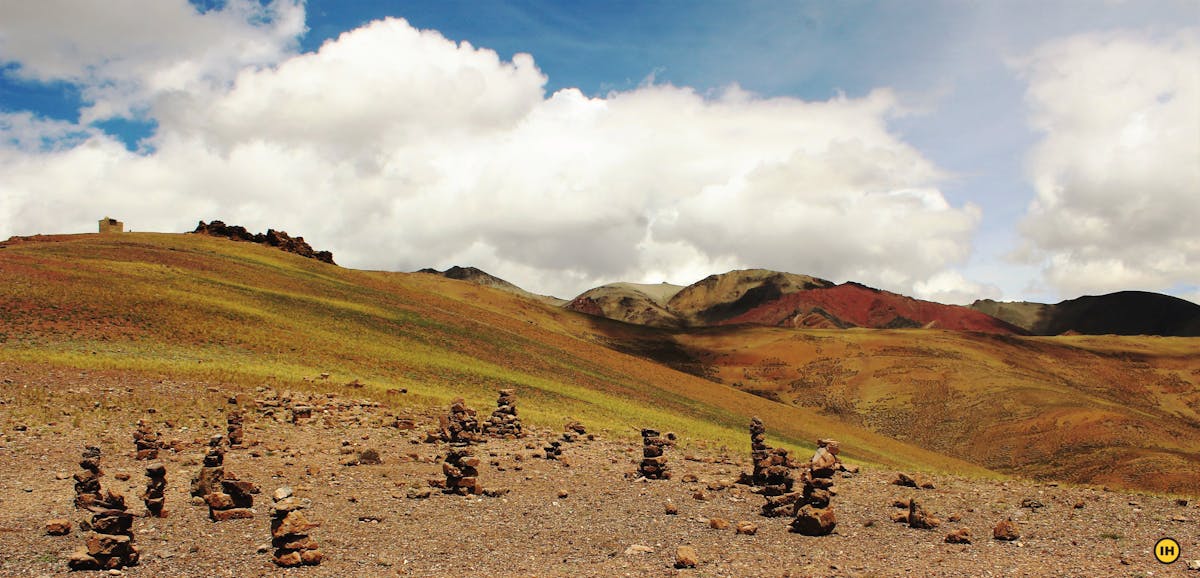
The colourful landscape of Ladakh as seen from Kyamar La. Photo by Manoj M N
Leaving Kyamar valley behind, take the trail going downwards on the right side of the ridge. It’s a level walk for 15 minutes, after which the descent becomes sharp. The trail is slippery because of loose gravel so descend carefully, especially if it’s raining. It should take 30-45 minutes to climb down to the river bed of Tassa Phu.
Take the trail going towards your left as you reach the river bed. Cross Tassa Phu. Observe two valleys that open in front of you. Take the one that is on your immediate left. The ascent towards Mandachalan La is a brutal and laborious slog of around 1,000 ft.
The initial section has a gradual ascent till the base of the pass. The climb up to the pass may take anything from two to three hours. The terrain is all dry, with no snow. Mandachalan La, like Kyamar La, is well-marked with cairns and prayer flags. The view from the top is a notch better than Kyamar La.
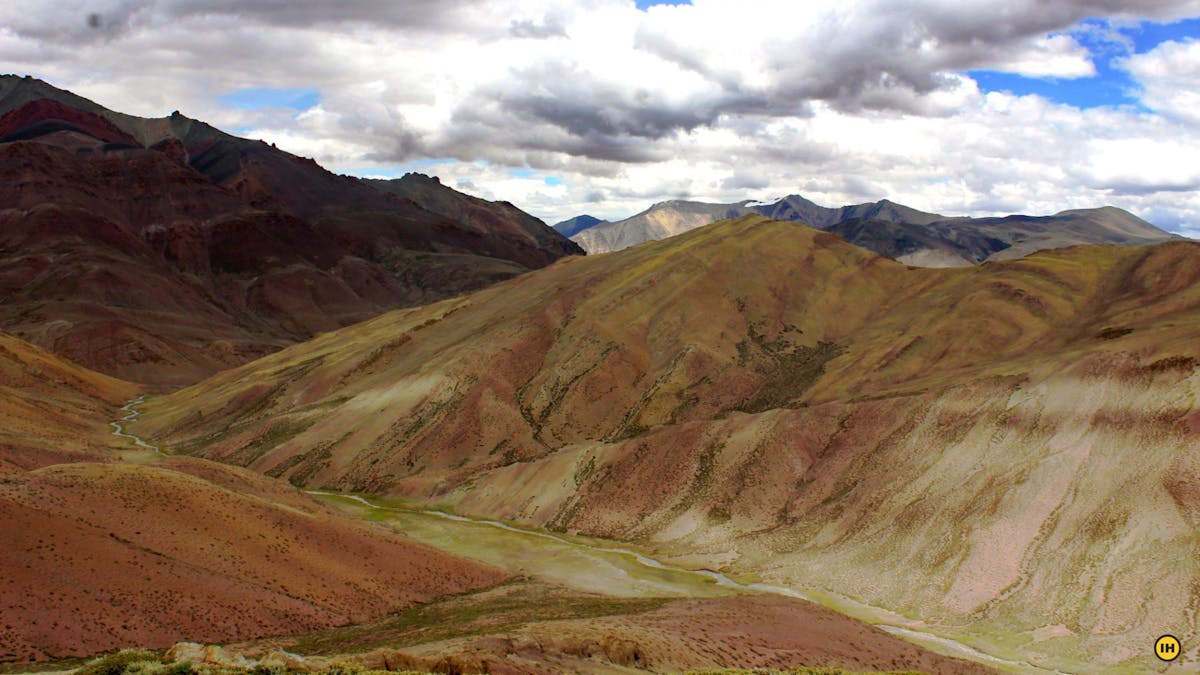
The descent to the river bed of Tassa Phu. Photo by Manoj MN
Observe the connecting ridge, below which lies Tisaling, your destination for the day. Go ahead on the right side of the ridge into a bowl-shaped valley. The trail is a level-walk of 2 km. It leads all the way towards the summit of an unnamed pass. From the pass, look for the green camping ground of Tisaling below.
Feel free to break from the trail and descend towards Tisaling. Tisaling is a beautiful high altitude grassland between Mandachalan La and Tisaling La.You will have to cross the stream and the marshland for a suitable camping spot at the base of Shibuk La.
Day 4: Tisaling – Shibuk La – Pongunagu (Tso Kar campsite)
- Altitude: 16,500 ft – 17,370 ft – 15,050 ft
- Duration: 6-7 hours
Start early in the morning to avoid the brutal afternoon sun. The initial part of the trek involves a steady 1.5km climb to Shibuk La, which is adjacent to the campsite. The altitude gain is around 1,000 feet.
Cross the stream and head to the base of Shibuk La. The trail moves south-east and the pass is clearly visible above. There are several ways to reach the summit.
The straight route requires you to cross the stream towards your left and make a straight line upwards to the summit. This route is the shortest. However, the route has the maximum incline and is strenuous.
The other way to go about it is to take the left side trail and reach the crest of the pass. This is a longer route but the ascent is gradual, at least initially. It takes about an hour to reach Shibuk La.
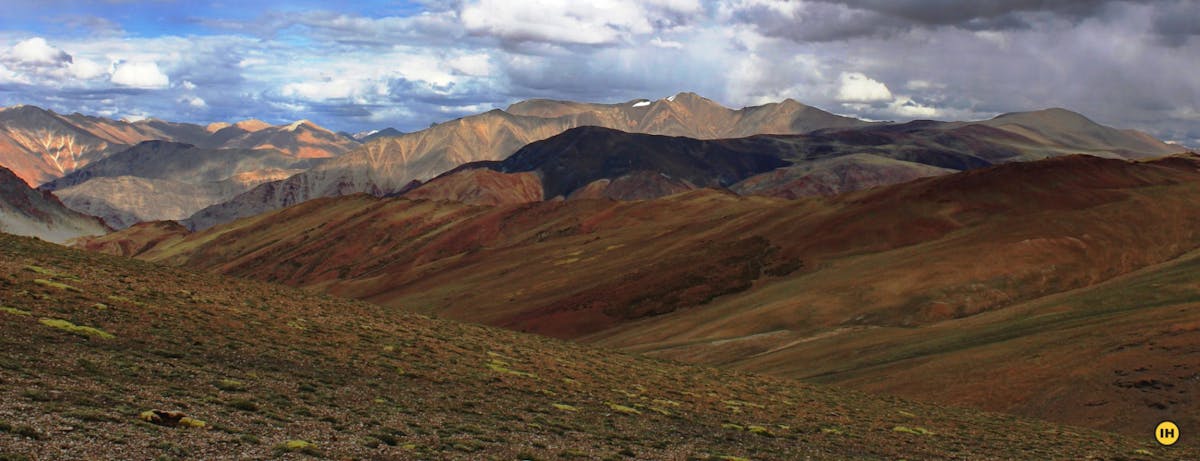
The view from Shibuk La. Photo by Manoj MN.
The descent from the pass to Tso Kar Lake is rapid and takes around 4-5 hours. This is fertile stretch of land that is frequented by the Changpas, who come with their livestock.
After an hour, a rocky scree-filled trail awaits you. The view of Tso Kar lake basin is closer than ever as you descend swiftly. About 2-3 hours into descent, you will exit Shibuk La valley and enter Tso Kar region. Follow the trail on your right and exit the valley.
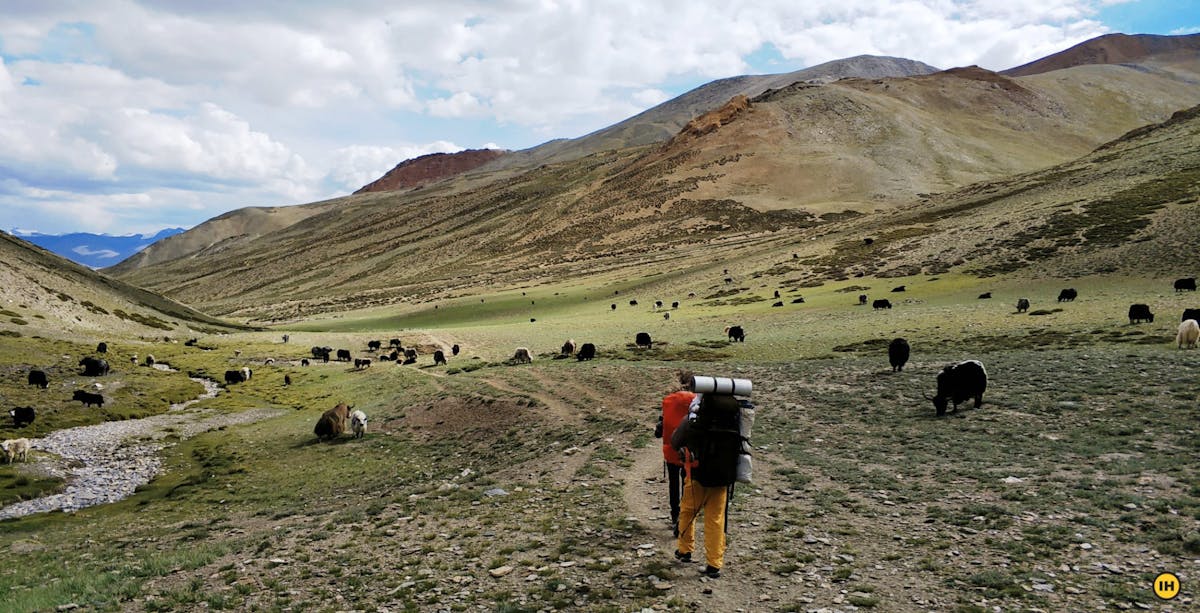
The path from Shibuk La to Tso Kar basin. Photo by Danny Slewe
The trail here is well-defined. The brackish barren land has a unique array of colours that keep changing as the day progresses. As you approach the rocky spur, there will be a series of two crests of the plateau that need to be traversed. This will take 30-45 minutes.
Once at the top of the plateau, follow the trail that winds right. A motorable road becomes visible below now, it comes from the Leh-Manali road and heads south to Tso Moriri. Towards the far right, after crossing this road is the campsite of Pongunagu. It takes half an hour of walking to reach the campsite. Take the trail from the left side of a large fenced grazing ground to reach the campsite, this is the shortest route.
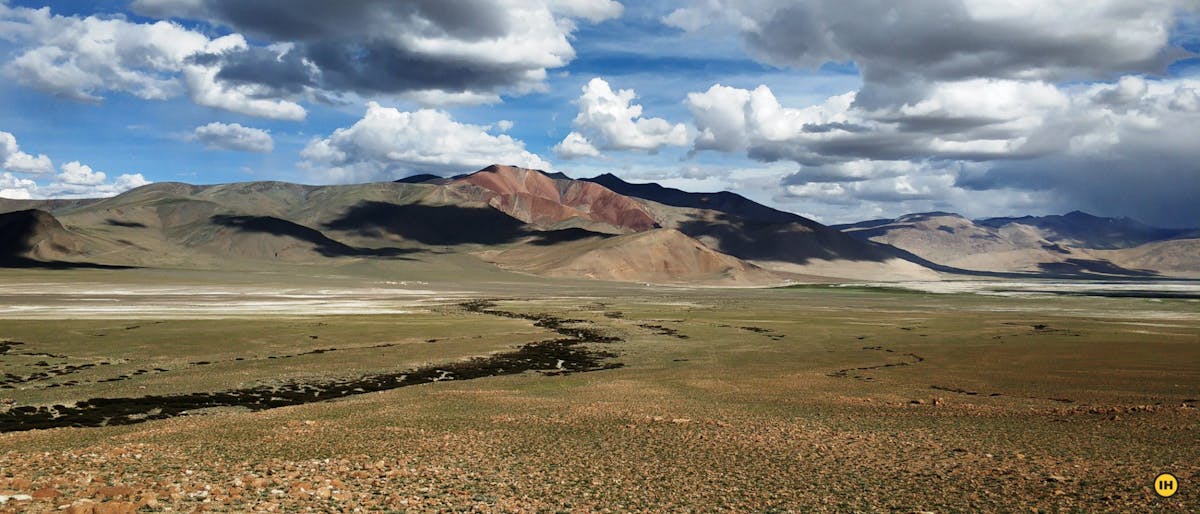
Approaching Pongunagu. Pongunagu is the only point of exit on the trek, in case of emergencies. Photo by Danny Slewe
Pongunagu has place for pitching tents. It also has ready-to-use tents on rent. Today is the day you can also skip cooking if you are so inclined- there is a small dhaba where you can get food and also stock up on your supplies if necessary (of course, it is costlier than Leh).
This is the only point of exit on the trek, in case of emergencies. A satellite phone is also available in the nearest village, Thugje, 3 km away from the campsite.
Day 5: Pongunagu to Nuruchen
- Altitude: 15,050 ft to 15,310 ft
- Distance: 16 km
Today is a relatively easy day of trekking over fairly flat terrain. Take the trail going south, facing the bank of Tso Kar lake. With the lake towards your left, the jeep trail is a pleasant one. Lookout for black necked cranes and Brahminy ducks. The trail passes by a few tea shops and winter shelters used by Changpa folk.
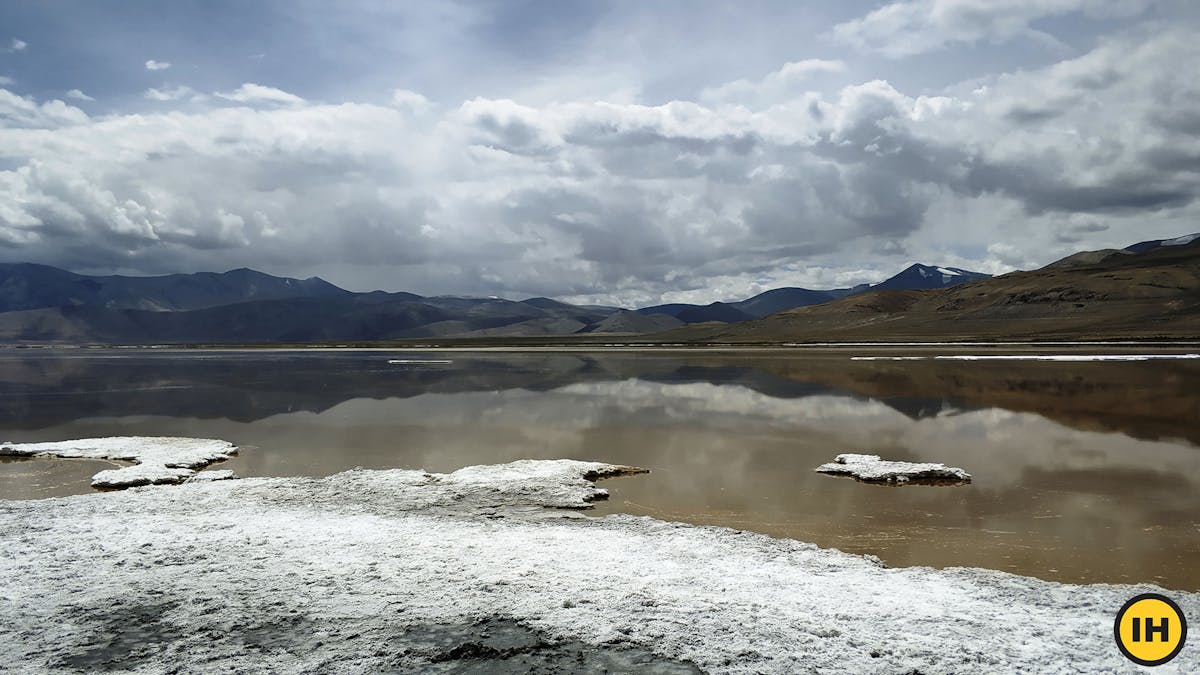
The salty Tso Kar. Photo by Danny Slewe
The valley widens as you walk towards Nuruchen, a Changpa village. Looming ahead are towering Zanskar ranges, where you can easily spot the Horlam La ridge. It’s an easy but long walk all the way to Nuruchen.
Nuruchen is used as a safe haven during bone-chilling winters by the Changpas. In the summers it looks like a ghost village with abandoned huts. There is a muddy stream gushing down from the Horlam La ridge, from the south west side. The rivulet is known as Nuruchen Lungpa and drains into the Tso Kar Lake. Pitch tents near the stream for the night.
Day 6: Nuruchen – Horlam La – Rachungkharu
- Altitude: 15,310 ft – 16,300 ft – 16,150
- Duration : 3-4 hours
Today’s trek is a fairly relaxed one, Horlam La is the easiest pass crossing of this trek.
Ford the Nuruchen rivulet and proceed further south west into the Tso Moriri Valley. You will notice an increased presence of Changpa nomads all the way to their settlement in Rachungkharu. Kiangs, Tibetan wild horses, frequent this trail. The trail is gravel and scree with short wild grass.

The camping grounds of Rachungkharu. This is one of the Changpa nomad’s summer settlements and you are likely to meet few of them here! Photo by Danny Slewe
The approach to the pass is easy with wide expanses suitable for SUVs to drive by. From the pass descend to the grassy marshes of Spanglung Serpa river basin. A forty minute downhill ridge walk will have you reach the mushy marshes of the river basin. Avoid walking on the slushy side of the marshland.
Look out for a suitable spot to ford the river. The trail now takes you on a 5 km stretch till the campsite of Rachungkharu. Rachungkharu is one of the Changpa’s summer settlements and unlike the other settlements this one will not be deserted. Camp next to the river for the night.
It is also possible to continue ahead to the next campsite, but this will make for a long, strenuous day. It is not recommended unless you are short on time or supplies.
Day 7: Rachungkharu – Kyamayaru La – Gyamar La – Gyamalhoma
- Altitude: 16,150 ft – 17,780 ft – 17,700 ft – 16,900 ft
- Distance: 13 km
- Duration : 6 hours
Expect a long day of trekking. Today, you have two of the most formidable pass crossings in store for you. The other challenge of the day is fording a series of rivulets, including a few that can be tricky.
Start early. Take the clear-cut trail to Kyamayaru La, moving south. Follow the left course of the passing rivulet as you approach the base of the pass. After around an hour, you can see the saddle of Kyamayaru La on your right. Take the trail ascending all the way to the pass.
It takes an hour to reach the top of Kyamayaru La. From the pass Kang Yatse is visible to the south. Ahead of you lies the wide valley of Gyam chu. Descend to the extensive river basin of Gyam Chu. As you reach the first river, walk beside it until you reach pasture grounds used by yak herders. Ford the river from here and move ahead into Gyam Chu basin.
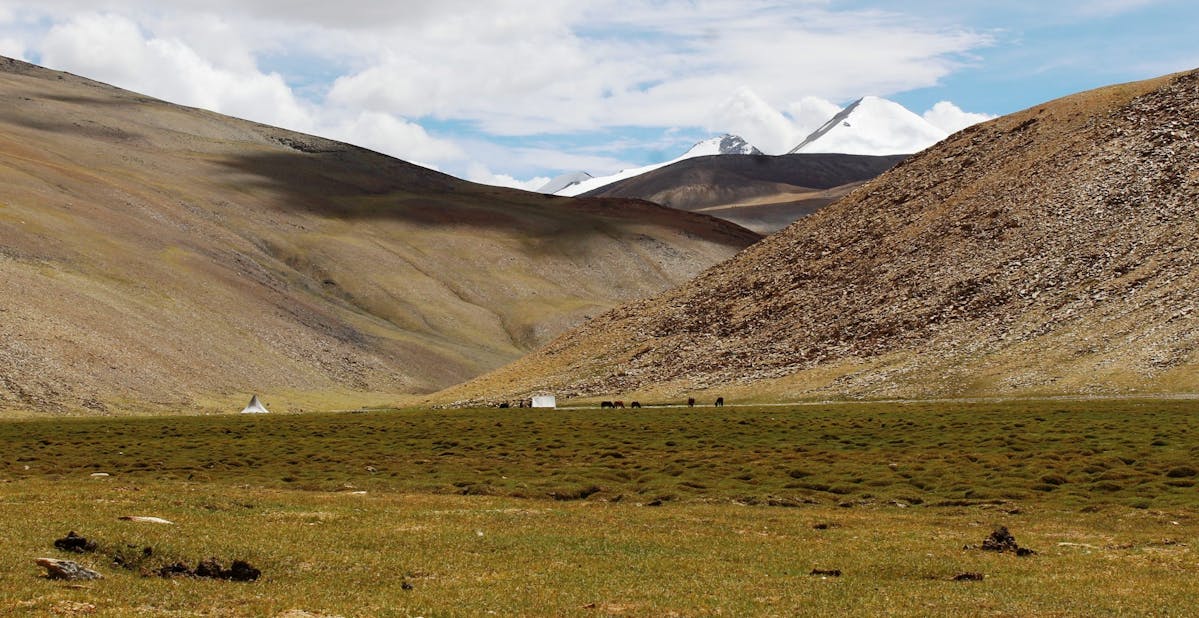
The lovely Gyam Chu valley. Photo by Danny Slewe
Below snow-covered Mentok ranges in the distance, observe several plateaus. Gyamar La ridge is in the middle of those plateaus. The ascent to the pass is steep. Keep a slow and steady pace as you approach the pass, it takes close to two hours to reach the top.
The pass has several prayer flags neatly laid out. The Mentok ranges (1 & 2) can be seen distinctly in the southern direction from here.
Descend from the pass towards the arid side of Gyamar basin. As you reach the banks of the stream, brace yourself for an exhilarating experience of river-crossings.
The rivers here are voluminous, deep and icy cold. Try boulder hopping or wade through the deep currents. The second river crossing appears shortly after the first one.
From here, head south towards the convergence of the rivulets that form the Gyamar River. Gyamalhoma campsite is across the river. Walk towards the bank of the river and prepare for the last river crossing of the day.
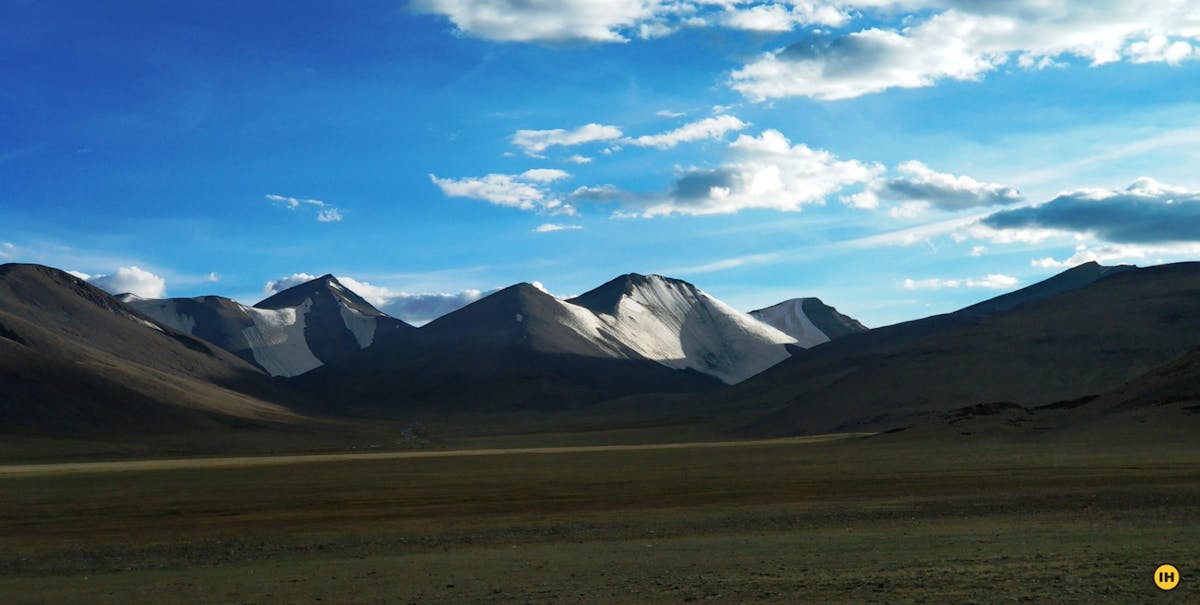
Brilliant views of Mentok ranges from Gyamalhoma campsite. Photo by Danny Slewe
Gyamalhoma is a beautiful pasture ground frequented by Changpa yak herders and makes for an excellent camping spot. It is the base camp for climbing Mentok 1 and 2 peaks. If you a day to spare (and the supplies) then this is surely a campsite worth spending an extra day.
Day 8: Gyamalhoma – Yarlung Nyau La – Karzok
- Altitude: 16,900 ft – 17,840 ft – 14,900 ft
- Distance: 14 km
- Duration: 6 hours
Today’s scenery is the best you’ll see on this trek. Prepare to cross the highest pass of the trek. Yarlung Nyau La is located at an elevation of 17,840 feet and has the best views the trek has to offer.
Start by taking the marked trail heading south east of the river valley. About an hour of level walk over receding pasture land will have you enter a rocky landscape. The valley is barren and prone to rock fall.
There are cairns on the trail that keep you from getting lost. The plateau of Mentok will come into view after around 2 hours. The saddle of Yarlung Nyau La is now clearly visible ahead as you gain altitude.
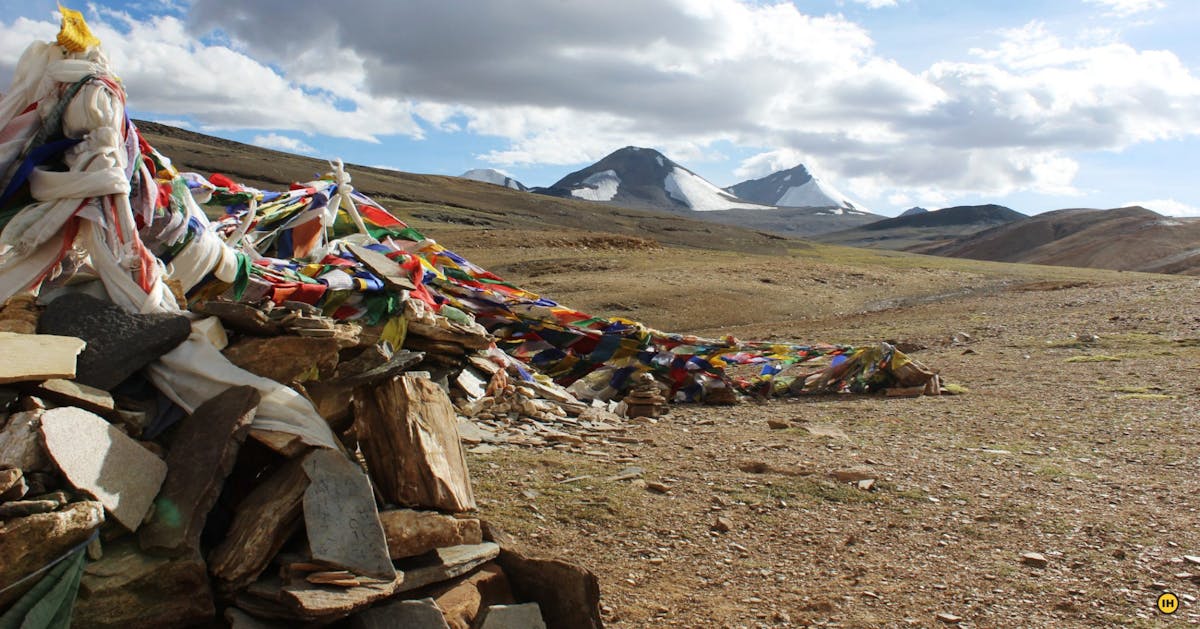
Yarlung Nyau La is located at an elevation of 17,840 feet and has the best views the trek has to offer. Photo by Manoj MN
As you reach the top, the first appearance of Tso Moriri lake is an overwhelming sight to fathom. The lake is huge and dominates the landscape. Some famous trek-worthy peaks like Chhamsher Kangri (21,725 feet) and Lungser Kangri (21,870 feet) are clearly visible from here. Standing at the highest point of the trek, bask in the view for a while before descending.
The descent to Tso Moriri lake loses altitude by 3,000 ft and is a long walk. Initially the descent is over very loose sand and an hour of descent will bring you to the pasture land of Karzok Phu. They are one of the summer grazing grounds used by the Changpas.
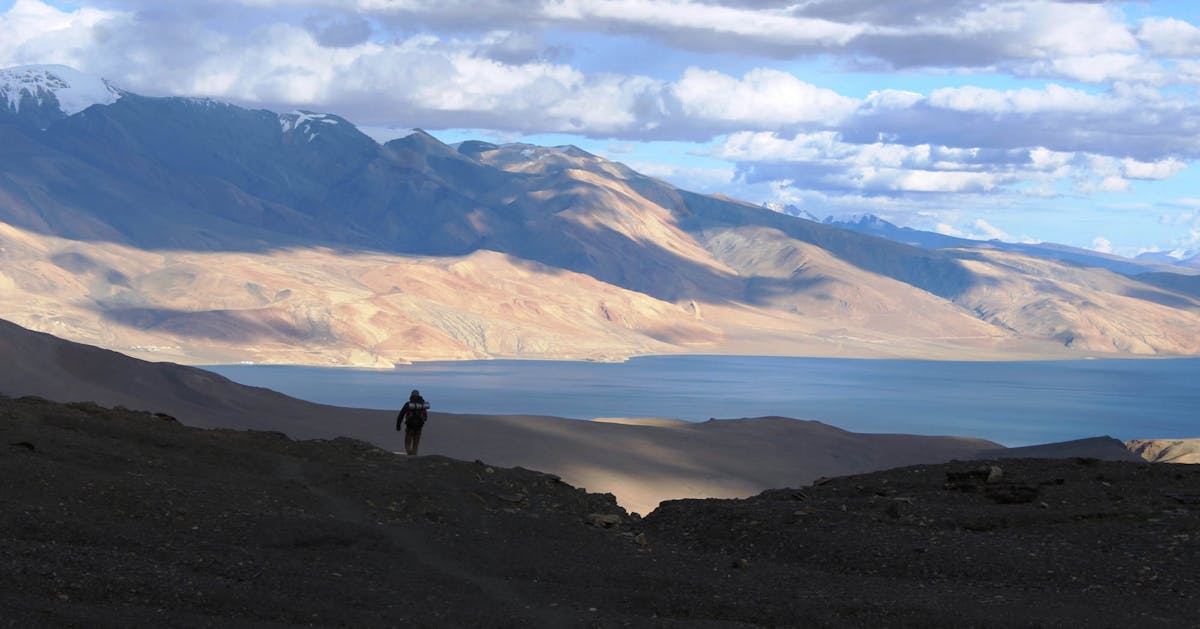
The first view of Tso Moriri on the trek. Photo by Manoj MN
The trail from here winds through an arid desert valley, beautiful in its own accord, all the way to Karzok. The bank of the stream that drains into Tso Moriri has some green marshlands. Walk for another two hours at a steady pace to reach the camping grounds of Karzok next to the stream. You can also head further to the village if you prefer the comforts of civilization.
Day 9: Drive from Karzok to Leh
- Altitude: 14,900 ft – 11,560 ft
- Distance: 210 km drive
- Duration: 6-7 hours drive
The trek ends at Karzok. Karzok is a beautiful village near the shores of Tso Moriri, with beautiful snow clad mountains all around. It would be an injustice to the place and yourself to head back to Leh without spending a day here.
You can spend a day just relaxing around the village, exploring Tso Moriri. Alternatively you can also do a day hike to any of the numerous peaks around Karzok.

Leh is around 210 kilometres from Karzok and it takes 6 to 7 hours to get there. Unfortunately, public transport between Leh and Karzok is very sparse. Buses run from Leh to Karzok on the 10th, 20th and 30th of each month and return to Leh the next day on the 11th, 21st and 31st (or 1st).
The other option to get to Leh is to look for a shared taxi, or any other vehicle heading towards Leh, that should cost you about Rs. 500 per person. If you need to hire a taxi it can cost anywhere around Rs. 5000.
➤ Difficult Sections
Most treks in Ladakh are higher up on difficulty scale because of the altitude and terrain. Leh, your base camp, rests at 11,560 ft! Almost all treks in Ladakh would involve pass crossings above 15,000 ft. It is where the name Ladakh (“land of high passes”) comes from, after all.
This trek is especially difficult – it starts at 14,000 ft and goes up to over 18,000 ft. There are days with at least two high passes to cross! This trek especially tests your endurance and lung power. Also, since this trek starts at very high altitude – the first few nights in a tent would feel suffocating as your body tries to acclimatise.
Day 3 – Kyamar La
Th approach to the first ever pass you cross on this trail is extremely steep. And as it is just the second day of trek, it can take the wind out of you.
Day 7 – Rachungkharu to Gyamalhoma via two high passes
This is a long day of trekking with two of the most formidable pass crossings in store for you. Both Kyamayaru La and Gyamar La are well above 17, 000 ft.The other challenge of the day is crossing series of rivulets, some of which can be tricky.
Day 8 – The descent to Karzok
While the approach to the pass itself is quite gradual and nice, the descent isn’t. It is a long tedious walk down to Karzok in loose sand. The only respite on the descent is the view of the expanse of Tso Moriri.
➤ Emergency contacts
Hospital: The closest one is Sonam Nurboo Memorial Hospital in Leh. They are well-equipped to deal with high altitude sickness. Karzok has an army camp with basic first aid facilities. Upshi, which would fall on the road to Rumtse and on the way back to Leh, also has a camp with basic medical facilities.
Police station: The only police station is in Leh. The police station is on Sankar Road.
ERSS: For any kind of emergency help, you can contact the Pan-India Emergency Response Support System (ERSS) number- 112 . However, bear in mind that there’s poor to no network coverage on the trail.
Tip: Jot down the above mentioned contacts on an easy-to-access card. This can come in handy during emergencies.
➤ How to get fit for the Rumtse to Tso Moriri trek

The Rumtse to Tso Moriri trek is classified as a difficult . You trek up to an altitude of over 17,840 feet. You start from an altitude of 11,562 feet at Leh and reach the highest point of 17,840 feet. You have to make sure your lungs are strong for this.
On the Rumtse to Tso Moriri Lake Trek, apart from huge altitude gains, the trail is long and tiring. This requires a good amount of endurance.
In order to be prepared for a high altitude trek, you should have a combination of distance and speed targets . In case you’re just starting with a regular fitness routine, you can phase out your targets in the following manner –
- Target completing 10 km in 75 minutes before the start of the trek
- Gradually bring up your speed to do 5 km in 30 minutes
- Start increasing the distance you jog to 10 km in 75 minutes
Before the start of the trek, you should be able to cover 10 km in 75 minutes.
Strength – Target 4 sets of squats with 20 in each This is another area you should work on. You will need to build strength in your muscles and in your core body. You can do some squats to strengthen your leg muscles. Start with 3 sets of squats, with 15 squats in each set and work towards reaching your target in 3 weeks. Apart from this, you can add planks and crunches to your work out.
Flexibility Another aspect that will help you trek comfortably is flexibility. For this, you can do some stretching exercises – stretch your hamstrings, quadriceps, hip flexors, lower back muscles and shoulders regularly. Carrying a backpack, however light, can become a strain after a while. These exercises will help you to be in good shape before the trek.
Also consider HIIT training regime for a trek like this one.
➤ What to take on the Rumtse to Tso Moriri trek

Rumtse to Tso Moriri is a difficult trek . The trek starts at an altitude of nearly 14,000 ft which is often the highest most other treks get to, and one goes to an altitude of almost 18,000 ft. Trekking at these altitudes even on flat terrain can be physically demanding.
Add to it seven pass crossings and you have a pretty challenging trek ahead of you, especially if you do it independently. To comfortably complete the trek and enjoy the spectacular mountain scenery, be sure to prepare well.
Bare Necessities:
- Trekking shoes: Carry trekking shoes and not sports shoes.The trail from Rumtse to Tso Moriri goes mostly over dirt and gravel, along with some stream crossings. So it is imperative that you have a good pair of trekking shoes. You will likely encounter very little, if any, snow so waterproof trekking shoes are not required.You can watch this video to learn to choose the right trekking shoes .
- Backpack (40-60 litres): A backpack with sturdy straps and a supporting frame is a must. A rain cover for the backpack would be desirable but not essential as you’ll be trekking in an arid region. Since you have to carry camping equipment and supplies, get a backpack that is at least 55-60L. Of course if you are hiring mules/porters you can get by with a smaller 30-40 litre backpack.
On a trek, carry fewer clothes than you would normally need. But enough to keep you warm.
- Four warm layers: The highest altitude you reach in this trek is 17,840 ft and the climate may require you to have more warm clothes. You will need at least three warm layers (two light layers such as fleece and woollen and one padded jacket) for this trek.
- Two trek pants: Two pairs of pants should suffice for this trek. Wear one pair and carry an extra pair just in case it rains or you need to change at some point on this long trek. Denim/jeans and shorts are not suitable for trekking.
- Three t-shirts: Carry light, full sleeved t-shirts that prevent sun burns on the neck and arms. You could even get by with just two, but do not carry more than four in any case, you won’t need them.
- Thermals (Optional): Those who are more susceptible to cold can carry thermals to wear at night.
Accessories
- Sunglasses : Sunglasses help prevent snow blindness. There might be snow close to some of the passes and wearing sunglasses would be advisable. Moreover because of the altitude, the sun is particularly harsh in Ladakh and sunglasses would be required.
- Suncap : The sun is harsh at high altitudes, which is why a sun cap is mandatory.
- Synthetic hand gloves: Avoid woollen gloves as they will get wet if you touch snow. You can add a fleece glove as an inner layer, and wear two gloves on each hand if you’re more susceptible to cold.
- Balaclava : You’ll need this to cover your head, as most of the heat escapes from your head.
- Socks (2 pairs) and a pair of woollen socks: Carry at least two sports socks for trekking, and another woolen socks for the night.
- Headlamp/LED torch: Mandatory
- Trekking pole : Watch this video to understand why you need a trekking pole .
- Toiletries : Sunscreen, moisturizer, light towel, lip balm, toilet paper, toothbrush, toothpaste, hand sanitiser. Do not carry wet wipes since these are not biodegradable. If you do happen to use wet wipes to clean up after a trek, make sure you bring them back with you.
- Cutlery: Carry a spoon, coffee mug and a lunch box. We insist on trekkers getting their own cutlery for hygiene reasons.
- Two water bottles: 1 litre each
- Plastic covers: While packing, use Ziploc covers to compartmentalization of things and carry few extra plastic bags for wet clothes. You also need ziploc packets to keep soiled sanitary napkins if you use them on the trek.
Camping supplies
- Tent: You will need to camp throughout the trek as there are no villages along the way, so carry a tent. Only at the Tso Kar campsite is it possible to stay in a readily available tented accommodation.
- Sleeping bag and mat: Expect some really cold nights. This trek traverses through the cold desert of Ladakh, and you sleep at very high altitudes close to snow-clad mountains so expect very cold nights. So carry a sleeping bag which is rated for sub-zero temperatures. You will also need a good sleeping mat for support and to insulate from the freezing ground below.
- Stove: Get a reliable stove, you get many lightweight compact ones- some of them can be packed into a box the size of a matchbox.
- Fuel: Carry fuel that is compatible with the stove you plan to carry, and ensure that it will work at high altitudes. The hans paramount canisters work well (they are primarily butane based, with a mix of propane). Two small canisters(350g) will suffice for 2-3 people. If you’re carrying cylinders make sure they will be compatible with your stove type.
- Food: You should have enough food supplies for a week. Your only chance to stock up on supplies would be at the Tso Kar campsite though it will be cheaper to buy it from Leh itself. Carry whatever suits you, just make sure it is easy to cook and you’ll get enough nutrition. Noodles and ready to eat foods are convenient options. Carrying soups, tea or similar hot drinks (not alcohol of course) is highly recommended. Also carry plenty of dry food such as nuts, energy bars, chocolates, cheese etc.- it will come in handy while you are trekking.
Mandatory Personal Medical Kit
- Diamox – 10 tablets (to prevent AMS)
- Crocin – 6 tablets (fever)
- Avomine – 4 tablets (motion sickness)
- Avil 25mg – 4 tablets (allergies)
- Combiflam – 4 tablets (Pain killer)
- Disprin – 6 tablets (headache)
- Norflox TZ & Lomofen– 6 tablets each (diarrhea)
- Digene – 10 tablets (acidity)
- Omez/ Rantadine – 10 tablets (antacids)
- Crepe bandage – 3 to 5 meters
- Gauze – 1 small roll
- Band aid – 10 strips
- Cotton – 1 small roll
- ORS – 10 packets
- Betadine or any antiseptic cream
- Moov spray (aches, & sprains)
➤ How to reach the base of Rumste Tso Moriri Trek
The trek starts at Rumtse and ends at Karzok. Leh is the ideal point to start your journey for the trek.
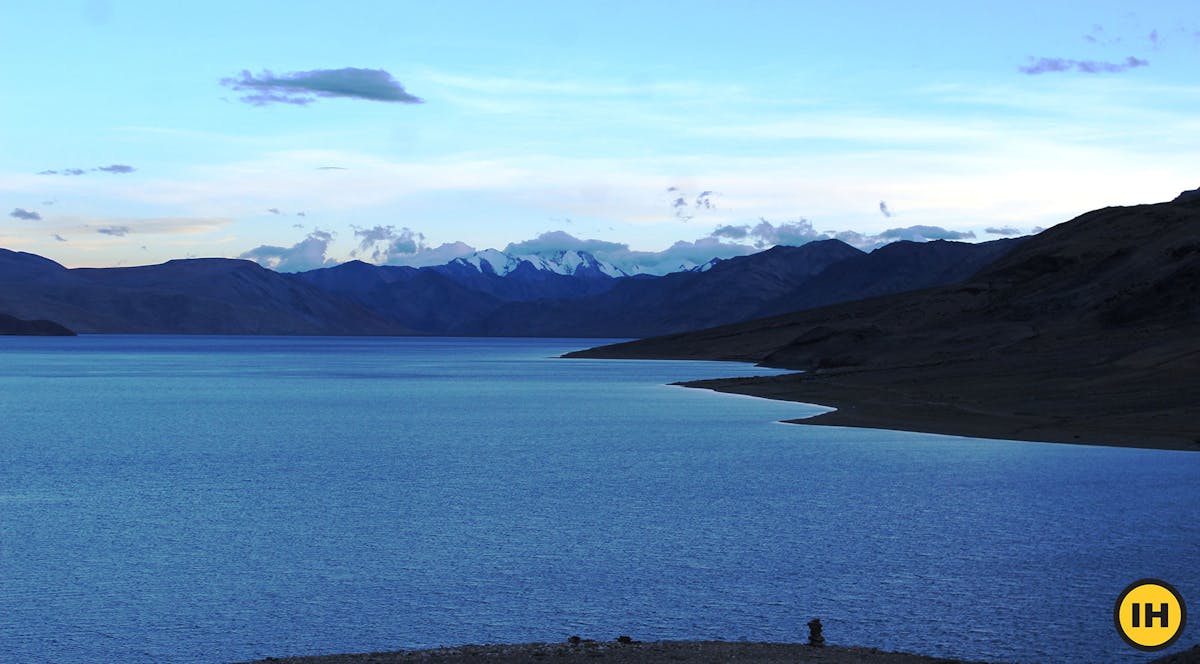
The expansive Tso Moriri lake. Photo by Manoj MN
By air: The easiest way to get to Leh is to fly in. Leh is accessible by air from all major Indian airports. If you do fly in, you should rest in Leh for at least a day in order to acclimatize to the altitude (11,560 ft).
By road: The more adventurous but time-consuming way to get to Leh is by taking the road, either from Manali or from Srinagar. The Manali-Leh route is arguably more scenic than the Srinagar-Leh route, though it is also higher. Buses as well as shared taxis run on both Manali- Leh and Srinagar-Leh routes.
Travelling by the HRTC bus is the cheapest way to get to Leh from Manali . It takes two days and costs about Rs. 800, halting at Keylong for the night. Keylong is a nice town in itself and it would be a good idea to stay there for a day. A slightly more expensive but convenient option is the HPTDC run deluxe bus which stops at tourist locations along the way. It costs around Rs. 3000, which includes tented accommodation and food at Keylong.
There are also many privately run shared buses and taxis available, but be sure to get the details of the route. If you do opt for a shared taxi take one that stops overnight, preferably at Jispa. Avoid the taxis that run non-stop from Manali to Leh , it will be sheer torture.
➤ Frequently Asked Questions
Can I do this trek on my own?
Certainly. You do not need any technical skills to complete this trek. The trail is also well defined for the most part so a guide is not necessary. There are a couple of portions where the trail is not well defined though, so do your homework. Moreover you will likely meet some Changpas everyday, or maybe other trekkers, so be sure to ask them about the trail. You will however be carrying a lot of load so you can consider hiring porters/mules, though you can certainly carry it yourself as well.
Are there any facilities to stay or eat along the trail?
No, there are no villages/dhabas or anything of that sort along the trail. Only at the Tso Kar campsite (Ponganagu) you will find a dhaba that serves food and where you can sleep as well. For all other days be prepared to camp and cook your own food.
What permits will I need to do the trek?
Entry to the Tso Moriri region is restricted because of its proximity to the India-Tibet border and you will need an Inner Line Permit (ILP). Indian nationals can easily obtain the ILP from the Leh DC office by providing any government issued ID, but foreign nationals can only apply through travel agencies. Also, if you are a foreign national, keep in mind that for foreign nationals the permit is issued only for a duration of seven days, so make sure your travel agent can arrange back to back permits for you.
ATM: Leh is the last point where you can withdraw cash for this trek.
Mobile Network: There is no signal on the trail. Leh and it’s surrounding villages are last points where you can get any signal. There will be mobile network on the road to Rumtse until Upshi village. You may even get some signal at Chumathang. Only postpaid SIMs work in Ladakh region.
➤ Places to visit after your Rumtse to Tso Moriri trek
The Rumtse to Tso Moriri trek ends in Karzok. Once you are back in Leh from Karzok, there are plenty of things you can do.
Visit Monasteries, especially Hemis Monastery
There are many monasteries that are worth a visit in Ladakh. However, the over 400-year-old Hemis gompa may be the best of them all. It is the grandest monastery you will see. Other monasteries you should see are Spituk monastery (unusual for it’s worship of Tara goddess), Thiksey (which is modeled like the Potala palace of Tibet), and Matho. If you don’t mind going further from Leh, consider going to Lamayuru and Alchi as well. They have few of the oldest monasteries in Ladakh.
Leh Palace and Tsemo Monastery
The Leh palace and Tsemo monastery are the most recognisable landmarks above Leh city. There is a nice path to the palace from Leh main bazaar to the palace that you can take. The Leh palace was built in 17th century by Senge Namgyal. Senge shifted Ladakh’s capital from a village called Basgo (recognizable as backdrop in Bollywood movie Dil Se) to Leh with the building of this palace. From the palace, you can take the path further uphill to Tsemo monastery. The view from Tsemo is spectacular – the entire Stok range is in front of you!
Magnetic Hill and Pathar Sahib
They say that the first Sikh guru Guru Nanak had left a palm imprint on a rock. This is now preserved in Patthar Sahib gurudwara. The Gurudwara falls on the Leh-Kargil road. Further along the Leh-Kargil road, is Magnetic Hill. The Magnetic Hill is an optical illusion – the layout of the surrounding is such that makes a slight downhill slope look like an uphill slope. So, if a car is left to it’s devices, it will appear to roll uphill.
Shanti Stupa
The Shanti Stupa is only recent part of Ladakh’s history. It was made by Japanese peace sect an is filled with murals depicting Buddha’s life. Not only is this a great monument to visit, the view from Shanti Stupa of the entire Leh town and Stok range is incredible. Truly a moment for the photos.
Hot springs in Puga or Chumathang
If you have the time, you can consider visiting Chumathang hot springs. It falls on the way to Leh from Karzok. Puga is another valley in Changthang with geothermal pools, but Puga is a deviation from the Karzok to Leh route.
➤ Trek Contribution
Trek documented by Alok Tiwari, Manoj MN, Danny Slewe, Vaibhav Chauhan
Authors: Alok Tiwari & Aswati Anand
Upcoming Treks

Kodaikanal Avocado Hill T...
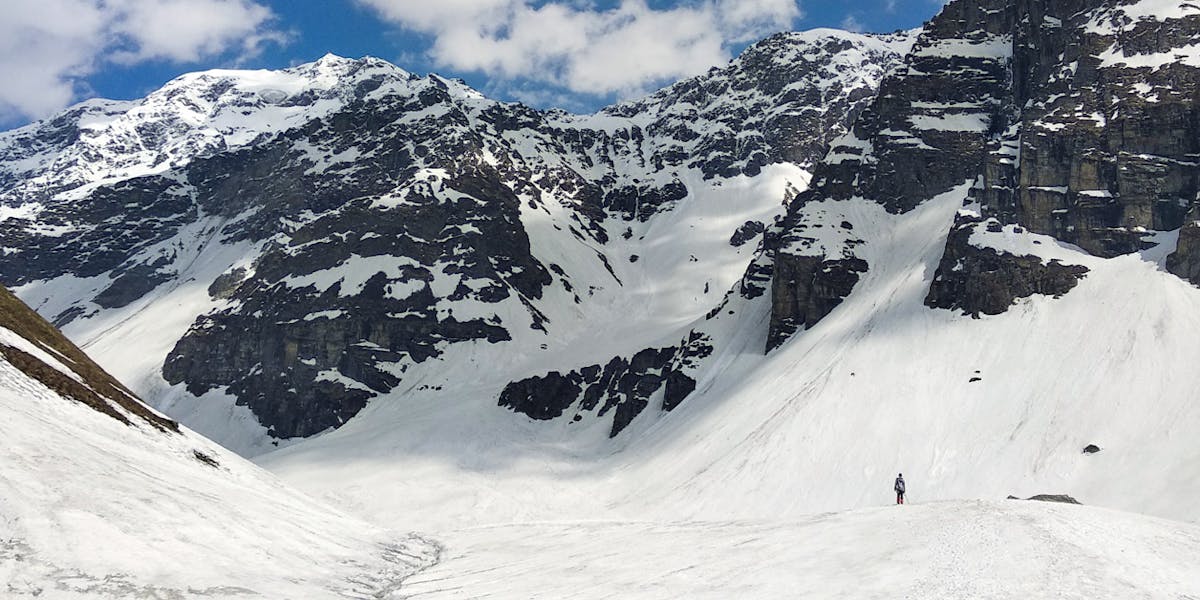
Buran Ghati Trek
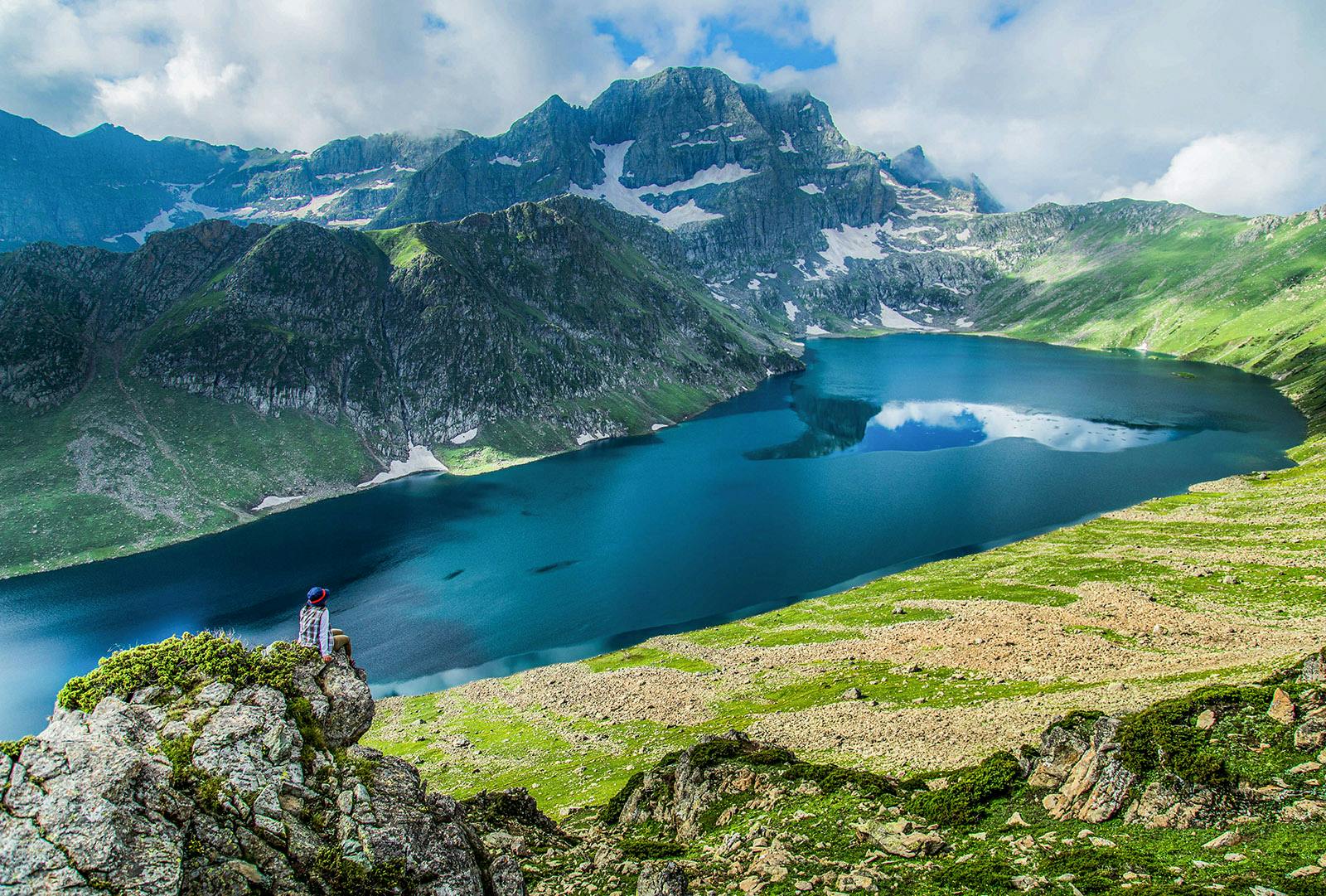
Tarsar Marsar
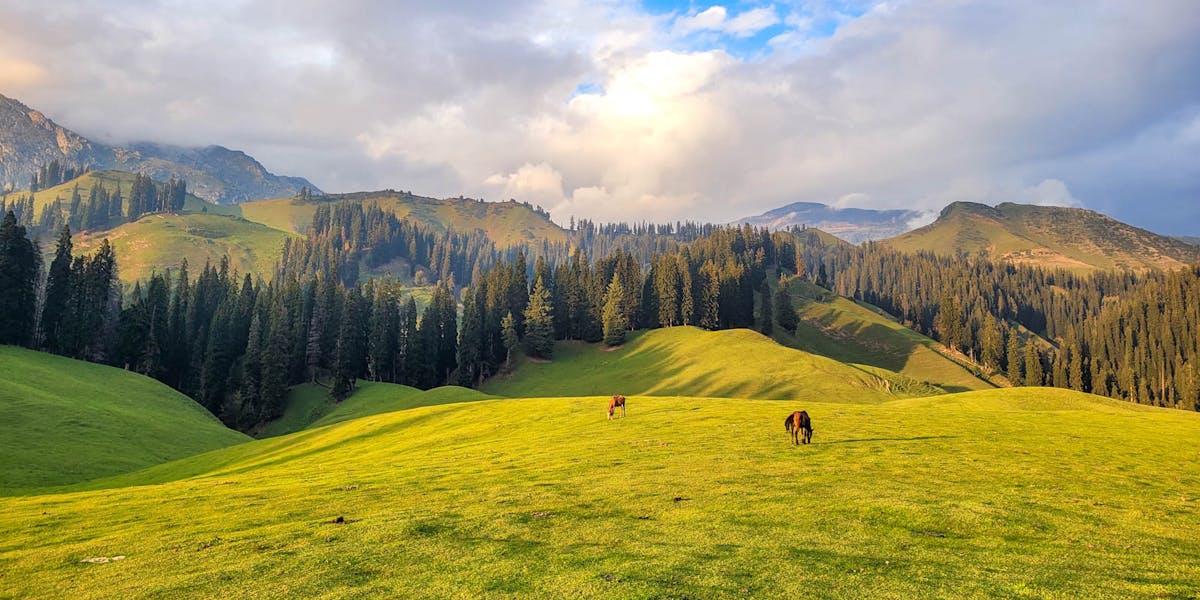
Nafran Valley
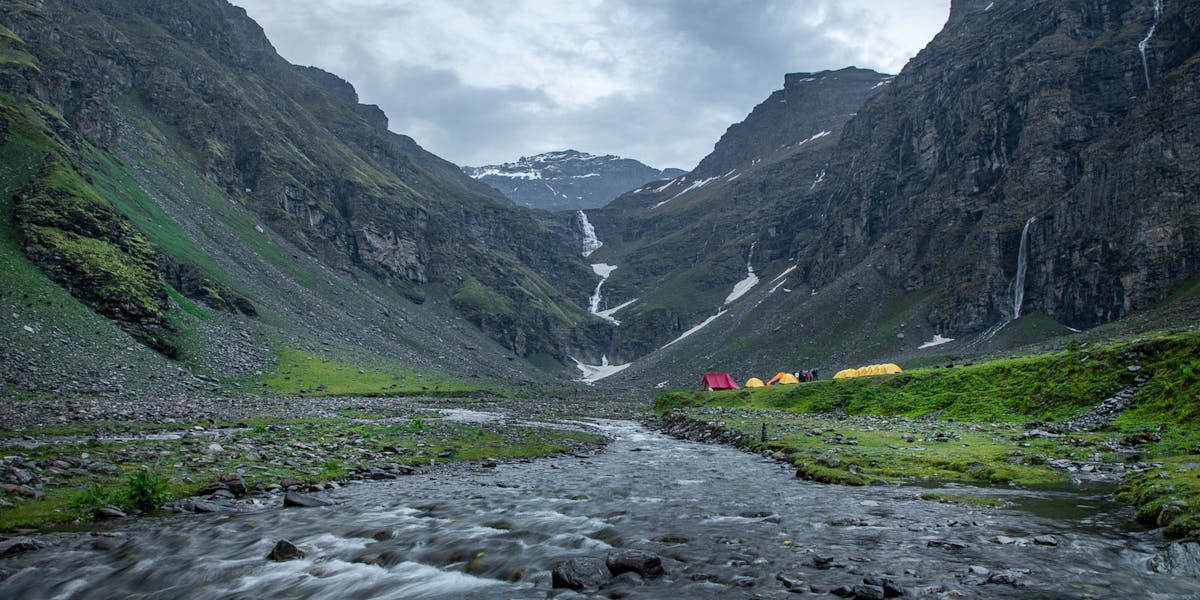
Rupin Pass Trek
Sign up for our much loved Weekly Mailer
We have terrific trekking tips, trek updates and trek talks to look forward to
Treks by Categories
Treks by season, treks by month, treks by duration, treks by difficulty.
- Easy - Moderate
- Moderate - Difficult
Treks by Region
- Uttarakhand
- Himachal Pradesh
- Lahaul and Spiti
- Jammu & Kashmir
- West Bengal
- Chhattisgarh
Treks by Experience
- Family Treks
- Stargazing Treks
- Senior Treks
- Adventure Therapy
- Summer Camps
- Youth Camps
- Cancellation policy
- Work with us
- Our sustainability practices
- Privacy Policy
- Terms & Conditions
080 468 01269 Mon to Sat - 9.30 AM to 7.30 PM Sun - 9.30 AM to 6.30 PM
Bengaluru Office
139, Defence Colony Road, Defence Layout, Sahakar Nagar, Bengaluru, Karnataka 560092
Dehradun Office
No.85/10, Neshvilla Road, Dehradun - 248001
© 2024 Indiahikes Private Limited
All images are copyrighted by their respective authors.

[email protected]
+977-1- 4544435, sunday - friday: 9 am - 4 pm, tso moriri trek in ladakh.
- Trekking in India
Rumtse to Tso Moriri Trek in Ladakh into the Changthang Wildlife Sanctuary 11 Nights/12 Days
About tso moriri trek in ladakh.
The Rumtse to Tso Moriri Trek is a unique and challenging adventure that takes you through some of the most scenic landscapes in India’s Ladakh region. The Rumtse to Tso Moriri trekking trail offers breathtaking views of snow-capped mountain peaks, crystal-clear lakes, lush green valleys, and barren deserts. Along the way, you will also have the opportunity to experience the traditional nomadic lifestyle of the local Ladakhi people, who rely on their livestock for survival. The trail takes you through several remote villages where you can interact with the Changpas, the Ladakhi Nomads, a rare chance to learn about their lifestyle, who move from one valley to another with their herds and Rebo Tents, a unique tent made of yak wool. Changpas are an endangeredethnic group since the roads enter the vast nomadic valleys, and youngsters are attracted to modern cities such as Leh. The Nomads are now disappearing from the Himalayas, Including Tibet, Mongolia, and many parts of the World. We may encounter the groups of Changpas in their social gatherings and grazing animals and enjoy listeningto their songs, which are full of sweetness as they sing songs, even if we don’t understand them and rhythmically twirl with them. The most famous dance is Jabro, often performed with a typical musical instrument shaped like a sitar. Pashmina goats, Yaks, Sheep, and Horses are other attractions in this barren Himalayan Highland.
As you begin the trek from Rumtse, you will be greeted by the stunning views of the snow-capped peaks of the Himalayas. The trail takes you through several high-altitude passes, including the Kyamayuri La Pass and the Mandalchan La Pass, offering grand panoramic views of the surrounding mountains. The trail also takes you through several small villages, where you can interact with the locals and learn about their unique culture and way of life.
One of the natural highlights of the trek is the beautiful Tso Kar Lake, a saltwater lake home to various migratory birds. Barren mountains surround the lake, which is a popular spot for birdwatching. The trail then continues towards Tso Moriri, a stunning high-altitude lake surrounded by snow-capped peaks. The lake is a paradise for nature lovers and offers a serene and peaceful atmosphere.
The beauty of the Rumtse to Tso Moriri Trek is not just limited to the scenic landscapes and nomadic life but also the unique flora and fauna you will encounter. The trail is home to several rare species of plants and animals, including the elusive snow leopard, Tibetan wild ass, and Himalayan blue sheep.
Overall, the Rumtse to Tso Moriri Trek is a perfect adventure for experienced trekkers looking for a combination of natural beauty, cultural experiences, and outdoor challenges you will never forget.
Day 01: Arrive in Leh 3,500m.
A scenic flight from Delhi floating over the monsoon clouds puts you at Leh Airport. As you walk through the dramatic runway just below Leh town, you will receive a warm welcome from our local representatives at Leh, who are mainly Buddhist. The journey to your lodge is 5 kilometres and takes 20 minutes—no activity for the rest of the day. Take rest and acclimatize. But who can stop to experience the beauty of the newly arrived town? A colourful market just beneath the old Royal Palace is a not-to-miss place for a walk before initiating a trek.
Leh is Ladakh’s largest town and capital, at 3,500 meters above sea level, surrounded by snow-capped mountains. The city is known for its stunning natural beauty, rich cultural heritage, and adventure tourism opportunities. It is also a popular destination for trekkers, mountaineers, backpackers, and Buddhist pilgrims. The town has many ancient monasteries and palaces that showcase the region’s unique architecture and history. The people of Leh are warm and friendly, and the city has a laid-back vibe that makes it a perfect place for a peaceful getaway.
Day 02: Guided tour of Shey Palace, Thiksey and Hemis
Today, you will visit some ancient monasteries in this region, for which you need to drive about 90 kilometres. Shey Palace is located about 15 km from Leh. Shey Palace is a historic Buddhist monastery in Ladakh’s Leh district. The Shey Palace was founded at the beginning of the 17th century AD by Deldan Namgyal and was once the summer capital of the Ladakh kingdom. It is renowned for its beautiful architecture that showcases a blend of Tibetan and Indian styles. The palace (inside the Dresthang Gompa) also houses a 12-meter-high statue of Shakyamuni Buddha made of gilded copper, considered the largest in the region. There are lots of Stupas and Gonpas built around the palace. The Shey Palace monastery is a popular tourist destination that attracts all kinds of visitors who come here to experience its stunning beauty and learn about the rich cultural heritage of Ladakh.
Thiksey Monastery is a Tibetan Buddhist monastery near Shey Palace, about 17 km from Leh. The monastery is on top of a hill and offers stunning scenery of the surrounding mountains. It is one of the largest monasteries in Ladakh and is home to a community of monks who follow the Gelugpa tradition of Buddhism. The monastery complex houses several temples, prayer halls, and other buildings, including a nunnery. The monastery’s main prayer hall contains a 15-meter-high statue of Maitreya Buddha, the giant statue in Ladakh. The monastery also hosts an annual festival called the Gustor Festival, celebrated with great pomp and show. The festival involves the performance of sacred dances by the monks and attracts many tourists worldwide.
Hemis Monastery, located about 45 km south of Leh, is a Himalayan Buddhist monastery in the Hemis region of Ladakh. The Hemis Monastery is founded in a lovely mountain valley, surrounded by streams and fronted by long Mani walls. It was established in the 11th century and is considered Ladakh’s largest and wealthiest monastery. The monastery is known for its stunning architecture, beautiful frescoes, and rich collection of ancient relics, including thangkas, murals, and statues. Being a Drukpa-order Buddhist monastery, Hemis Monastery is also famous for its annual Hemis Festival, celebrating the birth anniversary of Guru Padmasambhava, the founder of Tibetan Buddhism. The festival is a colourful and vibrant event that attracts thousands of visitors from all over the World. Overnight at Leh.
Day 03: Day hike for acclimatization.
Day 04: drive leh to rumtse 4100m. and trek to kyamaer 4383m..
Have breakfast and take a scenic two-hour drive to Rumste village, located on the Leh-Manali Highway, just after the Tanglangla Pass. This pretty village has several ancient stupas and small monasteries here and there. Your kitchen team and horsemen will welcome you to Rumste, the starting point of the trek. Leave the vehicle; your guide will introduce you to the rest of the staff and start trekking towards Kymar, a distance of 3 hours walk/11 kilometres. The trail leads through a beautiful pasture valley, where the Changpas (the Ladakhi Nomadas) let their goats and Yaks graze. In olden times, this route was used by the Changpas to trade the salt they obtained from Tsokar to the other regions of Ladakh. Tsokar is also known as Salt Lake. When you trek along this Salt Lake route, you will see mind-blowing landscapes that will make you more enthusiastic about this trip. Overnight in a tented camp.
Day 05: Trek to Tisaling 4850m. via Kyamar-La 5180m. and Mandalchal La 4996m.
Leisurely wake up, breakfast and start the trek. After walking for half an hour, you will arrive at the Kyamar la Pass at 5180 metres. Still, the ascent is easy. The Kyamar La Summit offers breathtaking views of the snow-capped Ladakh Range, including the famed Mt. Kang Yatse. Descending from the pass, you will reach another pass called Mandalchan la at 4996 metres, and the trek ends in Tisaling for an overnight camp. The total distance is 14 kilometres, but it takes 6 hours to walk.
Day 06: Trek to Pangu Nugu (Pongonugu ) 4651m. via Shibuk La 5230m.
Breakfast and start trekking towards Pangunugu. The next attraction of the day is the Shibuk la Pass, which offers grand panoramic views, including Tsokar Lake. This lake was a salt reservoir in bygone days, but with modernization, the locals have started using iodined packaged salt. The Tsokar Lake lies near a small village inhabited by Changpas (nomads). In summer, the village gets empty as most people move around with their sheep and yaks, grazing from one meadow to another and completing a circuit back to this village at the start of the winter. The village contains a small monastery as well. Many migrating birds flock here, making it a lovely place to camp. Stay overnight in a tented camp. The distance is 15 kilometres, and it takes 6 hours to walk.
Day 07: Trek to Nuruchan 4650m.
Breakfast and start the trek, which is comparatively longer, 18 kilometres, but easier and takes only 5 hours. Leisurely breakfast is followed by Sightseeing and bird-watching around the lovely Tsokar Lake. The trek goes along the lake, and when the trail ends, the trail forks right and arrives at the Nuruchan Valley. Stay overnight in a tented camp.
Day 08: Trek to Rachung Karu via Horlam Kongka La 4930m.
Breakfast and enjoy another smooth day trek. The distance is longer, 20 kilometres, but it takes only 5 hours to walk. Agradual climb for an hour and a half takes you to the Dundun La Pass, offering a wide array of wildflowers on the way up. From the pass, the trail descends equally beautifully along a stream to Rachung Karu.
Day 09: Trek to Gyama Lhoma 4895m. via Kyamauri La 5430m.
Today, we cross two high Himalayan passes; the distance is 16 kilometres, but it takes 7 hours to cover. Breakfast and gradually climb towards the Kyamauri la at 5430 metres. Your effort gets rewarded with grand views of the Himalayan Range. After the pass, the trail crosses a couple of streams, reaches Gyama Barma La at 5190 metres, and continuously descends to Gyama. Stay overnight in a Tented Camp.
Day 10: Trek to Korzok (Tsomoriri Lake) 4540m. via Yalung Nayalu 5400m.
Another short distance and longer day trek; the distance is 16 kilometres and takes 7 hours! Breakfast and start the trek towards the Yalung Nayalu pass. The trail brings across some streams on and to the pass, offering stunning views of the western Tibetan Mountains. From the pass, the trail descends steeply to Korzok, on the bank of the beautiful Tsomoriri Lake. You will enjoy a lovely overnight in a guest house on the bank of Tso Moriri Lake. In the evening, visit the Korzok monastery and the village.
Day 11: Drive to Leh
This morning is another special day, farewell to the team and horsemen. Have breakfast, and say bye to your Ladakhi friends who accompanied you for this trek as your trekking staff. The staff will load your kit bags in the vehicle, say bye, and drive for 225km back to Leh. On the way, stop for a look or a bath at the hot spring in Chumathang, one of the famous hot springs among the Ladakhis. The locals believe bathing in such springs to heal the joints and backaches. You will reach Leh by evening, and your guide will drop you off at your hotel.
Day 12: Departure
A taxi will drop you at the airport according to your flight timings. Bid farewell.
Includes / Excludes
- Ground transport per the itinerary (airport pickup/departure and from Leh to trek starting point/end point to Leh and day 2 sightseeing).
- Hotel accommodation at Leh, including breakfast.
- The trekking staff include one trekking guide, one Cook, one climbing guide (who will join at the base camp), and a Kitchen Helper as required, depending on the group size.
- The camping equipment includes a Kitchen Tent, Kitchen utensils, Dining Tent, Alpine Dome Tents on a sharing basis, a Sleeping Mattress for each member and a common Toilet Tent.
- The trekking period on full board basis (Leh to Leh).
- Wildlife / National Park entry fees.
- Camping fees.
- Horses/mules for load transfer.
- A portable oxygen and first aid kit box.
- Climbing equipment such as fixing rope, climbing rope, snow bar, ice screw, etceteras for group use.
- On-call attendant during a stay in Leh.
- Flight tickets.
- Travel insurance.
- Climbing equipment such as climbing boots, trekking boots, trekking poles, gloves, crampons, personal clothing and sleeping bags
- Cost of emergency evacuation.
- Expenses of a personal nature
- The cost of transport, meals, and accommodation if you leave the trek in between and return to Leh before your scheduled arrival.
- Any costs arising from unforeseen causes such as weather, landslides, road conditions, or any other circumstances beyond our control
- Tips and those not mentioned in the include section
What to Expect
A moderate trek of less than 2 weeks will take you to altitudes above 5400m. A routine day will have over 5-7 hours of walking with regular deals of ascending and descending on sparsely trodden trails. The terrain will vary on these treks, and expect walking on with a mix of wilderness, terrain, altitude, moraines, and small streams. Acclimatization is a concern, but the itinerary is carefully designed to allow proper acclimatization. This trek involves exposure to high-altitude Sun and cold temperatures, so participants require quality equipment and clothing.
Our mobile Cook prepares everyday meals and serves plentiful vegetarian meals, meat items, canned fish, and tofu. Tea, coffee, juice, cookies, and water are served whenever you can, especially during breakfast, before lunch and dinner, and after dinner.
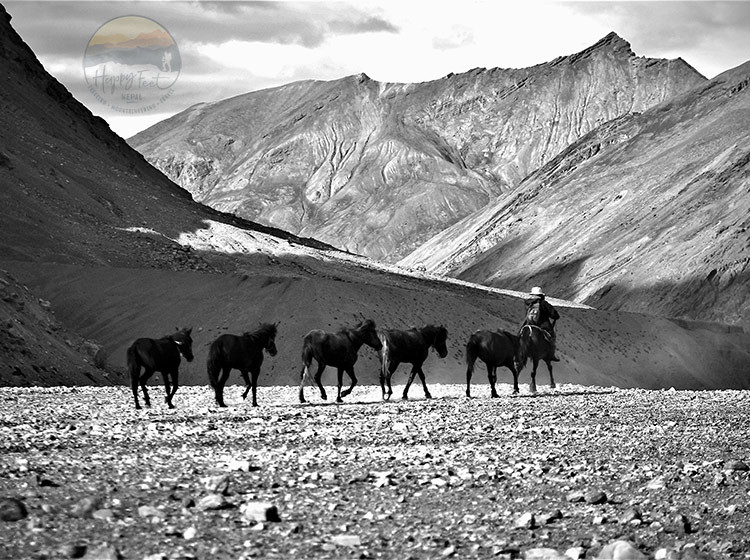
Download PDF
Share this post, let us know your experiences.
Trip Overview
Inquiry form.
Starting From: $1560
Do you want customised itineraries? Do you wish to arrange a trek or a memorable trip based on just your particular interest? Do you want to trek/tour in one specific area with just your friends or family and are willing to be led by identified expertise? Are you planning for a particular mountaineering mission? Are you eager to gift a mountain flight, safari or a special dinner event while your families/friends travel with us? Just drop a line with your feelings and requirement, and permit us to enrich your plans.
Similar Trips

Kang Yatse-I 6494m. Expedition
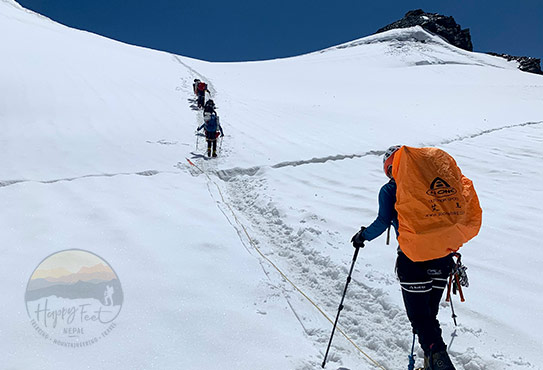
Kang Yatse-II 6250m. Expedition
A Complete Guide to Trekking Tours in India
India Tours
International tours, destination wedding, medical tourism, plan your trip.
- Trekking in India
Tso Moriri Lake Trek
- Accommodation
- Sightseeing
- Trip Highlights
- Best Time to Visit
The largest of the high altitude lakes in the Trans-Himalayan region that is entirely in India, Tso Moriri or Lake Moriri is located at an altitude of 4595 meters in the midst of the Ladakh to the North, Tibet to the East and Zanskar to the West. It offers a breath taking ambiance and forms a wide frame of nature to capture along with the serene atmosphere. An absolute haven to camp for couple of Days, the trek to Lake Moriri is one of the celestial treks in Ladakh region, which offers an untouched natural beauty. It is also an abode to several species of vulnerable birds like the black-necked cranes, Bar-Headed Geese, Brown-Headed Gulls, Great-Crested Grebe, and more. Further the ambiance is also dotted with several species of Himalayan mammals.
The Tso Moriri Trek passes through several mountain passes that include the Tanglangla at an altitude of 5332 meters, which is the second highest motorable road in the world, Horlamkongkala at an altidue of 4900 meters after crossing Tsokar, which is one of the remote villages on the route hosting a gompa and a salt water lake. The trail further winds up to a lofty height of 5440 meters at Yalungnyaula, wherefrom one will get the panoramic view of the Lake Moriri, which is a spectacular sight on the arduous trail.
Though it crosses and passes through a higher altitude, the Tso Moriri Trek also fetches novice travellers from distant corners of the world. Moreover on this trekking trail in Ladakh region one can explore the Chang-Thang, “literally means the high altitude plateau”,which is the home of the Chanpas and step into the floor of gompas around Karzok.
Tso Moriri Lake Trek (Detailed Itinerary)
Arrive delhi, other benfits (on arrival).
- Stay Included
Arrive at the Delhi Airport and meet our representative. Check in the hotel for overnight stay.
Delhi – Leh (Complete Rest in Leh for acclimatization)
Catch the flight for Leh in morning. Check in the guesthouse and take the complete Day rest in order to get acclimatized. Overnight stay at the guesthouse.
Leh – Shey – Thiksey
ToDay, you will go will go on a sightseeing tour to some of the ancient monasteries of Leh.
Once used to be the summer palace of Ladakh kings, Shey Gompa is located at the distance of just 15 kilometers from Leh. You will find scores of Gompas and Stupas about the palace. The palace of Shey was edified in the beginning of 17th century by Deldan Namgyal. The major point of attraction in Shey is the 12 meters long Shakyamuni Buddha Statue positioned inside the Dresthang Gompa.
ocated close to Shey, Thiksey is about 17 kilometers from 17 kilometers. Thiksey Monastery is one of the most spectacular structures in Ladakh. It belongs to Gelukspa Order.
Leh - Rumptse (4000 mts/13120 ft)
Trek to Kyamar (4420 meters) after enjoying scrumptious breakfast. This trek takes around 4 hours. We will halt in Hemis in order to visit its monastery. Hemis Monastery is one of the most prominent and largest monasteries in Ladakh. Then, we will head towards Rumptse, which is the starting point of trek. It is a vast and splendid area, where Changspa (nomadic herders) take their yaks to pasture. Later, we will follow the ancient salt along the verdant Kyamar Valley.
Kyamar - Kumur La (4770 mts/14990 ft) - Tisaling (4805 mts/15760 ft) 5 -6 hrs
We will begin with the stunning colored gorge on the way to Chorten Sumda. It is a steady walk for about one hour and then the climb towards Kumur La. One can see the fascinating view of Kangyatse chain and chain of the Indus Valley from the top.
Tisaling - Shibuk La (4875 mts/15990 ft) - Pangunagu (4800 mts/15744 ft) 5 hrs
We can witness the scenic vistas of Tsokar Lake (4400 meters) and Rupshu Valley from the pass. From here, the trail descends towards the lake. We will camp close to the camp of Chanthang nomad road.
Pangunagu - Nuruchan (4630 mts/15187 ft) 5 hrs
On this Day, we have a steady trek along the lake. En route, one can witness many birds and Wild ass (Kyang) of Tibet plateau and Ladakh. The trail goes right at the end of the lake and enter the Nuruchan village.
Nuruchan - Horlam Kongka La (4900 mts/16072 ft) - Kyamayuri La (5 410 mts/17745 ft) - Gyamabarma (4950 mts/16236 ft) 6 hrs
This route is of high altitude and we will have to cross two passes of about 4900 meters elevation.
Gyamabarma - Yalung Nyau La (5440 mts/17844 ft) - Karzok (4550 mts/14925 ft) 6 hrs
Trek to Korzok along Yalung Nyau. Korzok is on the northwestern shore of Tso MoRiri, which is also known as Moountain Lake. Explore the Korzok Monastery. We will do the camping by the lake.
Karzok - Kyangdam (4550 mts/14924 ft) in 6 h 30.
Take the route of the western shore of Tso MoRiri and reach Kyangdam. Kyangdam is a large grassland on the southern shore.
Kyangdam - Narbu Sumdo (4450 mts/14924 ft) 6 h.
Trail ascends for a while after crossing the stream and enters Parang Chu Valley.
Narbu Sumdo - Parang Chu 1 (4850 mts/15910 ft) 5 hrs
We steadily mount the Prang Chu valley, right on the rightward bank of the river.
Parang Chu 1 - Parang Chu 2 (5000 mts/16400 ft) 5-6 hrs
The route then passes through a slender gorge that involves many ascents and descents to the streams and side valleys.
Parang Chu 2 - Parang La (5500 mts/18040 ft) - Jugstok (4800 mts/15744 ft) 7 hrs
The trail continues on the opposite shore after the frontal moraine of Parang Glacier through loads of fallen boulders. From here, we have to make our way over the snow patches and then ascend steeply up to Parang Pass. One can witness fascinating vistas of Lahaul and Ladakh Ranges from the top of this pass. The Parang Chu, having its source on the southern gradients of Parang Pass, can be viewed below.
Jugstok - Kibber (4205 mts/) 7 hrs
This is a steady dip down towards the valley of Sampa Lungpa. We cross the Thaltak La (4600 meters) in order to view towards Parilungbi in Lingti Valley and Shilla. A tiny verdant oasis Dumla comes on the route followed by Kibar, which is the highest village around the globe.
Kibber - Kunzum La (4590 mts/15056 ft) - Rohtang La (3980 mts/13055 ft) - Manali
Get transferred by the taxi. This journey is quite long taking 8 to 9 hours. Two passes split by Chandra valley comes on the route. Check in the hotel after arrival. Overnight stay in hotel.
Manali - Delhi
Visit Old Manali after enjoying the breakfast. Also, explore Vashisht Village and Hadimba Temple. Travel to Delhi in the evening by AC Volvo Coach. It is the overnight journey.
At morning, reach Delhi and check-in the hotel. Take rest and then reach airport in the evening as per your flight schedule.
Fill Enquiry Form Below
Why tmi for trekking holidays, experienced.
An experienced trekking tour operator, with a team of an experienced adventure enthusiast ensure to give our clients well-designed trekking tour packages.
We are certified by major tour and travel associations in India and world like IATA, IATO, TAAI, IMF & MOT (Ministry of Tourism, Govt of India).
Happy Customers
TMI has received numerous accolades from its happy customers for its excellent services and best adventure holidays.
Local Offices
We have local office in Ladakh, Uttarakhand, Sikkim, Jammu & Kashmir, & Himachal Pradesh for our customers to find assistance anytime and anywhere.
Related Tour Packages
24 Nights - 25 Days
Darcha Lamayuru Trek
18 Nights - 19 Days
Darcha Padum Trek
12 Nights - 13 Days
Frozen River Trek
11 Nights - 12 Days
Hemis Jugtakh Trek
7 Nights - 8 Days
Indus Valley Trek
14 Nights - 15 Days
Junglam Trek
10 Nights - 11 Days
Ladakh Monastery Trek
16 Nights - 17 Days
Ladakh Zanskar Trek
Lamayuru alchi trek.
9 Nights - 10 Days
Lamayuru Chilling Trek
Lamayuru padum trek.
22 Nights - 23 Days
Manali Ladakh Trek
Markha valley & stok kangri trek, markha valley trek, nubra valley trek.
17 Nights - 18 Days
Remote Zanskar Trek
15 Nights - 16 Days
Rupshu Valley Trek
6 Nights - 7 Days
Sham Valley Trek
Snow leopard trek, southern zanskar trek.
19 Nights - 20 Days
Spiti to Ladakh Trek
5 Nights - 6 Days
Spituk to Stok Trek
Stok kangri trek.
26 Nights - 27 Days
Trans Zanskar Expedition
More about trekking in ladakh, our latest informative travel blogs, explore the hidden natural treasure of himalayas with these unexplored treks in uttarakhand, india trekking guide: best informative blogs on india himalayas trekking tour, where to visit in uttarakhand and himachal for adventure, chilling, and finding peace for a post-lockdown holiday, india trekking information at a glance, trekking destinations.
- Uttarakhand
Special Interests Treks
- Wildlife Treks
- Spiritual Treks
- Weekend Treks
- Cultural Treks
- Family Treks
Best Time for Trekking in India
- Best Time to Do Ladakh Trek
- Best Time to Do Uttarakhand Trek
- Best Time to Do Sikkim Trek
- Best Time to Do Himachal Trek
- Best Time to Do Kashmir Trek
- Best Time to Do Garhwal Trek
Fixed Departure Tours
- Fixed Departure for Ladakh
- Fixed Departure for Uttarakhand
- Fixed Departure for Sikkim
- Fixed Departure for Himachal
- Fixed Departure for Kashmir
Seasonal Treks
- Spring Season Treks
- Summer Season Treks
- Monsoon Season Treks
- Autumn Season Treks
- Winter Season Treks
Essential Links
- Things to Carry
- Terms & Condition
- Trekking Equipment
- Trekking Permit
How It Works
- Tell us details of your holiday plan.
- After you submit the form, one of our travel experts will get back to you with customised holiday package based on your requirement, within 24 hours.
- Grab the deal and start packing your bags for an indelible holiday with Tour My India.
Call Us for details
+91-9212553106
Request a quote.
- [email protected]
- +91 9368616661
- +91 9103327532

- Rumtse to Tso Moriri Trek
Max Altitude
7 Days - 6 Nights
Trekking KM.
20,000.00 Per Person
Help & support.
- +919103327532
- +919368616661
Base camp : Rumtse
Max Group Size
Trek Description
The Rumtse to Tso Moriri Trek is a fascinating journey through the remote and scenic landscapes of Ladakh, India. This moderate level trek takes you through high mountain passes, remote villages, and vast stretches of barren desert terrain. The trek can be completed in 7 days and 6 nights, and offers stunning views of the Himalayan range.
Day wise Details and Description
Day 1: rumtse to kyamar.
The trail to Kyamar is also known as the salt road because salt was transported from Tso Kar to the Indus Valley and Leh via this valley. Witness the various landscapes and scenery that differ from Ladakh.
Day 2: Kyamar – Kyamar La – Mandalchan La – Tisaling
Leave Kyamar and gradually climb to Kyamar La, which offers spectacular views of the Changthang region. After a brief rest at the pass, descend to Tiri Doksa. It is a stopover for shepherds on their way. Continue trekking to Mandalchan La, where you will have spectacular views of the surrounding area. Enjoy being at the top for a while before descending to Tisaling. After a 13-kilometer hike, arrive at the campsite and retire for the night.
Day 3: Tisaling to Shibuk La – Ponganagu
Leave Tisaling and make your way to Shibuk La, gaining altitude gradually. Ascend to the summit for breathtaking views of Tso Kar Lake. Without further ado, proceed to Ponganagu, your campsite for the day. Ponganagu is located near Tso Kar Lake and is rich in flora and fauna, with Himalayan animals and birds such as ibex, marmots, and kiang easily spotted.
Day 4: Ponganagu to Nuruchan
Brahmini ducks and necked cranes can be seen walking west along Tso Kar Lake. Tso Kar is also known as "White Lake" because salt is deposited on its banks. From here, walk to Nuruchan, today's campsite.
Day 5: Nuruchan to Kyamayuri La and Gyamar Barma
After breakfast, get ready to cross two passes; Horlam Kongka La and Kyamayuri La. On the way come across some nomad families with their goats, sheep and yaks. After crossing these passes and tough long hike reach Gyamar Barma. Setup your camps here and retire for the night.
Day 6: Gyamar Barma to Kartse La and Gyamar
Today you will also cross the "Kartse La" pass. The trek is 5.7 kilometres long and will take approximately 3 hours to complete. After crossing Kartse La, descend to Gyamar Valley.
Day 7: Gyamar to Yalung Nyau La and Karzok
Leave Gyamar and cross the final Yarlung Nyau La, the highest pass you will encounter. The bluish freshwater Tso Moriri Lake is clearly visible from the top. This pristine Lake is 40 kilometres long and 4,522 metres high, surrounded by the Greater and Trans Himalayas.
Things To Carry
- Warm clothes (thermal wear, jackets, gloves, etc.)
- Trekking shoes and socks
- Sunscreen, sunglasses, and sun hat
- Water bottle and water purification tablets
- Trekking pole
- First aid kit
- Personal toiletries
- Camera and extra batteries
TRIP Inclusions
Accomodation
Hotel, Camps, Resorts
Breakfasts, Lunches, Dinners
Public bus, Taxi, Train, Tram, Metro
TRIP Exclusion
Personal Insurance
Medical Certificate
Personal Medicine kit
Quick inquiry*.
© 2023 BackToTrek.com All rights reserved.

No products in the cart.
- INFORMATION
Rumtse – Tso Moriri trek
Tso moriri trek, number of days.
Jun, Jul, Aug, Sep
Max altitude
Moderate to difficult
Meet the Drukpa nomads of the Changthang plateau and enjoy the stunning views of Tso Kar and Tso Moriri lake
Have you heard of a trek in the Himalayas that takes you through seven passes, ten river crossings and amazing campsites, all higher than 4500 m ?
Well, if you haven’t yet, Himalayan Ecotourism is pleased to say that we also take you on the Rumtse – Tso Moriri Trek where you can witness the magnificence of all of the above, right in front of your eyes.
Despite the physical challenges posed by the trek’s elevation changes, the allure of the Himalayan beauty, enhanced by diverse wildlife and breathtaking views of the Changthang plateau and wetlands, is bound to captivate you.
As you traverse this challenging terrain, camping at Rachungkharu – the sole summer-inhabited Changpa settlement, provides a unique opportunity to engage with Changpa nomads, renowned for their distinct Tibetan culture and historical nomadic journeys between Ladakh and Lhasa.
And,the surreal panorama of the brackish Tso Kar and the sapphire blue Tso Moriri will surely leave an imprint.
As the Changthang Plateau is known for its birds,keep your ears open for songbirds such as the Horned Lark and the seed-eating Finch. The Brown Headed Gull, Brahminy duck and The Bar Headed Goose, known to be the highest flying bird in the world, can also be found here. The high plateaus of the area are also home to some mammals such as the Kyang (wild ass), blue sheep, marmots, Himalayan Ibex and snow leopards.
Embark on this trek with Himalayan Ecotourism, an excellent alternative to the relatively popular Markha Valley route. Not only does it offer a serene escape with fewer fellow trekkers, but it also presents a more breathtaking and demanding adventure.

Trek features
Trek elevation profile, trek itinerary.
Best time to go
Trek photos
Rumtse to Tso Moriri trek features
Duration of your trek.
Day-min : The minimum number of days required for the trek (from Leh to Leh) Day-max : The maximum number of days you can spend on this trek. Prolonged itinerary can be discussed with our team. AWTD : Average walking time per day (<3 : easy, 3 to 5 : moderate, >5 : strenuous)
Altitudes of your trek
Min : Minimum altitude of your trek. Max : Maximum altitude of your trek. Ascent : The total ascending difference of altitude on the trek. Descent : The total descending difference of altitude on the trek.
Difficulty of your trek
Stamina : The physical effort involved during your trek. Rated from 0 (easiest) to 100 (most strenuous). If you have an average fitness you can consider all the treks up to 50. See here for more details Technical : Difficulty of your trek in terms of exposure to danger and required experience. 0 to 20 : No difficulties, 20 to 40 : Walking on good mountain trails, 40 to 60 : Some walking on difficult mountain trails (steep slopes, rocks, etc.), 60 to 80: You are exposed to some dangers (void, snow, falling rocks, etc.), 80 to 100 : Experience required (please inquire). Overall : Average between Stamina and Technical rating.
Day-min : 8 0
Day-max : 10 0, average walking time : 5.5 hours 0, min : 4170 m 0, max : 5440 m 0, ascent : 2770 m 0, descent 2390 m 0, stamina : 70 % 0, technical : 70 % 0, overall : 70 % 0.
Rumtse to Tso Moriri trek map
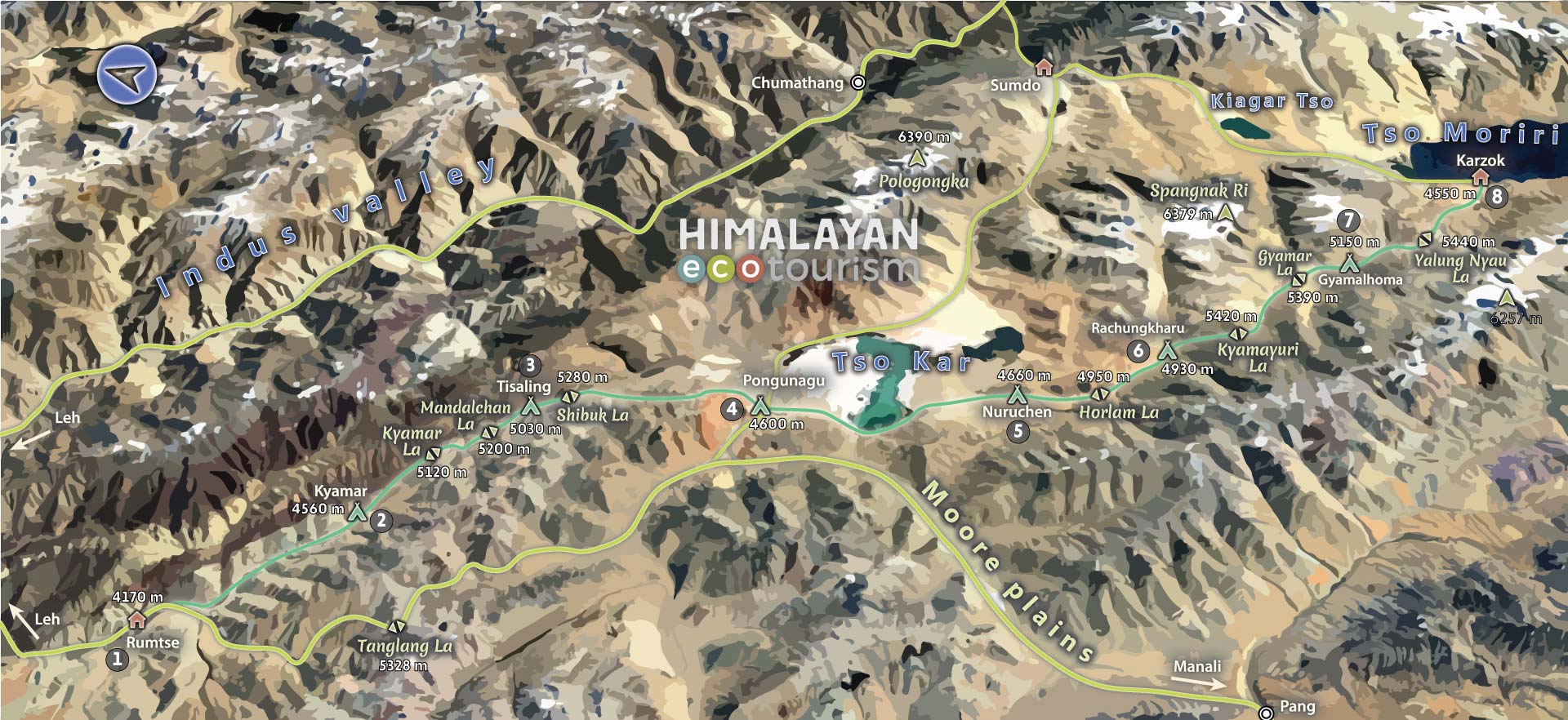
RUMTSE TO TSO MORIRI TREK ITINERARY
The trek starts from Rumtse located on the Manali to Leh highway. You are going to cross 7 challenging passes to reach one of the most beautiful lake of Ladakh – Tso Moriri. The trek ends at Karzok.
Rumtse Tso Moriri trek elevation profile
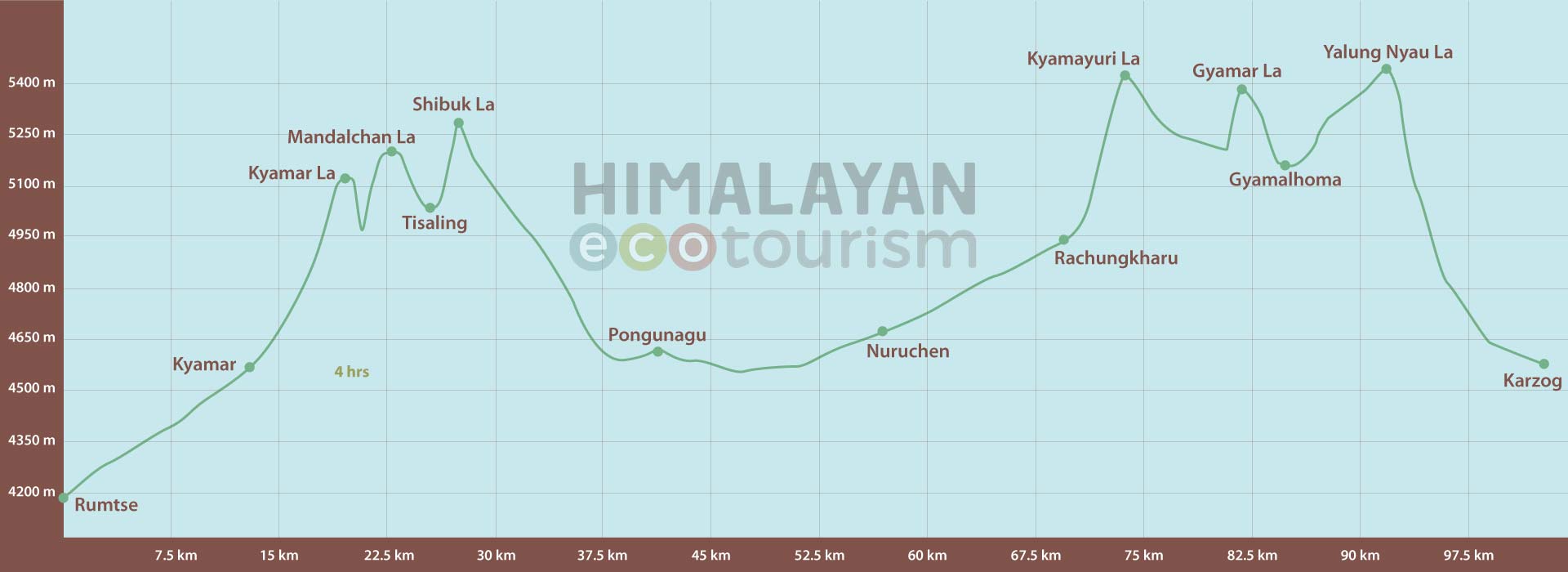
Rumtse Tso Moriri trek ascent and descent
The gradient of the slopes remains gentle on this trek. But the high altitude can make the crossing of the passes pretty strenuous.
Rumtse to Tso Moriri, best time to go
Best time to trek to Tso Moriri is from May to September In early season you may not be able to cross the high passes because of the snow. The best trekking season coincides with the time many shepherds go along the same trekking trails. It is also the best time for birdwatchers at both the lakes Tso Kar and Tso Moriri.
From our gallery
Rumtse to Tso Moriri trek photos
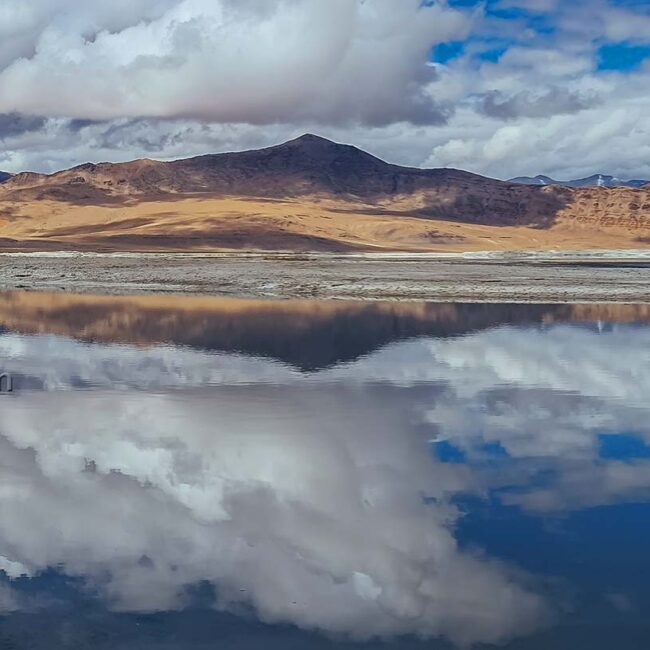
Day One : Leh to Rumtse
Day two : rumtse to kyamar, day three : kyamar to tisaling, day four : tisaling to pongunagu, day five : pongunagu to nuruchen, day six : nuruchen to rachungkharu, day seven : rachungkharu to gyamalhoma, day eight : gyamalhoma to karzok, day nine : karzok to leh.
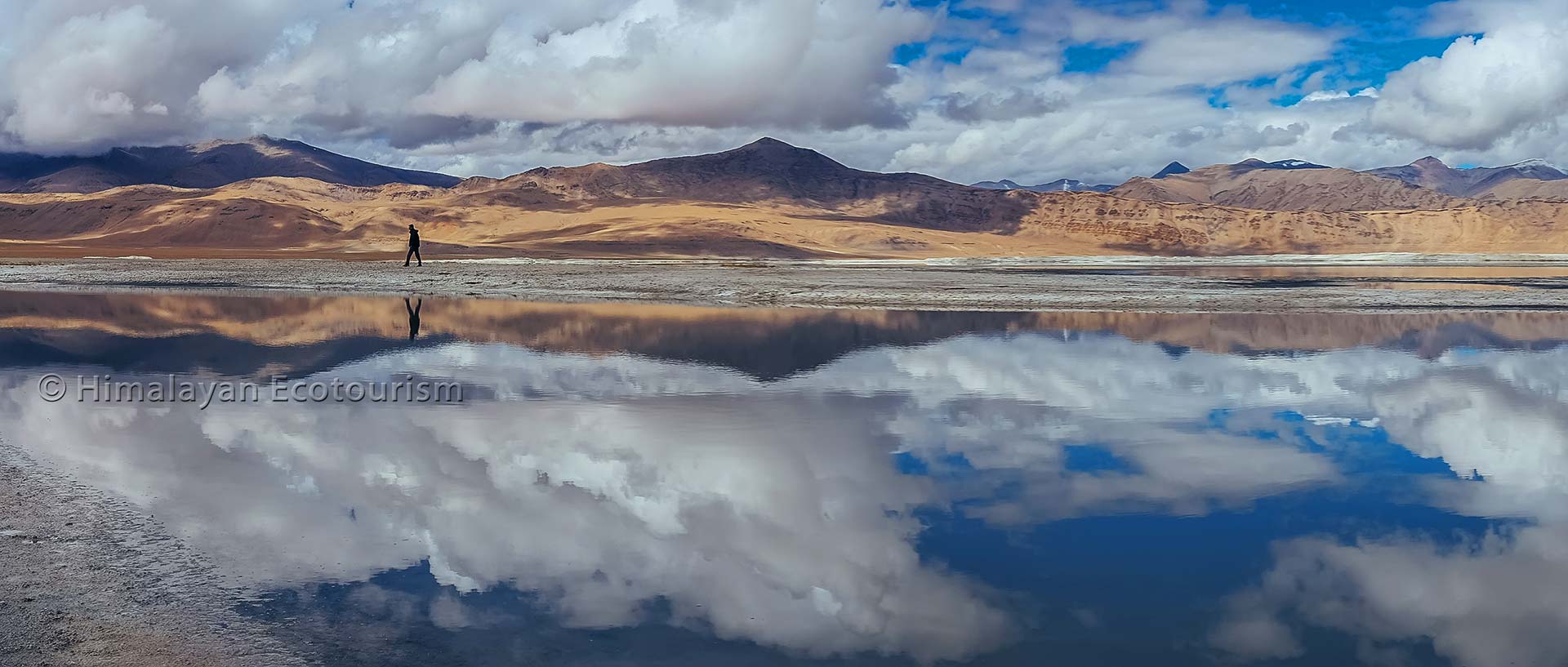
Reviews Scores and Score Breakdown
Aliquam lorem ante, dapibus in, viverra quis, feugiat a, tellus. Phasellus viverra nulla ut metus varius laoreet. Quisque rutrum. Aenean imperdiet. Etiam ultricies nisi vel augue. Curabitur ullamcorper ultricies
Hospitality 0
Knowledge 0, post a comment cancel reply.
Save my name, email, and website in this browser for the next time I comment.

Sign In Here!
Log into your account in just a few simple steps.
Register Now!
Join the SetSail community today & set up a free account.

Spituk Stok Trek – A 3-Day Adventure through Scenic Ladakh
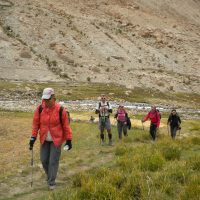
Saboo to Khalsar Trek: A 6-Day Himalayan Escape
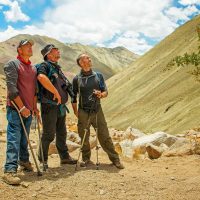
Phiyang to Hunder Trek: A 7-Day Himalayan Journey
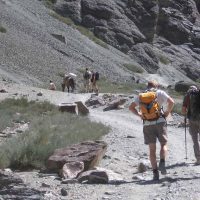
Markha Valley Trek: An 8-Day Himalayan Adventure
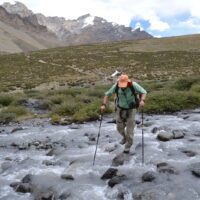
Lamayuru to Alchi via Tarla Trek: A 4-Day Himalayan Escape
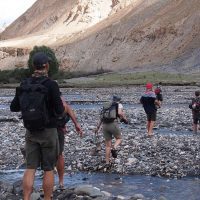
Lamayuru Chiling Trek: A 6-Day Himalayan Escape
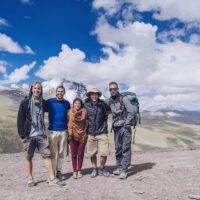
Ladakh Trekking: Explore the 3-Day Stunning Journey from Skiu to Stok!
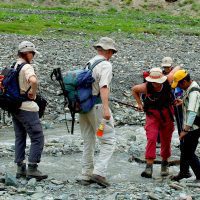
Kulum Leh Trek: An 8-Day Himalayan Hike
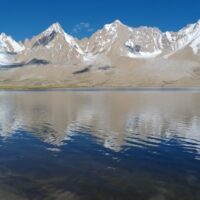
Unveiling the SKO Valley Trek 10 Days : Harmony on the Trails
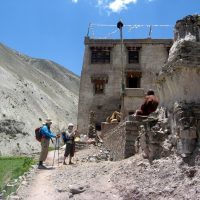
Shang to Stok Trek: A 10-Day Himalayan Adventure
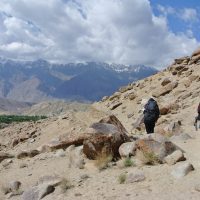
Sham Trek & Monastery Discovery: 10 Days of Ladakh’s Best
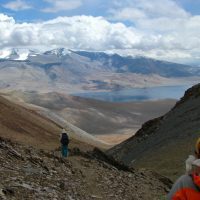
Rumtse to Tsomoriri Trek: A 10-Day Himalayan Adventure
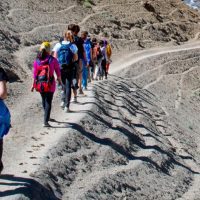
Padum to Leh Expedition via Charcha La: A 10-Day Himalayan Journey
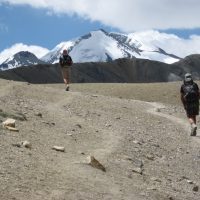
Likir to Khaltse Trek: A 9-Day Himalayan Exploration
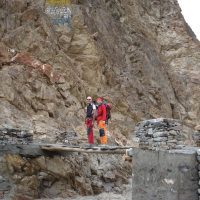
Lamayuru to Hemis Trek: A 12-Day Himalayan Expedition
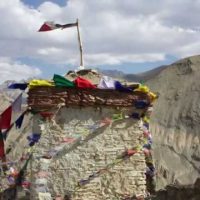
Hemis to Padum via Charchar La: A 12-Day Himalayan Expedition
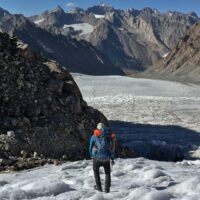
Trans-Himalayan Odyssey: Conquer Kang La and Enter the Kingdoms of Zanskar and Ladakh 14 Days
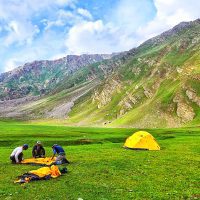
Rangdum to Padum Trek: A 14-Day Himalayan Expedition
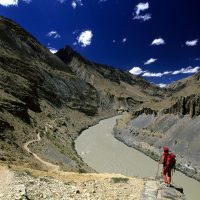
Padum to Lamayuru Trek: A 13-Day Himalayan Expedition

Padum to Darcha Trek: A 13-Day Himalayan Adventure

Lamayuru to Rupsho-Tsokar Lake Trek: A 17-Day Himalayan Odyssey
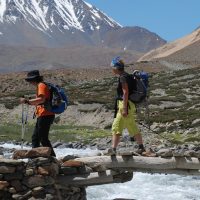
Lamayuru to Darcha Trek: A 20-Day Himalayan Expedition
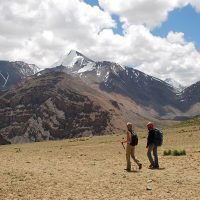
Kibber Trek: An 18-Day Himalayan Trekking Adventure
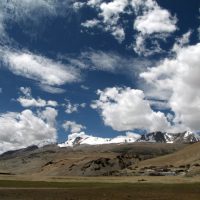
Darcha to Sarchu Trek: A 20-Day Himalayan Odyssey

Chadar Tibb Gyalpo Trek: Conquer The Frozen Majesty 9 Days
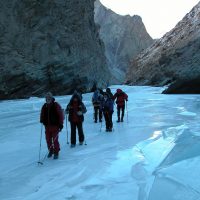
Chadar Markha via Charchar-La Trek: 26 Days of High Himalayan Exploration
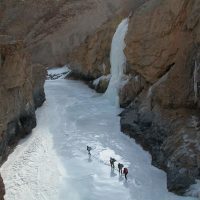
Chadar Lingshed-Chilling Trek: 11 Days of Himalayan Thrills
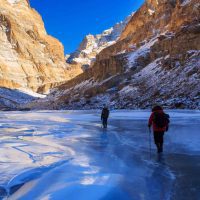
Chadar Lingshed to Tongday Trek: 20 Days of Himalayan Expedition

Chadar Karsha Trek Odyssey: 22 Days of Himalayan Adventure
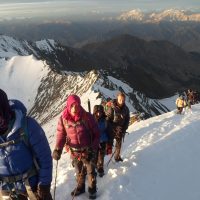
Stok Kangri Summit: A 9-Day Himalayan Expedition
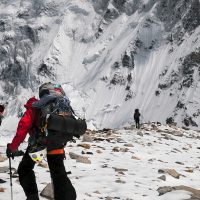
Nun Kun Tour: A 14-Day Journey through Himalayan Majesty
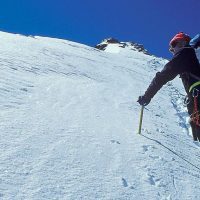
Menthok Kangri Summit: Conquer Peaks of Adventure 5 days

Kang Yartse Adventure: An 11-Day Expedition into Himalaya
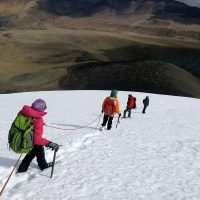
Conquer Kang Yatse 2: Majestic Ladakh Summit Adventure
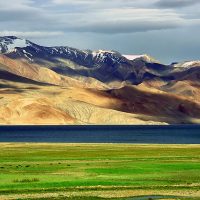
Wonder of Ladakh: An 8-Day Journey into Tranquility
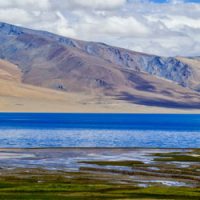
Unveiling Tranquil Beauty: Tso Moriri and Tso Kar Tour 2 Days
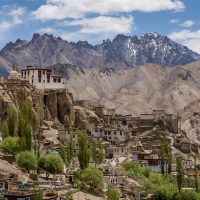
Sham Monasteries Tour 2 Days : A Tranquil Journey Unveiled
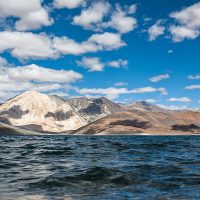
Pangong Tso Tour: A Mesmerizing Journey Beyond Borders 2 Days
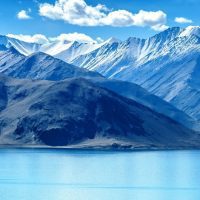
Pangong Tso Expedition: 8 Days of Ladakh Bliss
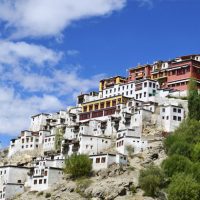
Monastery Marvels: Thiksey Hemis Matho Chemrey Tour Day 1
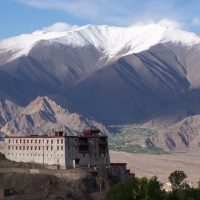
Lakes Monasteries Tour – 9 Days : Uncover the Jewels of Ladakh
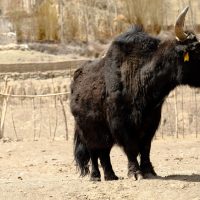
Ladakh Wonders Unveiled: A 5-Day Expedition
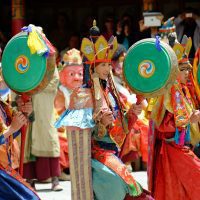
Ladakh Monasteries Odyssey: 6-Day Spiritual Expedition
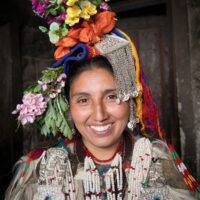
Hidden Gems Of Ladakh: Dah Hanu Alchi Lamayuru Unveiled 2 Days
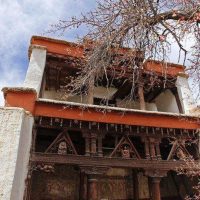
Enchanting Day Tour: Discover the Wonders of Sham Monasteries
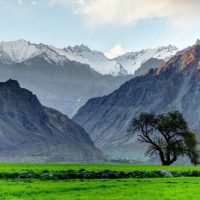
Discover Turtuk Magic 3-Day Nubra Valley Adventure
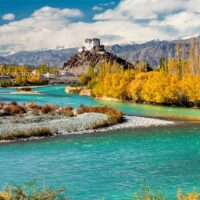
Ladakh Adventure: 8-Day Trekking and Scenic Tours in the Himalayas
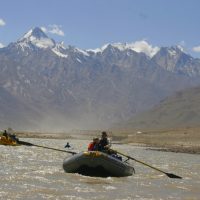
Zanskar River Rafting Expedition: 12 Days of Thrills and Rapids
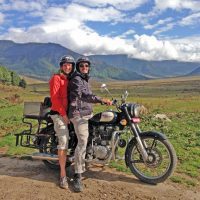
Epic 10-Day Manali to Leh Motor Bike Expedition

Serenity Sprint: Yoga and Meditation Escape in the Himalayas
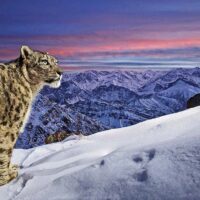
Ladakh Wilderness Photo Expedition: Capturing Nature’s Essence
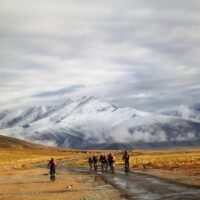
Ladakh Panorama Pedal: Scenic Cycling Odyssey with Bike Transfers
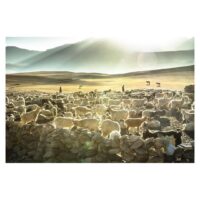
Ladakh Nomadic Odyssey: Unconventional Expedition into the Highlands
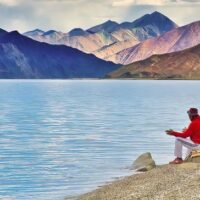
Ladakh Harmony Drive: Meditation and Yoga Expedition

Ladakh Express: Yoga, Meditation, and Trek Retreat
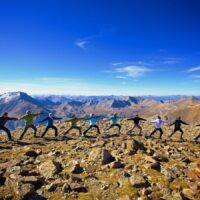
Ladakh Elements Quest: Elemental Immersion and Adventure Retreat

Ladakh Eco-Quest Extended: Immersive Ecological Exploration
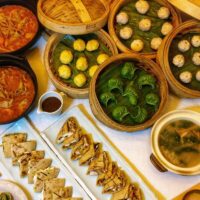
Ladakh Cultural Exchange Journey: Bridging Traditions and Connections
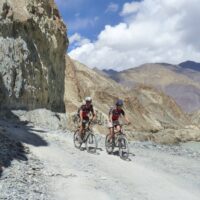
Ladakh Beyond Trails: Unique Cycling Expedition with Bike Transfers
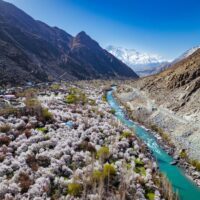

Ladakh Apricot Blossom Expedition: Embark on a Mesmerizing Journey Through Orchards and Villages
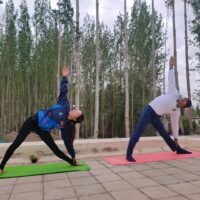
Embark on a Transformative Journey: Ladakh Adventure, Meditation, and Yoga Extravaganza
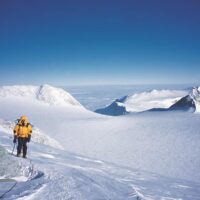
Vinson Massif Adventure in Antarctica
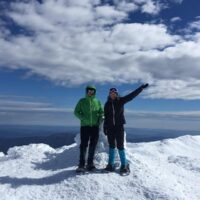
Mt. Kosciuszko Peak Adventure
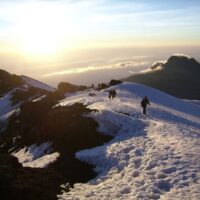
Mount Kilimanjaro Experience the Trek
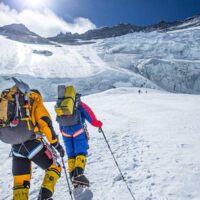
Mount Everest Expedition Southwest Nepal

Mount Elbrus: Exploration of the Summit
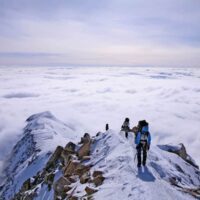
Denali Mountain Climbing Adventure
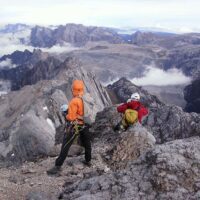
Carstensz Pyramid(Mount Puncak Jaya) Summit Adventure

Aconcagua Summit : A Majestic Mountain

2019 Ice Hockey Camp (Japanese University Student Coach)
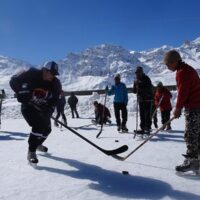
2018 Ice Hockey Skills Camp (Japanese Coach)
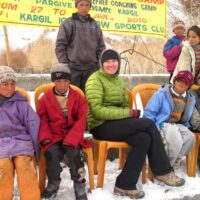
2010 Kargil Development Camp
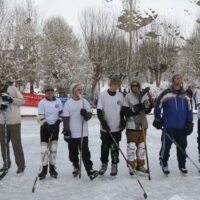
2009 Kargil Open Ice Hockey & Skating Championship / Pargive Kargil Ladakh
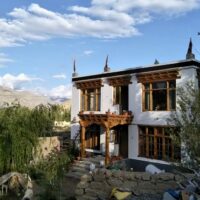
Discover Tranquility at Abapa House: Your Choglamsar Homestay Haven
- Ladakh: Discovering Us
Explore our latest Blog
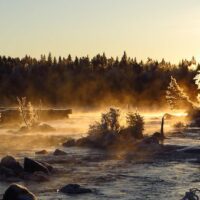
Discover the Tranquil Beauty of Remote Living in Scandinavia’s Untamed Wilderness
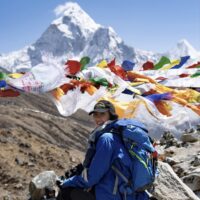
Everest Base Camp Trek: Transformative Life Lessons and Inspiring Personal Growth
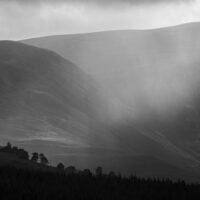
Exploring Scotland Outdoors: Embracing the Mighty Beauty
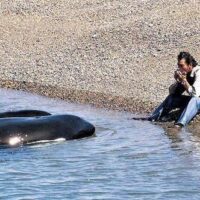
Nature’s Miraculous Harmony: Unleashing the Radiant Transformation with Roberto Bubas
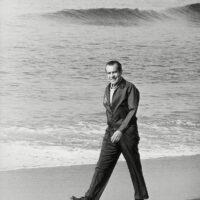
Empowering Futures: Remote Fishing Village’s Path to Prosperity and Fulfillment

Living Without Money: Embracing a Sustainable Lifestyle
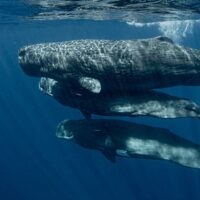
Ocean Harmony: Unlocking the Depths of Whale Communication

Minimalism Magic: Transforming Life with Joyful Abundance and Positive Progress
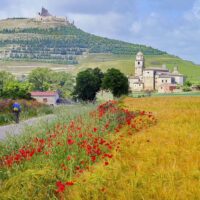
Unleashing the Journey: Santiago de Compostela’s Path of Strength, Beauty, and Communal Spirit

Siberia’s Extreme Cycling Adventure: Conquering Frigid Challenges Amidst Isolation
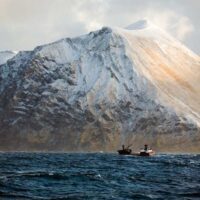
Bering Sea’s Resilient Crabbing: Triumphs Amidst the Challenges
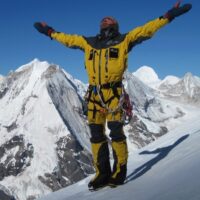
K2 Climb: Unyielding Ascent to the Summit

Use the form below to contact us directly.
Please complete all required fields.
Booking details
Submit booking, confirmation, booking info.
First name:
Special requirements:
Total price:
We wish you a pleasant trip your LIFE on the PLANET LADAKH team
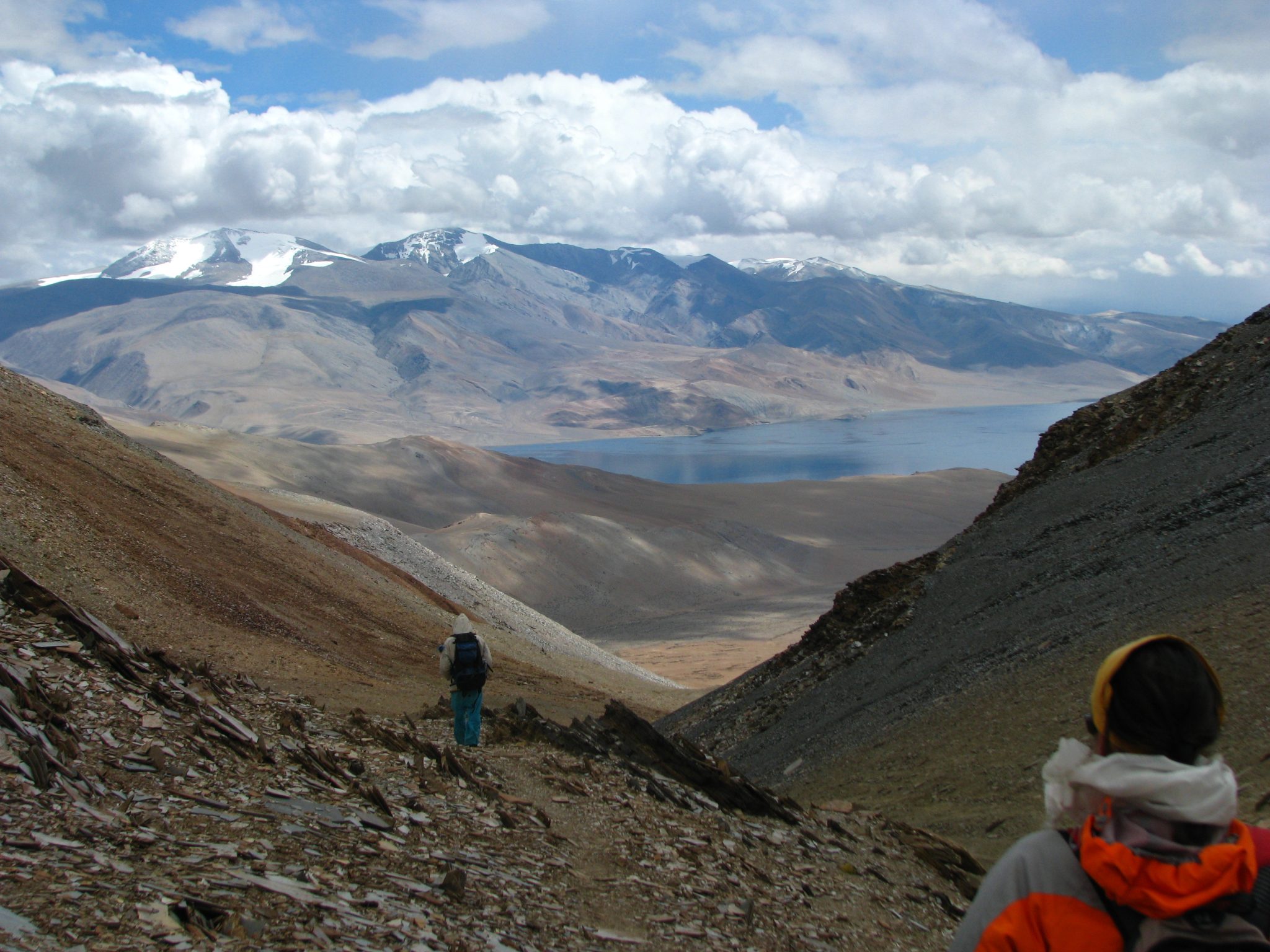
If you're looking for an adventure that will take your breath away, look no further than Tso Moriri. This high-altitude lake, spread over 120 square kilometers, is the largest of its kind entirely within India. And the best way to experience it? Through a challenging and awe-inspiring trek.
The trek to Tso Moriri is not for the faint of heart. Trekkers will need to trudge through seven mountain passes and more than 10 river crossings. The journey will take you through arid, deserted, never-ending lands. But the reward at the end is worth it all.
The scenery on this 10-day trek is nothing short of otherworldly. You'll feel like you've left Earth behind as you walk among landscapes so outlandish, they almost don't seem real. And the beauty of the starkly beautiful trail is unparalleled - there's no other trek quite like it.
If you're looking for a challenge that will reward you with breathtaking views and unforgettable experiences, the trek to Tso Moriri is the perfect adventure for you. So lace up your boots, grab your gear, and get ready to explore one of India's most awe-inspiring natural wonders.
Day 01. Acclimatisation at Leh or Rumtse: Get ready to embark on an adventure of a lifetime! But first, take a day to acclimatise to the altitude. At 11,562 feet (3,524 meters) above sea level, it's highly recommended that you rest for a day at Leh to acclimatise. This is not only important during this trek, but during any trek in Ladakh. Take a walk around Leh to get yourself better acclimatised before the trek.
It's essential to take acclimatisation seriously, especially if you're planning to reach Leh via flight. If you feel unwell at any point, do not attempt to start the trek.
For those who want to acclimatise in Rumtse, it's possible to head there on Day 2 and spend a night there. Rumtse has camping grounds where you can pitch your tent, or you can opt for local homestays by paying anything from Rs. 400 onwards for a room.
If you prefer more comfort, just one kilometer ahead of Rumtse is Jammu & Kashmir Tourism Lodge towards the left of the Manali-Leh road. You can choose to stay there as well. Take the time to acclimatise properly before the trek, and you'll be ready to take on the adventure of a lifetime.
Day 02: Leh – Rumtse – Kyamar Trek
On the second day of your Ladakh trek, you will leave Leh and head towards Rumtse, which is a small village located around 79 km from Leh. The journey takes around 2-3 hours and is a pleasant drive with stunning views of the Indus Valley and monasteries of Hemis and Thiksey.
Once you reach Rumtse, you can explore the local market and visit the Gya monastery, which has over 700 years of history and 108 stupas. Rumtse is also the base camp for treks to Tso Kar and Tso Moreriri Lake.
To start the trek to Kyamar, walk for a kilometre on the Leh-Manali highway from the Rumtse local market and take the trail towards your left. Hike alongside the Chhaba Chu stream, which will flow on your left. After 10 minutes, you will spot a steel bridge. Cross the bridge with the stream on your left and keep left, along a small plateau.
The dusty trail will eventually take a U-turn as you leave Chhaba Chu and enter Kyamar valley. Leaving behind Chhabu Chu, look for multiple rivulets. After 20 minutes of level walk, you will reach large green marshes on your right, suitable for camping. Cross the stream here and take the trail going left.
The walk to Kyamar campsite is easy and over relatively flat terrain. The altitude gain for the day is roughly 1,224 feet (373 meters) only. The trail swirls inward along the natural scope of the valley. After a hike of 30 minutes, you will see a change in landscape. The green marshes give way to gravel, and there is a small gradual ascent over a rocky spur.
After 10 minutes, you will reach the base of this plateau. From here, observe a 3 way opening of the valley. Take the widest valley in front of you. This is the logical trail going to the grazing grounds of Kyamar. After walking for 30 minutes, the green marshes will re-appear along Kyamar stream, and the river basin will remain on your right.
The Changpa nomads camp here during summer. The trail to Kyamar can also be covered in an SUV. The Kyamar valley is wide with vast marshlands. You will be required to cross the stream towards the right and then back to the left side as per the trail in front of you. This section of the valley will take 45-60 minutes to traverse.
Ahead of you, observe the highest mountain with snow on its summit. The Kyamar grazing grounds are located at the base of this summit. It will take around 30 minutes to reach the base of this mountain. From here, one can see the beginning of Kyamar green pasture land. It is advisable to trek towards the end point of these grounds. The final section of the trek will take 45-60 minutes.
Look for a suitable camping spot next to the stream, which is on the right side of the trail. Kyamar’s grounds are surrounded by beautiful rocky hills on three sides of the valley. Overall, the trek from Rumtse to Kyamar takes around 4-5 hours and covers a distance of 9.5 km.
Day 03: Kyamar – Kyamar La – Mandachalan La – Tisaling
Altitude: 15,006 ft – 16,804 ft – 17,162 ft – 16,496 ft
Time taken: 8-9 hours, 15 km
GPS Coordinates: N 33°31.874, E 077 °53.707 – N 33°30.294, E 077 °54.632 – N 33°29.253, E 077 °55.968
Embark on an unforgettable journey to the summit of Kyamar Mountain, starting early in the day to take advantage of every moment. As you traverse the stream and connect with the trail from Rumtse, leave behind the green landscape and enter the barren mountainscape of the upper plateau of Kyamar. Over the course of the next few hours, hike through breathtaking views and challenging terrain to reach the summit of Kyamar La.
Upon reaching the centre of the valley, take in the sweeping vista of the Zanskar ranges, with a focus on the awe-inspiring Mt. Kang Yatse. After observing a small bridge made of boulders and stones over Kyamar stream, head up the trail to climb the steep ascent to the pass. At Kyamar Pass, you'll be greeted with an incredible 360-degree view that will take your breath away.
Next, journey to the Mandachalan La, a brutal and laborious slog of 950 feet that is well worth the effort. Keep your eyes peeled for Himalayan Ibex, Marmot, and Wild Hare as you make your way up the gradual ascent to the base of the pass. The final climb to the pass may take up to three hours and can get very hot in the noon sun, so make sure to stay hydrated and take breaks as needed. At Mandachalan Pass, revel in the stunning views of the surrounding area, including the high peaks of Pangong region.
From there, venture into the bowl-shaped valley leading to Tisaling, a beautiful high altitude grassland between Mandachalan and Tisaling Passes. As you descend towards the camping ground, take in the greenery and natural beauty of the area, but beware of the slippery terrain and loose gravel. Once you've crossed the stream and marshland, find a suitable spot for camping just at the base of Shibuk La.
This eight to nine-hour, 15-km journey is not for the faint of heart, but it is sure to be an experience of a lifetime. Don't forget to take plenty of photos and make memories that will last a lifetime!
Day 04: Tisaling – Shibuk La – Pongunagu (Tso Kar Campsite)
Altitude: 16,496 ft – 17,369 ft – 15,049 ft
Time taken: 6-7 hours, 15 km
GPS Coordinates: N 33°28.339, E 077 °56.650 to N 33°21.606, E 077 °57.562
Embark on an unforgettable adventure as you hike from Tisaling to Shibuk La and Pongunagu. This 6-7 hour trek covers 15 kilometers and offers stunning views of the surrounding landscape.
To avoid the intense afternoon sun, start your journey early in the morning. The initial part of the trek involves a short but steady climb to Shibuk La, which is adjacent to the campsite. The pass is visible above, approximately 1.5 kilometers away with an altitude gain of over 950 feet.
As you cross the stream and head towards the base of Shibuk La, the trail moves southeast. The view of the Tisaling campsite and the vast Tso Kar valley will leave you awestruck. There are several ways to reach the summit, including a straight route that requires you to cross the stream towards your left and make a straight line upwards to the summit. While it is the shortest route, it is also the most strenuous due to the maximum incline.
Alternatively, you can take the left side trail and reach the crest of the pass. Although this is a longer route, the ascent is gradual, at least initially, taking about an hour to reach Shibuk La. From here, you can witness Mt. Thugse (6,050 m) and Mt. Gursan (6,370 m) standing prominently at the horizon, as well as a glimpse of the salt lake, Tso Kar, in the distance.
The descent from the pass to Tso Kar Lake is rapid, and you will pass by a fertile stretch of land that is frequented by Changpa nomads and their livestock. As you approach the rocky spur, there will be a series of two crests of the plateau that need to be traversed, taking 30-45 minutes. Once at the top of the plateau, follow the trail that winds right.
After 15 minutes of level walk, you will observe the whole Tso Kar Lake below. A motorable road is visible below that comes from the Leh-Manali road and goes east, crossing Polokongka La and descending to Puga Valley. It then heads south to Tso Moriri Lake. Towards the far right, after crossing this road, is the campsite of Pongunagu. It takes 20 minutes of brisk walking to reach the campsite.
Take the trail from the left side of a large fenced grazing ground to reach the campsite, which offers space for pitching tents and has ready-to-use tents available for rent. If required, private vehicles need to be arranged from Leh in advance. A satellite phone is also available in the nearest village, Thugje, 3 km away from the campsite.
Don't miss the chance to explore the unique array of colors that the brackish barren land has to offer. Follow the well-defined trail and witness the changing landscape as the day progresses. With breathtaking views and an exhilarating trek, this is an adventure you won't forget.
Day 05: From Pongunagu to Nuruchen – Enjoy an Easy Trek with Beautiful Views
Today’s trek from Pongunagu to Nuruchen is relatively easy and will take about 6-7 hours to cover a distance of 16 km. As you take the trail southwards, with the stunning Tso Kar Lake on your left, you’ll enjoy a pleasant jeep trail with gentle ascents and level walks. Keep your eyes open for black-necked cranes and Brahminy ducks as you pass by a few tea shops and winter shelters used by the Changpa community.
The valley will gradually widen as you approach Nuruchen, a small Changpa village, and you’ll be able to spot the towering Zanskar ranges with the Horlam (Kongka) La ridge. Although the trek is relatively easy, it’s still a long walk to Nuruchen, which serves as a safe haven for Changpas during the bone-chilling winters. During the summer, Nuruchen looks like a ghost village with abandoned huts.
You’ll also come across a refreshing stream, Nuruchen Lungpa, which flows down from the Horlam La ridge on the southwest side and eventually drains into the Tso Kar Lake. Pitch your tents for the night near the stream and enjoy the serene beauty of the surrounding landscape.
Day 06: Nuruchen – Horlam La – Rachungkharu
Altitude: 15,308 ft – 16,300 ft – 16,148 ft
Distance: 9 km
Duration: 4 hours
Today's trek is a relatively easy one as we make our way towards Horlam La, the easiest pass crossing in this trek. From Nuruchen, we'll ford the Nuruchen rivulet and proceed further southwest into the Tso Moriri Valley. The ascent to the pass is gradual, with a gravel and scree trail covered in short wild grass. As we make our way up, we'll look back for a stunning view of the turquoise blue Tso Kar Lake.
During our trek, we'll notice an increased presence of Changpa nomads all the way to their settlement in Rachungkharu. We may even spot Kiangs, Tibetan wild horses, as they frequent this trail often. From the top of the pass, we'll have a great view of the surrounding landscape.
Descending from the pass, we'll make our way towards the grassy marshes of the Spanglung Serpa river basin. The approach to the marshes is a forty-minute downhill ridge walk. We'll need to be careful while crossing the marshes and avoid walking on the slushy side. We'll look out for a suitable spot to ford the river and continue on the five-kilometer stretch to the campsite of Rachungkharu.
The campsite is located next to the river, providing a soothing atmosphere and beautiful views of the surrounding landscape. We'll pitch our tents and enjoy a peaceful night's sleep under the stars.
Day 07. Rest day at Rachungkharu
Rachungkharu is a perfect place to rest and recharge for a day before the upcoming challenging pass crossings. After trekking at such high altitude, taking a day off helps the team recover and prepare for the next two days.
Day 08. Rachungkharu – Kyamayaru La – Gyamar La – Gyamalhoma
Altitude: 16,148 ft – 17,782 ft – 17,700 ft – 16, 896 ft
Time taken: 6 hours, 13 km
Today's trek is going to be a long and arduous one with two of the most challenging pass crossings. You'll also have to ford several rivulets, including a few that can be tricky. Starting early is highly recommended.
Head south on the clear-cut trail to Kyamayaru La. Follow the left course of the passing rivulet until you reach the base of the pass. Spot the saddle of Kyamayaru La on your right after around an hour of walking. Ascend the trail all the way to the pass, which takes about an hour.
From the top, you'll get a spectacular view of Horlam La's ridge and Tso Kar lake behind it. Kang Yatse is also visible in the south. Ahead of you lies the wide valley of Gyam chu. Descend to the extensive river basin of Gyam Chu and walk beside the first river until you reach the pasture grounds used by yak herders. Ford the river from here and move ahead into the Gyam Chu basin.
Observe several plateaus below the snow-covered Mendok ranges in the distance. The Gyamar La ridge is in the middle of those plateaus. The ascent to the pass is steep, so maintain a slow and steady pace. It takes close to two hours to reach the top, where several prayer flags are neatly laid out. From here, you can see the Mendok ranges (1 & 2) distinctly in the south.
Descend from the pass towards the arid side of Gyamar basin. Brace yourself for an exhilarating experience of river-crossings as you reach the banks of the stream. The rivers here are voluminous and deep, so try boulder hopping or wading through the deep currents. The second river crossing appears shortly after the first one.
After crossing the river, warm up and dry yourself. The water is icy cold. Head south towards the convergence of rivulets that form the Gyamar River. The Gyamalhoma campsite is across the river, a beautiful pasture ground frequented by Changpa yak herders. It makes for an excellent camping spot and is also the base camp for climbing Mendok 1 and 2 peaks.
Day 09: Gyamalhoma – Yarlung Nyau La – Karzok Trek
Altitude: 16,896 ft – 17,841 ft – 14,895 ft
Distance: 14 km
Today's trek offers the most breathtaking views you'll see on this journey. You'll be crossing the highest pass of the trek, Yarlung La, which is located at an elevation of 17,841 feet and boasts the best views of the trek. Follow the marked trail heading southeast of the river valley. After an hour of level walking over receding pasture land, the trail will lead you into a rocky landscape. Be cautious as the valley is barren and prone to rockfall.
Ford over a few gentle rivulets and follow the cairns on the trail to avoid getting lost. After approximately two hours, the plateau of Mendok will come into view, and the saddle of Yarlung Nyau La will be clearly visible ahead as you gain altitude. As you go higher, the dusty wind hits you in thunderous bursts. Upon reaching the top, the first appearance of Tso Moriri lake will overwhelm you with its sheer size and stunning beauty. From this vantage point, you'll be able to see some of the most famous trek-worthy peaks like Chhamsher Kangri (21,725 feet) and Lungser Kangri (21,870 feet).
Take some time to bask in the view before starting your descent to Tso Moriri lake, losing altitude by 3,000 feet. Hike all the way up to Karzok, which is located at the bank of Tso Moriri.
Day 10: Drive to Leh
Altitude: 14,895 ft – 11,562 ft
Distance: 211 km
The trek ends at Karzok, and you'll drive back from Karzok to Leh. The road journey takes approximately 6 to 7 hours, covering around 211 kilometers.
View route map for Rumtse Tsomoriri Trek on plotaroute.com
Embarking on a Rumtse To Tsomoriri Trek Unveiled: Discovering the Path to Inner Peace
What is a rumtse to tsomoriri trek .
In the hustle and bustle of our modern lives, finding inner peace can sometimes feel like a distant dream. We are constantly bombarded with stress, distractions, and responsibilities that pull us in all directions, leaving us feeling overwhelmed and disconnected from ourselves. But what if I told you that there is a path to inner peace, a Rumtse To Tsomoriri Trek that can help you find serenity amidst the chaos? In this article, we will explore what a Rumtse To Tsomoriri Trek entails and how it can uncover the path to inner peace.
A Rumtse To Tsomoriri Trek is a personal voyage of self-discovery and growth, where we consciously seek to cultivate inner peace and serenity. It is a deliberate choice to embark on a path that allows us to find solace within ourselves, regardless of external circumstances. This journey involves exploring various practices and techniques that can help us connect with our inner selves, find balance, and achieve a state of tranquility. It is about slowing down, being present, and finding harmony in our thoughts, emotions, and actions.
The importance of inner peace
Inner peace is not just a lofty ideal or a luxury Rumtse To Tsomoriri Trek; it is a fundamental need for our overall well-being and happiness. When we lack inner peace, we become more susceptible to stress, anxiety, and other negative emotions that can take a toll on our mental and physical health Rumtse To Tsomoriri Trek. Inner peace, on the other hand, is like an anchor that keeps us grounded and resilient in the face of challenges. It allows us to navigate through life’s ups and downs with grace and equanimity.
Moreover, inner peace is not just beneficial for ourselves; it also has a positive ripple effect on those around us. When we are at peace within ourselves, we radiate a calm and positive energy that can inspire and uplift others. Our relationships become more harmonious, and our interactions become more compassionate and understanding. Inner peace is, therefore, not a selfish pursuit but a gift that we can offer to ourselves and the world.
The benefits of embarking on a Rumtse To Tsomoriri Trek
Embarking on a Rumtse To Tsomoriri Trek can bring forth a multitude of benefits that extend beyond just inner peace. As we delve deeper into our journey, we begin to develop a heightened self-awareness, gaining a clearer understanding of our thoughts, emotions, and patterns of behavior. This self-awareness allows us to make conscious choices and break free from negative habits and conditioning that no longer serve us.
Additionally, a Rumtse To Tsomoriri Trek helps us cultivate resilience and emotional intelligence. It equips us with the tools and techniques to navigate through life’s challenges with grace and ease. We become more adaptable and less reactive to external circumstances, allowing us to maintain our inner equilibrium even in the midst of chaos.
Moreover, a Rumtse To Tsomoriri Trek fosters personal growth and self-acceptance. As we connect with our inner selves, we begin to uncover our true passions, values, and purpose in life. We gain the clarity and confidence to pursue our dreams and live authentically. This journey also enables us to embrace our imperfections and love ourselves unconditionally, fostering a deep sense of self-worth and fulfillment.
Exploring different paths to inner peace Rumtse To Tsomoriri Trek
There are many paths that can lead us to inner peace, and it is important to find the ones that resonate with us personally. One such path is through mindfulness and meditation practices. Mindfulness involves being fully present in the moment, observing our thoughts and emotions without judgment. It helps us cultivate a sense of inner calm and clarity, allowing us to let go of worries about the past or future.
Meditation, on the other hand, is a practice that involves training the mind to focus and redirect our thoughts. It can be as simple as sitting in silence and focusing on our breath or engaging in guided meditation exercises. Regular meditation practice has been proven to reduce stress, improve concentration, and promote emotional well-being.
Another path to inner peace is through connecting with nature. Spending time in nature can have a profound impact on our mental and emotional well-being. It allows us to disconnect from the noise and distractions of daily life and reconnect with the beauty and stillness of the natural world. Whether it’s a hike in the mountains, a walk on the beach, or simply sitting in a park, immersing ourselves in nature can restore our sense of balance and tranquility.
Mindfulness and meditation techniques for inner peace Rumtse To Tsomoriri Trek
Mindfulness and meditation are powerful tools that can help us cultivate inner peace. Here are a few techniques to incorporate into your daily routine:
Body scan meditation : Find a quiet and comfortable space. Close your eyes and bring your attention to different parts of your body, starting from your toes and moving up to your head. Notice any sensations or tension, and consciously release any tension you feel.

Walking meditation : Take a slow and mindful walk, paying attention to each step and the sensations in your body. Notice the sounds, smells, and sights around you, fully immersing yourself in the present moment.
Remember, the key to mindfulness and meditation is consistency. Set aside a few minutes each day to practice, and gradually increase the duration as you become more comfortable.
Connecting with nature for a Rumtse To Tsomoriri Trek
Nature has a way of soothing our souls and reconnecting us with our true essence. Here are some ways to connect with nature and enhance your Rumtse To Tsomoriri Trek:
Practice forest bathing : Forest bathing, also known as shinrin-yoku, is a Japanese practice that involves immersing oneself in the healing atmosphere of a forest. Simply spend time in a forested area, engaging all your senses and allowing the sights, sounds, and smells of nature to rejuvenate your spirit.
Exploring Different Paths to Inner Peace
There are myriad paths to inner peace, and what works for one person may not work for another. It is essential to explore different practices and techniques to find what resonates with us personally. Some people find solace in mindfulness and meditation, while others may find peace through engaging in creative activities such as painting or writing.
Mindfulness and Meditation Techniques for Inner Peace
Mindfulness and meditation are powerful practices that can lead us towards inner peace. Mindfulness involves paying attention to the present moment without judgment, cultivating a state of non-reactive awareness. By practicing mindfulness, we can train our minds to focus on the present and let go of worries about the past or future. This practice allows us to develop a sense of inner calm and tranquility.
Meditation, on the other hand, involves intentionally focusing our attention and eliminating the stream of thoughts that often clutter our minds. Through meditation, we can cultivate a sense of inner stillness and peace. Regular meditation practice has been shown to reduce stress, improve concentration, and enhance overall well-being.
Connecting with Nature for a Rumtse To Tsomoriri Trek
Nature has a profound impact on our well-being and can be a powerful catalyst for inner peace. Spending time in nature allows us to disconnect from the demands of modern life and reconnect with our true selves. Whether it’s taking a walk in the forest, sitting by the ocean, or simply gazing at the stars, nature has a way of soothing our souls and reminding us of the beauty and interconnectedness of all things.
Cultivating Gratitude and Positivity on Your Journey
Gratitude and positivity are essential qualities to cultivate on our Rumtse To Tsomoriri Trek. By practicing gratitude, we shift our focus from what is lacking in our lives to what we already have. This shift in perspective can bring about a sense of contentment and appreciation for the present moment. Positivity, on the other hand, involves consciously choosing to see the good in every situation and maintaining an optimistic outlook on life. These practices can help us cultivate inner peace and foster a mindset of abundance and joy.
Finding Balance and Harmony in Your Life
Finding balance and harmony is crucial for inner peace. It involves aligning our actions, values, and priorities with our innermost desires and aspirations. This may require making conscious choices to simplify our lives, set healthy boundaries, and prioritize self-care. By finding a balance between work, relationships, and personal well-being, we create a fertile ground for inner peace to flourish.
Cultivating gratitude and positivity on your journey
Gratitude and positivity are essential ingredients for a Rumtse To Tsomoriri Trek. By cultivating an attitude of gratitude, we shift our focus from what is lacking in our lives to what we already have. This shift in perspective allows us to appreciate the present moment and find joy in the simple things.
One way to cultivate gratitude is to keep a gratitude journal. Each day, write down three things you are grateful for. They can be as simple as a warm cup of tea in the morning or a kind word from a friend. By consistently practicing gratitude, we train our minds to notice the positive aspects of our lives, which in turn enhances our overall sense of well-being.
In addition to gratitude, nurturing a positive mindset is crucial for inner peace. Positive affirmations, visualization exercises, and surrounding ourselves with uplifting and supportive individuals can help cultivate positivity. Practice self-compassion and treat yourself with kindness and understanding, just as you would a dear friend.
Finding balance and harmony in your life
In our fast-paced and demanding world, finding balance and harmony is essential for our well-being. Here are a few tips to help you find balance on your Rumtse To Tsomoriri Trek:
Create a daily routine : Establishing a daily routine can provide a sense of structure and stability. Include activities that promote self-care, mindfulness, and relaxation in your routine. This will help you create a sense of balance and ensure that you prioritize your well-being.
Embracing self-care practices for inner peace
Self-care is a vital aspect of our Rumtse To Tsomoriri Trek. It is about nourishing ourselves physically, mentally, and emotionally. Here are some self-care practices to incorporate into your daily life:
Nurture your mind : Engage in activities that stimulate your mind and promote mental well-being. This can include reading books, engaging in creative hobbies, or learning something new. Take breaks from technology and spend time in quiet reflection or journaling.
Cultivate emotional well-being : Allow yourself to feel and express your emotions in healthy ways. This can include talking to a trusted friend or therapist, practicing self-compassion, and engaging in activities that bring you joy and relaxation Rumtse To Tsomoriri Trek.
Conclusion: Embrace the path to inner peace and embark on your Rumtse To Tsomoriri Trek
Embarking on a Rumtse To Tsomoriri Trek is a profound and transformative experience. It is a commitment to nurturing your inner self, finding balance, and cultivating inner peace. Remember that this journey is unique to you, and there is no right or wrong way to embark on it. Explore different paths, experiment with various practices, and find what resonates with you.
By embracing the path to inner peace, you open yourself up to a world of growth, self-discovery, and serenity. So take the first step today and embark on your Rumtse To Tsomoriri Trek. Embrace the beauty of the present moment, cultivate gratitude and positivity, and nurture yourself with self-care. The path to inner peace awaits you.
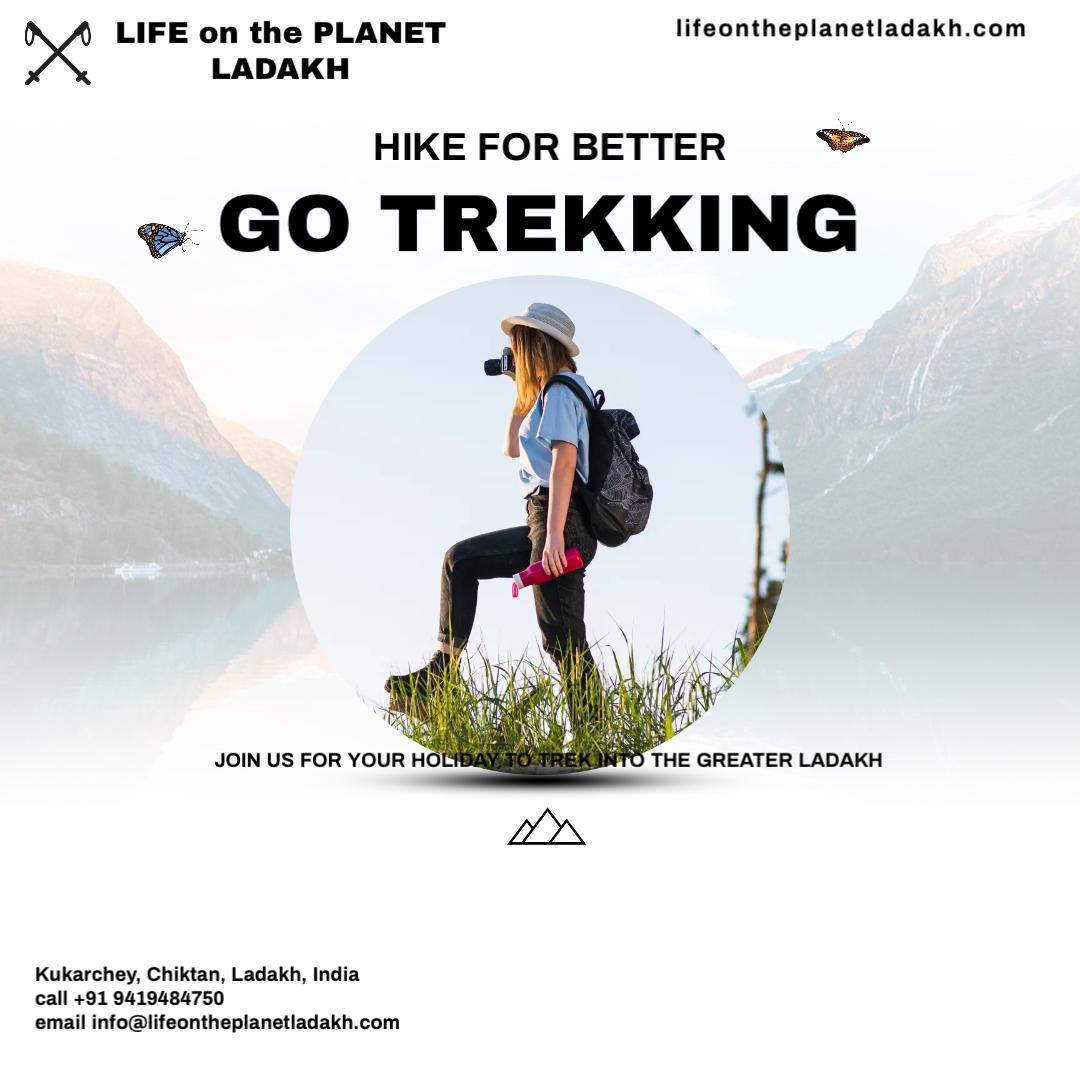
- Message To User
+91-8492935202

Rumtse to Tso Moriri Trek
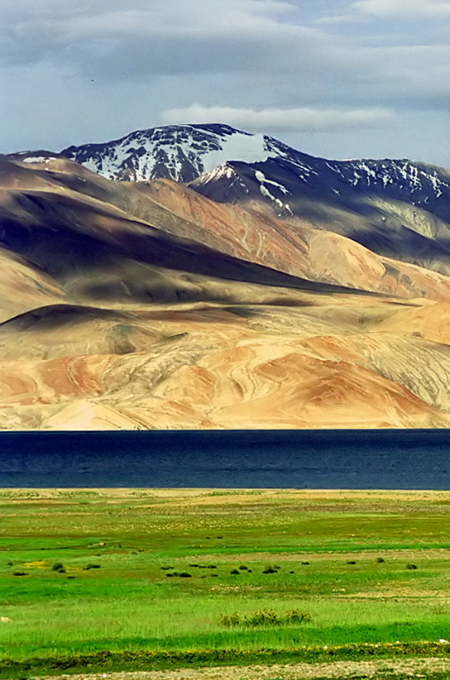
Days - 7 Grade - Moderate Distance - 98 Km Height - Gyamayurla 5200mt+/- Walking Hrs - Max. 7/8 and Min 4/5
Rumtse to Tsomoriri Trek - The Trek from Rumtse to Tso Moriri is one of the most beautiful treks in Ladakh. It takes you through the Changthang region, a high-altitude plateau that has unique landscapes and stunning lakes like Tso Kar and Tso Moriri. This region is home to nomads with their pashmina goats and yaks. It’s an exceptional trek, but demanding because of the crossing of numerous high passes above 5000m.
Itinerary Detail Day 01 Rumtse - Kyamar Day 02 Kyamar - Kyamar La - Mandalchan La - Tisaling Day 03 Tisaling - Shibuk La - Ponganagu Day 04 Ponganagu - Nuruchan Day 05 Nuruchan - Kyamayuri La - Gyamayurla Barma Day 06 Gyamayurla Barma - Kartse La - Gyamayurla Day 07 Gyamayurla - Yalung Nyau La – Korzok

For more information regarding day by day Itinerary, please e-mail us at: [email protected] or click below button to book online.
© Copyright. All Rights Reserved. Absolute Ladakh Trekkings. Website designed & developed by DIGISOFT

Rumtse to Tso Moriri Trek
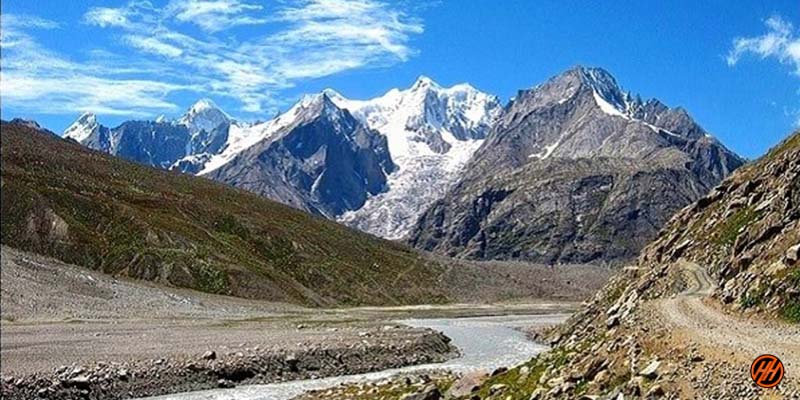
Description
Reviews (1), things to take, available dates, include / exclude, rumtse to tso moriri trek: the largest high altitude lake in the himalayas.
Rumtse to Tso Moriri Trek lies in the Jammu and Kashmir region. Tso Moriri is the largest high altitude lake within Ladakh covering 40 km flanked by the Greater Himalayas and Trans Himalayas.
The trek from Rumtse to Tso Moriri is one of the most picturesque treks in Ladakh . The trail passes through the Changthang region; it is a plateau with exotic landscapes and unique lakes like Tso Kar and Tso Moriri.
The Legend Behind Rumtse to Tso Moriri Trek
The interesting story behind Tso Moriri’s name is – A Chomo (Buddhist nun) woman was riding on a Yak and somehow got carried into the lake, the Yak started drowning into the water and the scared woman cried “Ri Ri” for help until she drowned. Then the lake got its name “Chomoriri”.
Highlights of Rumtse to Tso Moriri Trek
Cross high passes on Tso Moriri trek i.e. Kyamar La, Madachalan La, Shibuk La, Kyamayaru La and Yarlung Nyau La.
Sight of two high altitude lakes Tso Kar and Tso Moriri.
Spot Brahmini ducks and necked cranes with other Himalayan animals and birds like ibex, marmots and kiang.
Come across Chanpa and other nomad families on the way with their goats, sheep and yaks.
Karzok is India’s highest altitude village (4572 m) and there a 500 years old ancient monastery lies on the trading route between Ladakh and Spiti .
Key Points of Rumtse to Tso Moriri Trek
Level: Difficult
Proper conditioning & training of body required
Need proper gear & clothing for sub-zero temperature
Shoes are the single most important equipment.
High Altitude requires proper acclimatization.
Beautiful landscapes so carry good photo gear & Extra battery backup.
Travel light
The backpack should not exceed 10 kgs.
Must Read about Rumtse to Tso Moriri Trek
Duration – 7 days
Best Time – June, July and August
Level – Difficult
Highest point – 5450 m
Weather – Nights are cold and day temperature is pleasant during the season.
Temperatur e – Day (20°C to 30°C) Night (5°C to 10°C)
Starting point – Rumtse
Short Itinerary of Rumtse to Tso Moriri Trek
Day 1 – Rumtse to Kyamar – Distance – 10 km, Time taken – 4 hours
Day 2 – Kyamar – Kyamar La – Mandalchan La – Tisaling – Distance – 13 km, Time taken – 6/7 hours
Day 3 – Tisaling to Shibuk La – Ponganagu – Distance – 14 km, Time taken – 6/7 hours
Day 4 – Ponganagu to Nuruchan- Distance – 17.8 km, Time taken – 5/6 hours
Day 5 – Nuruchan to Kyamayuri La and Gyamar Barma- Distance – 19 km, Time taken – 7/8 hours
Day 6 – Gyamar Barma to Kartse La and Gyamar – Distance – 5.7 km, Time taken – 3 hours
Day 7 – Gyamar to Yalung Nyau La and Karzok – Distance – 16 km, Time taken – 5/6 hours
Day 1 :Rumtse to Kyamar – Distance – 10 km, Time taken – 4 hours
The trail to Kyamar is also called salt road because through this valley salt was transported from Tso Kar to Indus valley and Leh. Witness the different landscapes and sceneries different from Ladakh.
Day 2 : Kyamar – Kyamar La – Mandalchan La – Tisaling – Distance – 13 km, Time taken – 6/7 hours
Leave Kyamar and climb gradually to Kyamar La which offers exotic sight of Changthang region. After a short break at the pass descend towards Tiri Doksa.
It is a temporary shelter of shepherds on the way. Continue trekking and ascend to Mandalchan La, get great views of the surroundings. Halt for a while there enjoy being at the top then descend to Tisaling. After covering 13 km trail reach the campsite and retire for the night.
Day 3 :Tisaling to Shibuk La – Ponganagu – Distance – 14 km, Time taken – 6/7 hours
Leave Tisaling and head towards Shibuk La, the altitude is gained gradually. Reach the top and get amazing views of Tso Kar Lake. Without wasting much time get down to Ponganagu your campsite for today.
Ponganagu is near Tso Kar lake, it is rich in Fauna and some Himalayan animals and birds can be easily spotted here like ibex, marmots and kiang.
Day 4 : Ponganagu to Nuruchan- Distance – 17.8 km, Time taken – 5/6 hours
Walk along the west of Tso Kar lake and there spot Brahmini ducks and necked cranes.
Tso Kar is also known as “White Lake” because on its bank salt gets deposited.
From here walk to Nuruchan, campsite for today.
Day 5 : Nuruchan to Kyamayuri La and Gyamar Barma- Distance – 19 km, Time taken – 7/8 hours
After breakfast, get ready to cross two passes; Horlam Kongka La and Kyamayuri La. On the way come across some nomad families with their goats, sheep and yaks.
After crossing these passes and tough long hike reach Gyamar Barma. Setup your camps here and retire for the night.
Day 6: Gyamar Barma to Kartse La and Gyamar – Distance – 5.7 km, Time taken – 3 hours
Today also you will be crossing a pass “Kartse La”. The trek is 5.7 km long, covering the distance will take around 3 hours.
After crossing Kartse La go downwards to reach Gyamar valley.
Gyamar to Yalung Nyau La and Karzok – Distance – 16 km, Time taken – 5/6 hours
Leave Gyamar and cross the final Yarlung Nyau La, it is the highest pass you are going to cross. From the top bluish freshwater Tso Moriri Lake is clearly visible. This pristine Lake is 40 km long at an altitude of 4,522 m flanked by the Greater Himalayas and Trans Himalayas.
The interesting story behind Tso Moriri’s name is – A Chomo woman (Buddhist nun) was riding on a Yak and got carried into the lake, the Yak started drowning into the water then the scared woman cried “Ri Ri” for help until she drowned then the lake got its name “Chomoriri”.
Descend to the village of Korzok which overlooks Tso Moriri and it is a settlement of Chanpa (nomads). Karzok is India’s highest altitude village (4572 m) and there a 500 years old ancient monastery lies on the trading route between Ladakh and Spiti.
Mandatory Documents
Please carry the documents given below.
Original and photocopy of government photo identity card- (Aadhar Card, Driving License, Voters ID, etc, Passport and Visa important to foreigners Medical Certificate (First part should be filled by the Doctor and Second part by the Trekker) Declaration Certificates
Note: – Many trekkers commit the same mistake of carrying unnecessary items on a trek which only makes the backpack heavy. It is important to know the right items to carry. It differs from season to season if you are trekking in summers then carry less layers of warm clothing and if you are trekking in winters carry enough layers to protect yourself against chilly cold.
Necessary Items for trekkers

Backpack (50 to 60 liters) A strongly built backpack with good support is compulsory for a trek. (Rain cover is important)
Sturdy Trekking Shoes The shoes should be strong enough with good support. The people ask if sports shoes would be comfortable but it is good to bring the right trekking shoes.
The Clothes You Should Bring On a Trek Avoid keeping extra clothes because it only makes you backpack heavy.
Trek Pants – The jeans are never suitable for a trek so you need at least 2-3 trek pants for treks carry more for longer treks.
Jacket – Jackets are very important to carry on a trek it protects you against the chilly weather. So carry 2 jackets on a week long trek.
Layers of warm Clothing Carry warm woolen layers or fleece. Carry more layers during winter season (at least 2 to 3) and less during summer.
Thermals – The Temperature decreases at night so you might be need thermals for Night.
T- Shirts – Bring those t shirts which dry fast.
Poncho –They are needed if you are trekking on a Rainy day to keep you dry.
Hiking Pole
Water Bottle 2
Cap or Balaclava
Woolen and Waterproof Gloves
Socks (Woolen and Regular)
Torch head light
Personal Toiletry Items – (toothpaste, toothbrush, toilet paper, sanitizer etc.)
Carry Personal Medical Kit
Personal Medical Kit (Carry minimum 5 tablets and maximum 10)

Diamox – (Prevents altitude sickness)
Digene – (It cures discomfort in stomach, acidity)
Crocin Advance – (Cures fever and headache)
Aspirin/Combiflam – (Pain reliever)
Disprin – (Cures headache)
Avomine – (Prevents motion sickness)
Avil – (It treat allergies)
Norflox TZ & Lomofen – (Prevents Diarrhoea)
Ranitidine – (Reduces the amount of acid in stomach)
Volini/Moov spray – (For sprains)
Betadine/Savlon – (Antiseptic cream)
Stretchable/Elastic bandage
Note:- Use medicines only when prescribed by the doctor. In case you face any problem during your trek, discuss and take advice from the Professional guide.
Sorry! Here are no Available dates right now. For Any Queries you can Email us with [email protected] and Call Us +91 9756197558
What is Included In This Trek?
Forest Permit and entrance fee
Accommodation in tents on twin share basis
All meals: breakfast, packed lunch, tea, coffee, snacks, soup and dinner
(All camping gears)
High quality tents
Sleeping bags
Separate Toilet tents – Ladies and Gents
Dining Tent
Dining Table
Kitchen team
Radio Walkie Talkie for Communication
Good Experience Trek Leader guide and Technical guide
Medical Kit
Oxygen Cylinders
Crampons and Gaiters
What is Not Include In This Trek?
Transport Facility
Personal Insurance
Medical Certificate
Personal toiletry Items and Personal Medicine kit
On first day En Route to base camp the Breakfast and Lunch are Not Included
Last Day En Route Lunch and Dinner are Not Included
1 review for Rumtse to Tso Moriri Trek
Bharat Soni – June 19, 2023
Your email address will not be published. Required fields are marked *
Name *
Email *
Save my name, email, and website in this browser for the next time I comment.
Related Tours
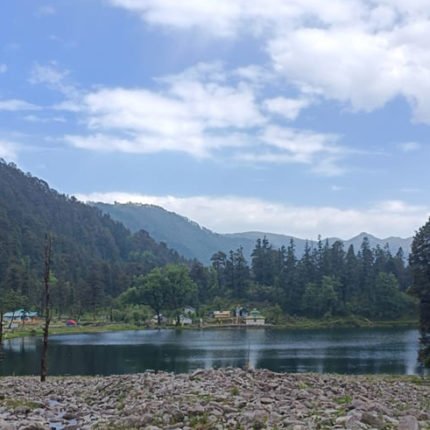
Dayara Bugyal & Dodital Trek
Dayara Bugyal and Dodital Trek follows a similar trek route in Uttarakhand.
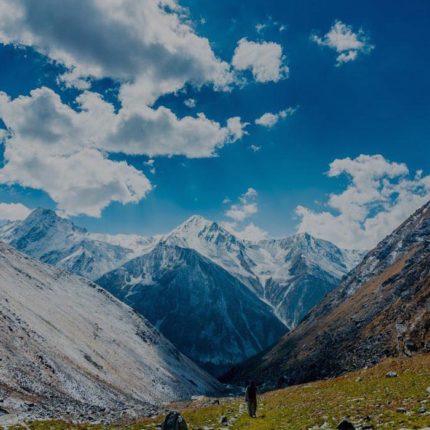
Har Ki Dun Trek
Har Ki Dun Trek is an Enthralling valley in the Garhwal Himalayas
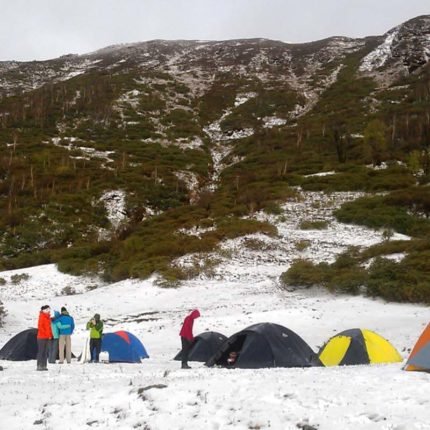
Fachu Kandi Pass Trek
Fachu Kandi Pass – An Unknown Pass ahead Sarutal
Send a quick enquiry
- Overview Itinerary Dates Include/Exclude
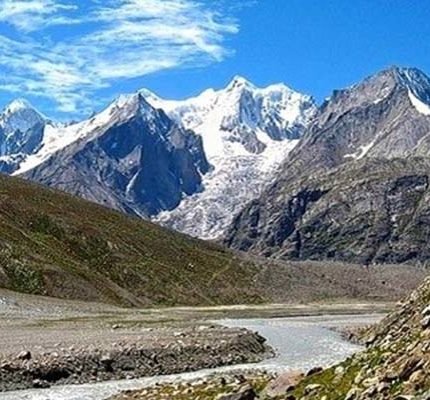
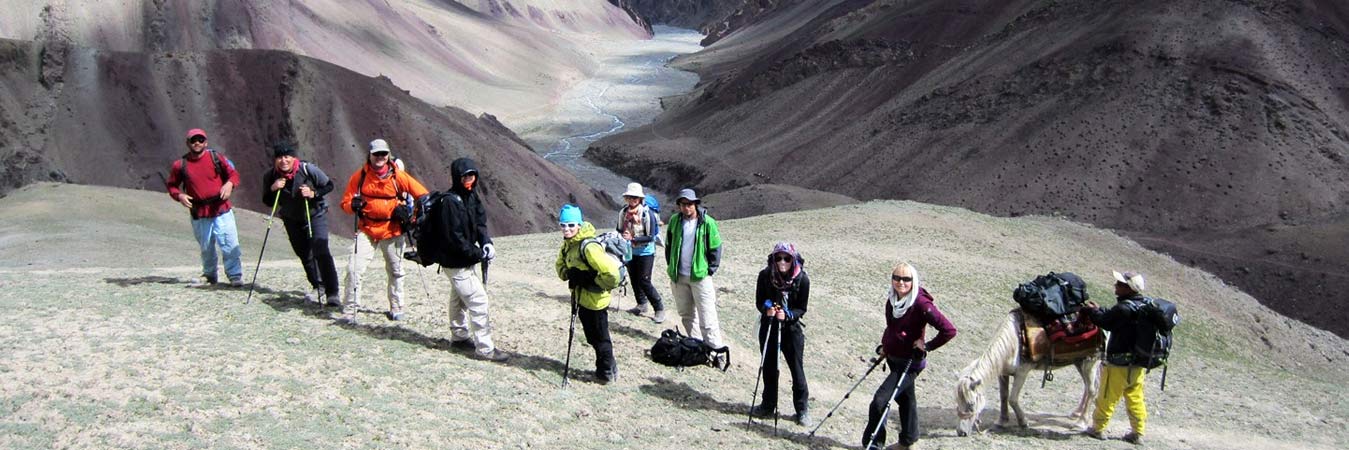
Rumtse to Tsomoriri Trek
View ROUTE MAP
Best Price Guarantee!
Leh - Rumtse - Kyamar - La Tisaling - Pangunagu - Nuruchan - Gyamabarma - Korzok - Alchi - Leh
One of the best ways to explore the Himalayan region, trekking in Ladakh has always fascinated people from around the globe. The harsh yet beautiful region of Ladakh can be explored via various trek routes. Quite popular amongst them is the trek route between Rumtse and Tsomoriri. The amazing 11 days trekking route is filled with various ups and downs of the high passes and snow clad peaks. Besides braving the different forms of Ladakh, one can also feel religiously obliged at the numerous Buddhist monasteries on the trek.
Trip Highlights
Itinerary Detail
On arrival at the Kushok Bakula Rinpoche airport, drive to the hotel and crash into the rooms for a full day rest. Evening hours can be spent walking to the local market followed by an overnight stay at the hotel
Pack your bags for a day-tour of the Indus valley, which includes trips to the Shey Palace and the magnificent Buddhist monasteries-Thiksey, Hemis and Stok. Market strolling of Leh is assigned for the evening. Post that, retire at the hotel for an overnight stay.
Post breakfast drive to Rumtse via Leh-Manali highway. The first phase of trekking starts from Rumtse to Kyamar (4000 m). Moving on with the trek, you will come across a pasture valley where the nomadic herders or Changpas bring their yaks & goats to graze on. Trek on the ancient salt lake route and settle for an overnight camp at Kyamar.
From Kyamar, trek towards Tisaling. On the way, you will come across the Kumur La pass( 4770 m). At the top of the Kumur La, you can watch the breathtaking view of the snow-capped peaks of Ladakh including that of Mt. Kangyatse. On reaching Tisaling call it a day and camp overnight.
Embark on an early morning trek towards Pangunagu. While trekking, halt at the Shibuk La pass and enjoy the panoramic view of the Tsokar lake. The Tsor lake attracts a lot of migratory birds and is an ideal spot to watch them. On crossing the lake, you would be expected to enter the Rupshu valley. The next stop of the trek is at Pangunagu where you can rest for the night at a camp.
Do some sightseeing and bird watching at the Tsokar lake and just at the end of the trail, make a right and enter the Nuruchan village. Retire at the tents for an overnight stay.
Stay overnight at hotel.
This day is strictly dedicated to trekking along the highest elevation of the entire trek. On the way, you would be expected to come across the major passes like Horlam Kongka La and Kyamayuri La. Following this, you will reach Gyamabarma where you will stay for the night.
From Gyamabarma, start the trek over Yalung Nyau La, the highest pass on the trail. From the top of the pass, you can enjoy the mesmerizing views of western Tibetan peaks. The pass will lead to Korzok, which is the only settlement on the banks of Tsomoriri Lake. On arrival, you would be visiting the Korzak monastery. Overnight stay in tents.
Post breakfast drive to Leh all along the Indus river, which is around 220 km from Korzok. On the way, visit the Chumathang hot springs which are believed to cure medical ailments. Arrive in Leh by evening and check in at the hotel for a night stay and dinner.
Start your day with a visit to the Alchi monastery. Post that visit the great statue of Maitreya Buddha at Likir monastery which is situated at the confluence of Indus and Zanskar river. Drive back to Leh and retire at the hotel for an overnight stay.
Take the early morning flight from the KBR airport for a return home journey.
Share This Trip
- Adults Ages 13 or above - +
- Children Ages 2–12 - +
When do you want to go?
- August 2024
- September 2024
- October 2024
- November 2024
- December 2024
- January 2025
- February 2025

Trending Ladakh Tour Packages
Ladakh Bike Trip 2024
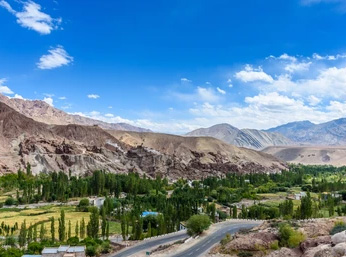
Kashmir Ladakh Package
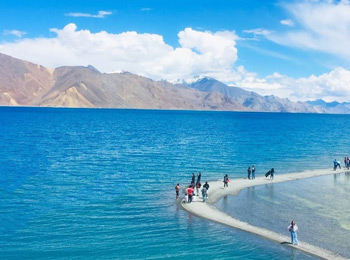
Ladakh Package from Chandigarh
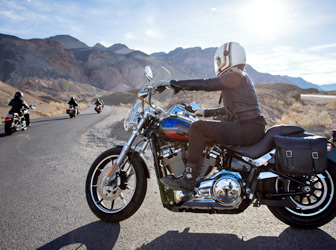
Manali Leh Srinagar Bike Trip (Fixed Group Tour)
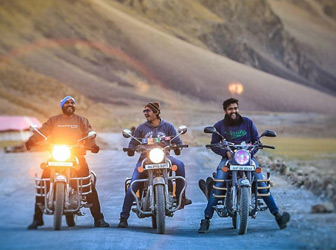
Srinagar Leh Manali Bike Trip (Fixed Group Tour)
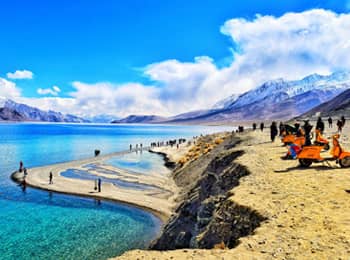
Journey to Ladakh
View route map.

Wandering Boots
Rumtse to Tsomoriri
- Trip Type Cultural experience , Trekking , Wildlife Spotting Trek
- Activities No Activities
- Group Size 12 Max
- Location Ladakh (Trans Himalayas)
- Dates Jul 22, 2023 - Aug 2, 2023
- Trek Overview
- Inclusions / Exclusions
About the trek –
The Rumtse to Tsomoriri trek puts on exhibition all that Changthang has to offer! From scenic revelations to high altitude passes (you cross 7 passes close to or above 5000 mts on this trek!), to the chance of encountering rare species of wildlife like Argalis, Blacknecked crane and Kiangs and finally to experience camping on the shores of two of the most beautiful alpine lakes (Tso kar and Tso moriri); this trek is a complete package! Long walks and high altitudes make it an extremely challenging trek. One requires high fitness levels to be able to competently complete this trek
The area: – Ladakh is bordered by the Greater Himalayas in the west and south, the Karakoram in the north and the Tibetean Plateau in the east. These ranges form a natural barrier and do not allow clouds to enter this valley making it a rain shadow region and thus a cold desert. The term Ladakh translates to land of high passes. Some of the highest motorable roads in the world are here. Ladakh is a major tourist destination in the summers.
Expected weather –
- Chances of rain/hail – Chances of rain is very less. One can expect a mild occasional drizzle. Ladakh/Spiti is a rain shadow region and hardly gets any rainfall.
- Snowfall – Possible in August, September on the pass day
- Temperatures – The temperature is a lot cooler in this region as compared to other areas in the Himalayas. Afternoon – upto 20 degrees Nights – around zero degrees (June) and -12 degrees (September end)
- Day 1: Arrive in Leh. Check into a hotel. Rest day. Overnight at hotel in Leh.
- Day 2: Acclimatization day at Leh. Overnight at hotel in Leh.
- Day 3: Drive from Leh to Rumtse Distance - 76 Kms; Time - 2-3 hours Trek from Rumtse to Kyamar (4538 mts) Trek Distance - 11 Kms; Time - 4 hours. Overnight stay in camps.
- Day 4: Trek from Kyamar to Tisaling (4940 mts) via Kyamar La (5071 mts) and Mandalchan La (5206 mts) Trek Distance - 14 Kms; Time - 8 hours. Overnight stay in camps.
- Day 5: Trek from Tisaling to Ponganagu (4651 mts) via Shibuk la (5275 mts) Trek Distance -14 kms; Time - 7 hours Overnight stay in camps.
- Day 6: Trek from Ponganagu to Nuruchan (4679 mts) Trek Distance - 18 kms; Time - 7 hours Overnight stay in camps.
- Day 7: Trek from Nuruchan to Gyamar Barma (5190 mts) via Kyamayuri La (5410 mts) Trek Distance - 19 kms; Time - 9 hours Overnight stay in camps.
- Day 8: Trek from Gyamar Barma to Gyamar (5150 mts) via Kartse La (5384 mts) Trek Distance - 6 kms; Time - 4 hours Overnight stay in camps.
- Day 9: Trek from Gyamar to Kerzok (4550 mts) via Yalung Nyau La (5435 mts) Trek Distance - 16 kms; Time - 7 hours. Overnight stay in camps.
- Day 10: Drive to Leh Drive time - 6 hours. Overnight stay in hotel.
- Day 11: Trek ends post breakfast. Drop arranged to Airport.
- Day 12: Buffer Day: to be utilised in case of bad weather. Trekkers are requested to account for this day while booking their tickets.
Trek price includes:
- Complete Stay and Accommodation (Twin/Triple sharing basis) for the entire duration of the trek.
- Transport from Leh to Rumtse and Korzog to Leh
- Food from the first day to the last day of the trek (barring lunch in Leh).
- Hotel stay in Leh.
- Airport /Bus stand Pickup. (On trek specific dates only. Note you have to manage your travel yourself if you come early and leave later)
- Rentals for all common gear provided to you like tent, sleeping bags, crampons etc.
- Forest entry permission and camping charges.
- Guide and expertise charges.
Trek price excludes:
- Meals or drinks purchased by participants during the travel or trek (example biscuits, fruits etc)
- Rentals for personal gear ( Refer things to get section – Things to Carry for Long Summer Treks )
- Trek Insurance (Optional)
- Any extra government charges.
- Flight/Train/Bus ticket till Leh.
- Backpack offloading charges. You are expected to carry your own backpack. Trekkers unable to do so can opt for a porterage service at ₹400/day.
- Buffer day charges
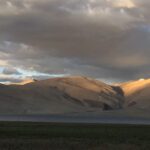
How to get to Leh?
You could come via flight to Leh. Alternatively you could come by road from Manali to Leh (approx 14 hours with breaks) or from Kasmir to Leh (approx 16 hours with break).
How should we plan our travel for this trek?
Plan to arrive into Leh on Day 1 latest by 5pm in the evening. Plan your return (departure) from Leh on Day 11 after breakfast. We will coordinate arrival and departure timings of all trekkers once the group is formed for airport pick ups and drops
Who will accompany us on the trek?
A certified trek leader, a guide, cook & porters will accompany you during the trek
Will there be mobile network during this trek?
Can i consume alcohol or smoke during this trek.
The common perception is that alcohol makes you feel warmer, however it also dehydrates you & dehydration can be fatal while trekking. Hence consumption of alcohol is prohibited. Smoking in camps is not allowed.
Will there be wild animals around the camp?
Wild animals do not frequent camps. They tend to stay away
Is trekking safe for girls?
We've been organizing treks for over two years and have had many female trekkers on our treks. In fact, a lot of them come solo for treks. There has never been a complaint about the atmosphere of a trek, about other trekkers or our professionalism. They have all been kind enough to leave a review on our website
Will Boys and girls have separate accommodation?
What are the sleeping arrangements like on campsites.
You will be sleeping in twos or threes in your tents in sleeping bags. The sleeping bags are snug and comfortable. If you are used to sleeping on a pillow, do carry an inflatable pillow or any small cushion that could provide you pillow-like comfort to sleep.
What about toilets?
In all the camps where the accommodation is in guest houses/home stays, there will be proper toilets. On the day of camping, we will have toilet tents, the standard, most hygienic way of answering nature’s call. A deep pit will be dug in the ground and once you’re done, you will have to use a shovel & throw in some dirt from a mound of dirt kept nearby. These will be dry toilets with no water hence please carry tissue roll for the toilet tent (refrain from using wet wipes as they are not bio degradable), for the rest of the days, you can carry rolls as per your convenience.
Will there be bathing facilities available on campsite?
There are no bathing facilities at campsites.
Do tents have charging points?
Tents do not have charging stations.
What are the Things to Carry (equipment / gear)?
1. Good Sturdy Backpack: Prefer a trekking pack over a backpacking one. The size of the backpack depends upon the participant. Normally for a 7-9 day trek a 50-60 litre pack should suffice. 2. Shoes: Any Waterproof trek (not hike) shoe would be ideal. 3. Socks: 3 pair cottons and 3 pairs of woolens. 4. Trek pants (Ideally Water Resistant): Get two quick dry summer trek pants .On summit climb or a major altitude gain day you can replace one dry fit trek pant with Shell trekking pants. If you don’t have a trek pants you can replace it with Gym Track pants. 5. T shirt/Base layer: Get 3 T shirts/trekking base layer on the trek, one of which should be thick and full sleeve. Avoid cotton and prefer dry fit. 6. Fleece/ Sweater/Good quality Hoodie: Get 1 fleece jacket or sweater . Fleece is preferred over sweater or hoodie as it is lightweight and easy to carry. Sweaters and Jackets can be heavier than Fleece for the warmth they offer. 7. Down/ Padded Jacket – Down/Padded jacket (Upto -5 degrees ). If you don’t want to get a padded/Down jacket, get two fleece. Cotton track pants for camp – These are specifically for cold evenings at the campsite.This can be ignored if you are comfortable wearing your trekking pants in the camp. 8. Thermals : 1 pair. We wear thermals only upon reaching the campsite not while trekking. 9. Windproof Jacket: All rain proof can be used as Wind proofs. Required as an additional layer during trekking in windy conditions. Avoid if you have a rain proof jacket. 10. Rainwear: Option A – Rain set – One Waterproof jacket (3000 mm waterproofing), Rain proof pants and Bag cover Option two – Poncho that covers your body and bag completely. We ideally recommend Option 1 as poncho makes trekking difficult. 11. Woolen Cap/ Balaclava: (1) To cover your ears, head and neck.Get one woolen cap and one neck warmer or balaclava. 12. Neck Warmer/ Scarf (1): For evenings. Avoid if you are comfortable using a Balaclava. 13. Gloves: 2 gloves out of which 1 can be water proof and one woollen. The waterproof one has to ideally be padded and a size larger than you normally use. This is so that you can wear both your gloves together if required. 14. Suncap – 1 15. Sunglasses – 1 16. Toiletries – Also include sunscreen, moisturizer and lip-cream 17. Headlamp/Torch -1. Preferably headlamp. 18. Two water bottles (1 litre each) – One can be a thermos Flask. One can also get a hydration pack. 19. Camp shoes/Flip flops for camp Plastic covers for inside the backpack to keep your clothes dry 20. Daypack – Required if you have a summit days climb. Preferably one that can be compressed. 21. Documents: 2 passport sized photograph, Address and Photo proof (Driving License or Aadhaar card), Doctor’s Medical certificate saying that you are fit for the trek. We reserve the right to not take you on the trek if you fail to produce this. 22. Trekking pole
What food do we need to carry?
Meals will be provided by us. However you may carry snack items to much on like dry fruits, biscuits, chocolates, protein bars, or nuts.
Am I expected to carry my backpack? What if I am unable to carry my backpack?
Yes, you are ideally expected to carry your backpack. But you do have an option of offloading your bags on a mule for an additional cost. The cost will be 400/ per day per bag. One is expected to inform us about offloading 1 week prior to the trek
How can we start preparing for the trek (exercises / workouts)?
8-12 kms slow jog OR 35-40 kms cycling Pace is not important, consistency is important (non-stop jogging/running/cycling);;;;;;;;;; Squats 50 x 3; Lunges 50 x 3; Calf raises 50 x 3;;;;;;;;;; Climbing stairs 35-40 floors with bagpack
What's the Cancellation policy?
In case of cancellation If you cancel – – 60 days before the trip: we can process a complete refund minus minimum processing charges. – between 30-45 days before the trip: you will be refunded 50% of the trek fee. – within 30 days before trek starts: No refund. – and your spot is replaced in a full batch: we will process a complete refund after canceling minute operational charges. (For fixed departures only) Covid cancellation policy- 15 days before the start date of the trek – 100% refund or Wandering Boots Adventures voucher. 7 days before the start date of the trek – 50% refund or Wandering Boots Adventure voucher.
Related Trips
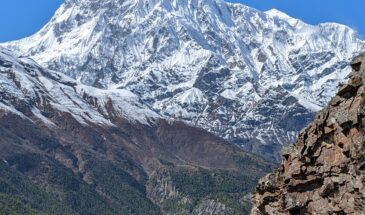
Annapurna Circuit with Nar Phu Valley
The Annapurna valley was first explored in 1950 by a French Expedition team trying to attempt a summit. Their account and description of the valley encouragedTour Details
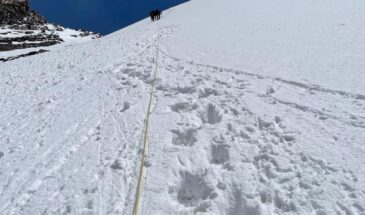
Deo Tibba Expedition (6001 mts) with Norbu peak (5226 mts)
ABOUT THE PEAK Explore the majestic Mt. Deo Tibba, standing at 6,001 meters in Himachal Pradesh’s Kullu Valley. Known as the assembly point for gods,Tour Details
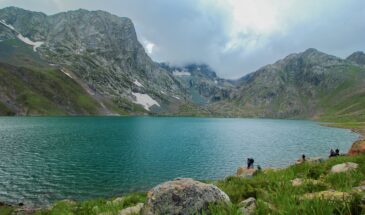
Great Lakes of Kashmir (Relaxed Itinerary)
About the trek – Great Lakes of Kashmir is an absolute visual marvel with its alpine lakes, lush green meadows, and exquisite campsites. The views onTour Details
Book your slot in 3 simple steps!
Step 1. Register yourself – Click on this link and fill the Registration form
https://forms.gle/LFy2MRjadMLFaJPFA
Step 2. Make an advance payment –
Make a payment of 50% of the Trek fee to this account
Bank details
RBL Bank Account Number -409000968477 Name – Adventum Escapade private limited Ifsc – RATN0000159 Current account
Send a screenshot of the transfer made to us on WhatsApp 9041139949 or Email [email protected]
Congratulations! You have booked your slot!
For assistance you could contact us on the contact info given in step 3.

Rumtse to Tso Moriri Trek
Andy Crisconi February 21, 2024 Himalayan Trekking Tours
Confirmed Group Trip Date: August 17 to September 1, 2024
The hike from Rumtse to Tso Moriri is one of the most beautiful in Ladakh. Our trekking journey takes us to the Changthang region, a high-altitude plateau comprising of unique and colorful landscapes and stunning alpine lakes such as Tso Kar and Tso Morari. This secluded region of Ladakh is home to Changpa nomads, who wander these lands with herds pashmina goats and yaks. This is an exceptional, but demanding hike, which includes numerous high pass crossings and tranquil camping sites.
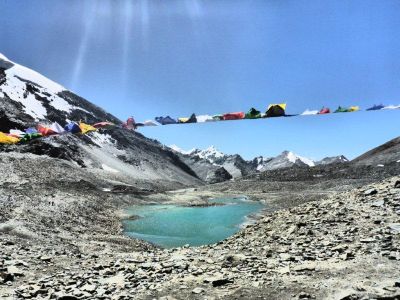
- Trekking Trips In Nepal
- Trekking Trips In Bhutan
- Trekking Trips In India
- Trekking Trips In Tibet
- Worldwide Trekking Tours
- Classic Himalayan Treks
- Epic Himalayan Journeys
- Camping Trips
- Lodging Trips
- List of All Trips
- Mount Everest Trekking Trips
- Annapurna Trekking Trips
- Kingdom of Mustang Trekking Trips
- Our Nepal Connection
- Trip Sign Up Info
- Trip Reservation Form
- Booking Conditions
- Adventure Travel Trip Insurance
- Avia Travel Services
- General Adventure Tour Information
- Health, Medical & Altitude Advice
- Trekking – Frequently Asked Questions
- Trekking Gear & Clothing Information
- What Is Trekking?

Rumtse to Tso Moriri Lake Trek
Trekking arrangement: Horses, horsemen, food, cook, helpers, back up Jeep, dinning tents, kitchen tents, table, stool, sleeping tents, mattresses, Back up jeep etc.
Trekking in Ladakh Himalaya (Lamayuru Trek)
A wonderful trek for Landing from Lamaruru monastery and remote area of Sumda. Surely , this trek will be the experience of life time.
After having wonderful flight from Delhi to Leh, we will receive you at Leh airport and transfer to hotel. Full day need to acclimatize because now you are at the altitude 11300ft above the sea level. Overnight Hotel.
Today we will take you to historical monasteries of Ladakh i.e Shay Palace, Thiksay and Himis monastery located on the bank of riven Indus by car. After driving along the Indus First you will visit Thiksay monastery located on the top on a hill decorated with many stupas, paintings and monastic school. The monastery headed by Ven. Khanpo Ripochay the present head lama of the monastery. This is an example of the Potala Palace of Tibet and maintains its monastic culture. The Morning Prayer makes it very spiritual start with the rising sun with the tune of conch shell. Later drive to Hemis monastery. The biggest and richest monastery of Ladakh. Hemis monastery is a land mark of the history of Ladakh. The famous King Singay Namgyal was invited Lama staktsang Raspa to Ladakh and bless the monastery. Visit the 15 century painting of gold and silver, statues, and big yard of Hemis monastery. On the way back to Leh one can visit Shay Royal Palace. This was the summer palace of the king of Ladakh that a small lake bellow the place is reflecting the palace and wonderful view of Indus valley. Overnight Hotel
Today we drive to Lamayuru (127 Kms), enroute visiting the 15th Basgo Castle. Once it was the capital of Lower Kingdom of Ladakh. Now the Basgo Castle is taken by UNISCO for world Heritage site. Later continuously drive to Lamayuru by visiting Alchi monastery. On arrival Lamayuru you will have welcome tea at our camp and then day at leisure to explore Lamayuru village and the dramatically located Lamayuru monastery which is one of the oldest in Ladakh. Overnight camp
After breakfast witness the Morning Prayer. Later meet your trek team with horsemen and start the trek. The trail follows a stream flowing down by the villages for some distance and then climbs to the small pass of Prinkiti La (3750m). From here descend gradually to the small village of Shila, from where it's a short distance to Wanla (3250m) where we set up camp near the village. Spend the afternoon exploring the village and the ancient monastery of Wanla, which is an important heritage site of Ladakh. Overnight camping
After enjoying the first camp in Wanla village, start trek to small village of Phanjila (3410 m) walk through the scattered village of Ursi. A narrow gorge till a water mill is reached at the far end of the village, thence trek through the village of Hinju (3720 m) and proceed to the campsite near a (Doksa) a summer Shafer home camp.
Morning after breakfast , follow the ascending trail to the ridge below Kongski-la (4950m), where you might spot some rare wild life of Ladakh. Then gradual ascent to the Kongski-La top, which is surrounded by magnificent views of mountains ranges. The descent from the pass is quite steep with loose moraine causing difficulty in walking till the left side of valley floor is taken to reach the campsite. Overnight Camp Sumda Doksa.
After breakfast, the trek will start with a short walk and some river crossings to reach the village of Sumda Chenmo. Then we follow the left side of the valley before cutting through thickets of wild rose bushes to reach another river crossing, and then negotiating a steep ascent over Lanak. Overnight Camp
Today the trek mainly involves a straight climb to Dung-dung Chan La top (4820m), which provides grand views of the Stok Khangri peaks and the Zanskar Range. Then descent is gradual along a ridge toward the continually narrowing valley. Then reach Chilling village, the famous for the tradition of a variety of metalwork during the king of Ladakh. From Chilling take a drive to Leh for 3 hrs. Overnight Hotel
Today, morning is a free & leisure. Afternoon walk to e to visit Leh Palace & Shanti Stupa & then explore the city centre and the markets at your own pace for picking up some souvenirs and last dinner will be at hotel
Today Early morning transfer to airport to catch flight to Delhi ..
Send Enquiry
- Cultural Program Rs. 9800 per program.
- River Rafting INR 1800 Per Person (Phey Nimoo (Indus) / tsoks-sti Nimoo (Zangskar) 2 Hrs Approx.
- River Rafting INR 2400 Per Person Chilling Nimoo (Zangskar River)
- Professional Tourist Guide Rs. 1800/- Per Day.
- Two Hump Camel Ride at Nubra Valley at Sand Dunes: INR 500 (30 Mins)
- 1 Litre Packaged Water Bottle: INR 40 Per Bottle.
- Assistance on arrival & departure at Leh airport.
- Accommodation on twin sharing basis during trek in Camps.
- All meals which starts with the lunch on day 1 & ends with lunch on day 06.
- An experienced and qualified local Ladakhi Trek /monastery Guide for the tour.
- Surface transport by using non ac Qualis /Innova for all sightseeing and transfers in Leh.
- Monastery entrances and monument entrance fee of Ladakh.
- Complete trek arrangements with a very good cook, helpers, nice comfortable 2-men alpine trekking tents, comfortable sleep well carry mats, tables/stools, toilet tents, kitchen cum dining tent (Members will have to bring their own sleeping bags).
- Mules/horses for carrying member luggage and camping equipment's Camping fee & permit & all applicable taxes.
- Any Kind of Personal Expenses or Optional Tours / Extra Meals Ordered
- Monument Entrances, Rafting & Camel Safari Charges.
- Anything not specifically mentioned under the head Prices included.
- Tips, Insurance, Laundry, Phone Calls.
- Any Kind of Drinks (Alcoholic, Mineral, Aerated)
- Cost incidental to any change in the itinerary/ stay on account of flight cancellation due to bad weather, ill health, roadblocks and/or any factors beyond control.
- GST will be applicable on total amount.
- Prices valid from 01st April 2014 to 31st October 2014.
- Prices valid for minimum 02, 04 & 06 pax traveling together in one vehicle.
- 100% payment to be deposited before the trip starts.
- Final Confirmation will be provided on full payment.
- April & October Month, Pangong Lake Journey will be done in one-day excursion.
- For Cancellation please refer to our Terms and Conditions available at our booking office.
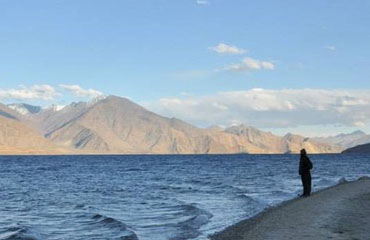

- Summer Treks
- Winter Treks
- Offbeat Trails
- Expeditions
- South India Treks
- Western Ghats
- Find Your Next Adventure-->
- Latest Updates
- Contests & Giveaways
- Practicing Sustainability
- Practicing Safety
Informative
- Our Book of Adventures
- The Opinion Corner
- Picture Blogs
- Trekkers' Blogs
- Customize Your Trip
Trek Of 6 Passes & 3 Lakes In Ladakh
Pranav harish, highlights of rumtse to tso moriri lake trek.
Ladakh is widely known for its jewels like Pangong Tso and Khardung La for tourists and Stok Kangri or Chadar Trek for avid trekkers. However, even though these are worth your time, there is one particular region of Ladakh that overshadows all these aforementioned places and that is the marvelous Changthang Valley, connecting the village of Rumtse to the ever so desired Tso Moriri Lake .
Why haven’t I heard of this before? You may ask.
Well, it is because it does not fall in the radar of popular touristic attractions. The only way to access this remote valley if on foot.
How do we do that? Is it that easy?
Haha! If it were that easy then everyone would be there.
Just like all other regions of Ladakh, the Changthang Valley, in particular, is tucked between high passes and harsh terrain.
So, we made it easy for you.
We have made it accessible for you but the trek is nothing close to easy.
Rumtse Village, the starting point of the Rumtse to Tso Moriri Lake Trek
Located on the Leh-Manali highway, Rumtse is a small village home to 20 families. The Rumtse to Tso Moriri Lake Trek starts from this hamlet which itself is at a height of 4166 M and takes you to the remote freshwater lake of Ladakh, Tso Moriri but, only after crossing 105 km with 6 astonishing high altitude mountain passes over 5000M.
Thousands of people ride on the Leh-Manali highway and hundreds visit the blue Tso Moriri Lake.
But, what about everything that lies in the middle of this?
The sheer beauty , raw nature, and remoteness of the Rumtse to Tso Moriri Lake Trek are simply put, overwhelming. Too much to grasp during the entire duration of the trek.
How much can your brain register? Can you even process everything that you see in this trek? Such a feeling is inevitable in this trek with you.
No wonder, this trek is legendary and quite possibly the king of all treks in Ladakh.
We recently had the outright delight to explore the Rumtse to Tso Moriri Lake trek and honestly, we cannot wait to share the highlights of this trek.
1. Rainbow Mountains – It’s Raining Colors
“Can you see the pass yet? Do you see the prayer flags?”, I shouted while my friend was standing way ahead of me.
“No, not yet. But, wait till you see this”, he shouted back.
I pushed myself uphill while wondering what’s lying ahead of me and then “boom”, the visuals hit us hard.
What did we see?
A burst of colors illuminating the landscape
The entire landscape is painted with different shades of green, red, maroon, grey and brown. A cascade of colors in different patterns making the terrain look like a rainbow mountain.
For all those travelers out there, you must be aware of the peculiar rainbow mountains of Peru and China.
But how many of you knew that such scenery is present in our very own country, in Ladakh?
Walking on this extraterrestrial terrain is the ultimate experience
With the entire region of Ladakh being submerged under the sea ages ago along with the sedimentation of rocks and terrain over the years, the landscape gets a wide array of unique colors some darker than the other to make it look like an artwork.
Nature is indeed the best artist there is
Such a colorful setting is present only in the Changthang Valley. Miles and miles of such pigmentation give the landscape a very unique appearance and a certain charm that cannot be justified in words.
2. High Altitude Passes – And They Keep On Coming
Majority of the treks that are out there in states like Himachal, Uttarakhand, Sikkim and most treks in Ladakh itself usually have one pass crossing or in some cases two.
Here is where the Rumtse to Tso Moriri Lake Trek steals the show with not one or two or even three but “ six ” passes.
Let me repeat it.
SIX passes – Kyamar La (5090 M), Mandalchan La (5175 M), Shibuk La (5257 M), Kyamayuri La (5400 M), Kartse La (5370 M), and Yalung Nyau La (5414 M).
Kyamar La (5090 M) - 1st pass of the trek
Each of these passes is more than 5000M that are arranged in regular intervals separating many such enchanting valleys that seem to have appeared from heaven. With insanely wide landscapes, the Rumtse to Tso Moriri Lake Trek is an ocean of passes .
Kartse La (5370 M) - 5th Pass of the trek
Marked with Buddhist prayer flags the passes give panoramic views of the charming Changthang Valley and the Rupshu Plateau with luscious landscapes, serpentine rivers, green valleys, snowcapped peaks and the vastness of them all.
View of Tso Moriri Lake from Yalung Nyau La (5414 M) - 6th and final pass of the trek
Six passes may sound extremely difficult and tiring, but these passes have no technical climb involved. But due to the constant increase in altitude one has to be extremely fit and it’s imperative to acclimatize properly.
3. Campsites – A World In Itself
Campsites are what make or break a trek, at least up to a certain extent they do. Imagine a cramped up campsite with not much to offer other than some views of the surrounding trees and mountains. There is nothing wrong with such a campsite since it has its own unique charm.
But in the Rumtse to Tso Moriri Lake Trek, you are venturing into the unknown per se with over 100km trek across draining passes, so it is understandable that your expectations must be high at every turn and stop since this trek has already set unbelievably high standards.
Campsites tucked between two passes are a norm in this trek. The campsite of Tisaling with Shibuk La in the foreground.
The campsites of this trek are not at all disappointing, with every campsite being better than the one before. They are so vast and humongous that your phone or camera can never fully capture the full length or breadth of it. Tucked between high passes and snowcapped mountains, you get to camp beside a winding river over a green pasture with wild asses, marmots and blue sheep running around the campsite keeping you company.
Wild asses and marmots will be your companions throughout the trek
The campsites are very windy with the last two campsites being over 5000M in altitude which makes it one of the best highlights of this trek. Camping at such high altitudes with a distinctive topography is the ultimate reward one can ask for.
Picture perfect campsites have it all - A complete package of supreme visuals
Take all the best camping spots in this world and fit them in the campsites of the Rumtse to Tso Moriri Lake Trek. A world that has all.
4. Lakes – Celestial Waterbodies Flanked By Mountains
The Rumtse to Tso Moriri Lake Trek packs 3 stellar lakes namely Tso Kar, Startsapuk Tso and Tso Moriri Lake.
Tso Kar is a saltwater lake also known as “White Lake” due to its high salt content and salt deposits on its shore. This fluctuating lake is situated in the Rupshu plateau at an elevation of 4530 M. Tso Kar is also the smallest of the three high altitude alpine lakes of Ladakh when compared to its counterparts Pangong Tso and Tso Moriri.
Tso Kar - The White Lake
Connected by an inlet stream with Tso Kar, the smaller lake of Startsapuk Tso lying to the south-west forms a 9km 2 More Plains pool which is dominated by two peaks, Thugje (6050 M) and Gursan (6370M).
In ancient times the Changthang or Changpa Nomads used to export salt to Tibet, thus the Tso Kar and Startsapuk Tso Lakes were an important source of salt.
The final pass of the trek, Yalung Nyau La gives the first glimpse of the captivating Tso Moriri Lake at a distance. Almost like an aerial view, the Tso Moriri Lake glistens radiating blue color with towering snowcapped mountains encompassing the lake from all sides.
Tso Moriri Lake - The Mountain Lake
Being a freshwater alpine lake at an astounding altitude of 4520 M, the Tso Moriri Lake or the “Mountain Lake” is a sanctuary for several Himalayan birds and animals. Being sacred to the Ladakhis especially for the people of Changthang Valley, Tso Moriri Lake is a twin to the Pangong Lake and undeniably more beautiful.
The thought of reaching these 3 exquisite lakes in one trek is simply awe-inspiring and exciting, to say the least. The effort taken to reach these lakes and witness it from a unique perspective is simply magical and worthy every sweat.
5. Changpa Nomads – A Community Residing On The Roof Of The World
The Changpa are the nomadic settlement of shepherds in the Changthang Valley that have inhabited this region of Ladakh since ages. In ancient times, they would trade salt with the Tibetans.
The Changpa Nomads of Changthang with their horses
The Changthang Valley is where telephone wires are unheard of, roads are literally non-existent, electricity is a dull flicker from a bulb powered by tiny solar panels, the lives of the Changpa nomads is harsh and difficult. Moving between rivers and meadows fed by glacial melt across high passes and difficult terrain, the Changpa nomads move their herds of Pashmina goats, yaks, sheep and horses season after season with the unfortunate reality of losing their animals to predators like snow leopards and Tibetan wolves.
The Changpa mostly live in canvas tents in the harshest of conditions
Their accommodation is nothing but stone-walled structures and canvas tents. These people have flourished rearing their livestock for consuming and selling their products such as milk, meat and hair with bare minimum resources for over a millennium.
Semi-permanent settlements made from stone and mud
With a completely self-sustained lifestyle, the Changpa nomads continue to live in these severe conditions even during winters when the temperatures plummet down to -30 deg Celsius.
The Rumtse to Tso Moriri Lake Trek lets you interact closely with these Changpa or Changthang nomads, learn and understand their culture and way of life. A once in a lifetime opportunity to get close to nature and the people that call it home.
6. Landscape – A Four Season Pictorial
What comes to your mind when we say “A Four Seasons Trek”?
Is it the fact that a trek can be done all throughout the year?
The answer to this is, NO.
What we mean by a Four Seasons trek is a spectacular opportunity to witness all Four Seasons in one trek.
Does it still sound vague to you?
Let me explain.
Look at this...
The alluring landscape of the trek will melt your heart
Rumtse to Tso Moriri Lake Trek gives you green pastures (Summer), snaky rivers (Monsoon), brown and barren landscapes (Autumn) and snowcapped mountains (Winter), all in one sight.
The combination of these characters uplifts the scenery to a different level altogether. Nowhere else do you get to witness a trek of such grandeur and magnitude.
The landscape painted bright with nature's might
A chance to camp in the midst of snowclad mountains and a gushing river cutting through the valley with green meadows on one side and a desolate terrain on the other is alluring making it an unforgettable experience.
The landscape is bronzed and arid yet endearing in silence and solitude.
With all the information on the Rumtse to Tso Moriri Lake Trek being dropped on your lap, the point we are trying to make is simple.
Do this trek for its beauty, for its offbeat nature, for its passes, for its lakes, for the people that rule this region, for the never-before-seen views, for its massive length and for its breathtaking visuals.
The achievement of crossing over one entire region of South-West Ladakh in no small feat. You can discover one entire civilization in the process, end up rediscovering yourself and test your endurance by overtaking 6 passes, 3 lakes and 100 km of pure unadulterated beauty.
Make your Ladakh experience unlike anything else in your life. Take on the challenge and conquer the Roof of the World.
For all those people who say “Got Leh’d” have no idea what they are talking about. Wait till you do Rumtse to Tso Moriri Lake Trek.
The king of all treks indeed.
An enthusiastic traveler and trekker who found his calling in the Himalayas. Read more
Want to Blog for Bikat Adventures?
Add a comment.
* Your email address will not be published. All fields are required.
Submit Enquiry
RUMTSE TO TSO MORIRI

Max. Altitude

In A Hurry?
You can download our complete tour details and guide for RUMTSE TO TSO MORIRI . Also, you can schedule a callback from UFO Adventure Travel.
“Always carry a windcheater or waterproof jacket in your day bag. The weather can change abruptly on the Changthang Plateau.”

Saumya Khaitan
CEO, DoIt Sports, Mumbai
Tour description
The walk in the highlands of Ladakh will give you the breathtaking views of the two most beautiful turquoise lakes in Ladakh, Lake Tso Kar and Lake Tso Moriri. The salt lake of Tso Kar (white lake) has widely been used by the local nomads, Changpas, as a source of salt which they transport to Tibet for trade. Lake Tso Morari is the largest and the most beautiful of inland lakes in the Trans Himalaya regions of Ladakh. This part of the elevated Rupshu Valley is mostly inhabited by 'Changpas ', the nomadic migratory shepherds of Tibetan origin who can be seen with herds of sheep, goats and yaks on the plains of Changthang. The Changpas use this valley for trade and cultivation. After experiencing Rumste to Tso Moriri trek you will surely say its truly a breathtaking trek in Ladakh.

Virtual tour of RUMTSE TO TSO MORIRI
Is this Holiday for you ?
On this holiday of Rumste to Tso Moriri trek we will be constantly at an altitude of more than 3500m and you will be crossing multiple 5000m pass. Therefore, it is essential that you acclimatize well in order to make the best of the week. You will be advised by the UFO guide to rest and keep your body hydrated as much as possible on the first day of arrival. Your oxygen levels will be monitored from time to time to check on the level of acclimatization. During Rumste to Tso Moriri trek, their is a fair bit of walking to be done every day, and we would encourage you to do a bit of walking/running and breathing exercises to enjoy this trek. A fair level of fitness will be required.
Capture the splendor of Ladakh. Trek across multiple 5000m passes.
Explore the wild plains of the Changthang Plateu and trek across multiple 5000m passes
Witness the beauty of the salt lake, Tso Kar and Tso Moriri

- Dates & Price
- 11 Days, 3 nights hotel, 7 nights camping
- 10 breakfasts, 10 lunches, 10 dinners
- max group size: 10
- On the high plateau of Ladakh, the maximum daytime temperature low down on our trip (and at Leh) will be around 15°C, with night-time lows below 0°C. At high altitude, the sun has a very strong effect and at the height of the day it will feel hotter than the indicated temperatures. Ladakh is not adversely affected by the monsoon and we can usually expect stable, weather. However, mountains do generate their own weather systems and some rain or wind cannot be ruled out .
Please contact [email protected] for quotes.
What's included.
- Local English speaking guide
- Airport transfers as described
- All land transport involved in the itinerary
- All accommodation as described
- Meals as per the Meal Plan
- All permits and entrance fees in the itinerary
- All costs are applicable for double occupancy
- Oxygen tanks (for emergency only)
- Private group chemical toilet
What's Not Included
- Travel insurance
- Some meals as per the Meal Plan
- Airport transfers other than those described
- Tips for local staff including the local guide and drivers
- Miscellaneous expenses - drinks and souvenirs etc.
- Personal camera equipment & gear
- Flights and airfare
- Meals will be a mix of local and comfort food. Breakfasts will consist of bread, cheese, honey, jams, fruit, tea and Nescafe alongwith eggs, paranthas, etc. For lunch there will be a variety of momos, thukpas, and other dishes from which we can select, or a full packed lunch. Dinner will usually be a soup followed by lentils, vegetable curry and meat as available. As we want to keep plastic use to a minimum we will try and use plastic bottles as less possible. Hot lunches will be provided as and when we can. Vegetarians can be catered for.
Joining Arrangements & Transfers
- A single group transfer will be arranged from Leh Airport to the hotel in Leh. This transfer will meet the arrival of the flights from Delhi at 1030hrs. At the end of the Rumste to Tso Moriri trip there will be a single group transfer from the group hotel to Leh Airport at 8 am. This transfer will be after breakfast on Day 11 of the trip itinerary. A representative of our local agent will assist with the transfers between the airport and the group hotel. If the arrival transfer does not work with your flight, you will need to make your own transfer arrangements at Leh Airport. Should you require an airport transfer, these can be arranged by the hotel reception staff or alternatively please contact the UFO office.
Accommodation
- During the Rumste to Tso Moriri trip the group will spend 3 nights in Leh and 7 nights camping.. All accommodation is allocated on a twin sharing basis. If you are travelling by yourself you will be paired up with another single client of the same sex. All accommodations used by UFO adhere to hygiene and comfort norms. For Hotel prices and single supplement costs please contact UFO office.
A Typical Day
- Day will start with a hot cup of tea served to you in the tent at around 6.30 am. At around 8 a.m. breakfast will be under way and by 8.30 we should be back on the trail to our next camp. You will have plenty of time to get up and pack your trek bag which will be transported safely to the next camp on mules. Please make sure you fill you water bottles for the trek ahead. After breakfast, you can pick your packed lunch prior to setting off. Usually, our Rumste to Tso Moriri trek route will involve a mix of walking through rugged terrain and scrambling over loose rocks. Be prepared for some uphill climbing every day. We will pick a beautiful spot with some shade or a meadow for Lunch. Usually during Rumste to Tso Moriri trek, we walk for around 5-6 hours every day. On arrival at camp, we can relax in our mess tent and take tea or coffee. Dinner is ready at around 7 p.m. in the mess tent. This is a great time of day for reliving the events of the trip so far and for general socializing. After dark, the temperature starts to fall and everyone will soon be tucked up in their sleeping bags
How UFO makes RUMTSE TO TSO MORIRI special?
small groups.
We are all about small groups and personalized services! Small groups tend to bond together much more than large groups and also help us give personal attention to each client. Also are you not in the mountains to get away from the crowd?
No Hidden Costs
Our adventure holidays have a lot of amenities and services included i.e accommodation, transportation, meals, staff et all. Right from picking you up at the airport we do not want you bother you with arranging or spending on anything other than personal expenses or some meals. Let us take care of you for the duration of your holiday!
Camping equipment
All quality equipment is used for our camping and climbing holidays. Usually a camping setup includes client tents, mess tent, kitchen tent and private group toilet tent. We use 3 person tents on twin occupancy basis and 5 person tent on twin basis on our 'glamping' trips.
Mules and transport
All your land transport is included in this package as you land at the Leh airport. Your main backpack being carried by mules. We want you to enjoy your walk in the mountains and not be bogged down by a heavy backpack.
Meals
We have extensive meal options for our meals. Meals are combination of eggs, paranthas, pancakes etc. accompanied by Nutella, peanut butter, coffee, tea perpetually on the table. Packed lunch usually comes with carbs, juice, fruit and a chocolate. Dinner has atleast 3 -4 options on the table. We understand the importance of food in the mountains. We follow our mantra of ‘ Adventure by day, Luxury by night’!
Accommodation
Your stay in Leh will be at a 3-4 star facility hotel or similar on twin occupancy. We want you to be comfortable while you acclimatize and also have the basic luxuries right after your trek ends so you can relax in the city before catching your flight or train the next day.
More reasons to love the experience
Itinerary for the trek, meet at the group hotel in leh..

Meet at the group hotel in Leh. A single group transfer at 10.30am from Leh Airport to the group hotel is provided. The first day is reserved for acclimitization and you will be advised to rest, eat and keep yourself hydrated as much as possible. A short walk around the city to Leh Palace in the evening can be organized before we go for Rumste to Tso Moriri Ladakh trek.
Accommodation
meals, experience leh and surrounding monastries..

We will make an early start after tea and breakfast to catch the morning prayers at Thiksey Monastery. Affiliated to the Gelug sect of Tibetan Buddhism, it is situated on a hill in Thiksey village and is noted for its resemblance to the Potala Palace in Lhasa, Tibet. We will then head towards Shey, the ancient capital of Ladakh where a picnic lunch will be waiting for us. After lunch, we rest a bit and visit the Shey Palace and surrounding areas. You will be given sometime to yourself where you can explore the palace on your own. In the evening we will visit the Shanti Stupa and head back to the hotel for dinner.
LEH TO RUMTSE (3 hours). TREK TO KAYAMAR (4050m)

After an early tea and breakfast we leave for the village of Rumtse, which will be the starting point of the Rumste to Tso Moriri lake trek. It will take us at least 3 hours to reach the village. The drive along the Indus river is stunning with beautiful monasteries and scenic landscape. Day one is easily manageable: we will have a short walk on rather flat terrain to aid acclimatization. The walk takes us through pleasant pastures and we can spot local shepherds with their herds and flocks of animals. We will camp overnight at lush Kayamar, near a spring.
Time
Trek from kayamar to tisaling (5046m).
We should be fully energized today with proper breakfast for a challenging day and move ahead to enjoy Rumste to Tso Moriri lake trek. We begin with gradual ascent towards our first pass of Kumur La (4800 m), which gives a spectacular view of the Zanskar range and wide panoramas of the Changthang plateau with its colorful rife of mountain. After the pass, we steadily descend towards the base of the next pass. Here we might come across nomads with their herds of sheep, goats and yaks. After a short rest, we set out for Mandalchan La (4850 m). From this pass, it’s an easy descent to the camping site at the pastureland of Tisaling.
TREK FROM TISALING TO PHONGPONAPU ON THE SHORES OF TSO KAR(4579m)

By now, we are well acclimatized to conquer our third pass, the Shibuk La (4900 m), and about 2-hour journey. From the top of the pass while we on the way to Rumste to Tso Moriri lake, we have an incredible view of the surrounding mountains and of our next destination, Tsokar Lake. With a breathtaking view to ease our exhaustion, we head down towards the valley accompanied by the shrill whistles of the shy and active marmots, which is characteristic of this harsh basin.
TREK FROM PHONGPONAPU TO NURUCHAN (4300 m)
Today is an easy day, we'll move ahead for Rumste to Tso Moriri trek and we follow a dusty jeep road towards Tso Kar Lake. Along the salty shores of the lake, we have a rare impeccable opportunity to see some of the endangered migratory birds of the world. From here we carry on along the trail to the right of the lake, keeping to a barren land until the beautiful grassy pastures of Nuruchan, with streams nearby.
TREK ACROSS NURUCHAN LA (4750m) TO RACHUNGKARU (4952m)

Another day of experiencing Rumste to Tso Moriri trek. On leaving camp, we cross a stream and pass close to a mani wall, sculpted by the Chang Tang herders. We then hike up to the Nuruchan La (4750m), before descending easily to cross another stream and another low pass. In this area, the nomadic herdsmen that we meet are likely to be Tibetan, having been displaced here from the western part of that cross-border territory. We camp at Rachungkaru (4952m) amongst grazing yaks, sheep and pashmina goats. Afternoon at leisure.
TREK ACROSS KYAMARU LA (5400m) AND GYABARMA LA (5300m) TO GYABARMA (5171m)

Today is a fairly long day as we cross 2 passes of above 5000 metres which would be a great adventure on the Rumste to Tso Moriri trek. It takes us around 2 hours to reach the first of these, the Kyamaru La (5400m), where the views extend across a high-level landscape to numerous snow-capped peaks. After a short descent, we climb again to cross the Gyabarma La (5300m), beyond which we descend, cross a stream and reach our camping place in the pastures at Gyabarma (5171m). A wild and remote location.
TREK ACROSS YALUNG NAULA PASS (5400M) WITH VIEWS OF TSO MORIRI AND DESCEND TO KORZOK DOK (4632m)
Today, we finally get views of the stunning Tso Moriri lake, as we reach the top of the Yalung Naula Pass (5400m). Some 20 kilometres long and surrounded by high, snow-capped peaks, Tso Moriri is one of the most beautiful lakes imaginable. The approach to the pass is straightforward but quite long offering a wonderful experience of Rumste to Tso Moriri trek. We descend to Karzok Dok (4632m) on a zig-zag path.
DRIVE ACROSS CHANGTHANG PLAINS AND THE RIVER INDUS TO LEH.

We will rendezvous with our vehicles at Karzok and set off on the 6-hour drive back to Leh which is 220 kms away. The road is quite rough at first but we travel on an ever improving surface and once we reach the Indus River, the road is very smooth making the final part of the journey quite comfortable. There are some great views as we cross the open plain of the Chang Tang and then descend by the (at this point) very small Indus. We will all be pleased to check into the hotel in Leh, get cleaned up and eye up the soft bed before tucking into a celebratory dinner of our wonderful Rumste to Tso Moriri trek.
DEPARTURE DAY .
We have an early start and go to the airport to catch our flight to Delhi. If you want to extend your stay in Leh, please let us know.
Why trekkers love us?

We did Goecha la pass trek in Sikkim with UFO. Beautiful trek and nothing to complain. We had great trek food which was healthy and hygienic. Staff was well behaved they thought of everything so caring and running to make us happy . i will definitely do more treks with team UFO. Thanks for making our experience wonderful.

Kumar Jagwani
What an amazing experience with UFO climbing Kang Yatse II (6210m) in Ladakh. Most of all, they became great friends and the team was like a family. It was my first expedition with UFO and we had plenty of joy, great food and guides.

Júlio César Furquim Silva
We had a great trek with UFO in Nepal. The arrangements of the pickup, hotels and lodges were top notch. We could follow our pace and make slight changes to the plans which helped us pace our trek and customize it according to the group for the Mardi Himal trek in the Annapurna Sanctuary, Nepal. I would highly recommend UFO for your trekking adventures.

Schedule a callback in next 4 hour?
Our representative will get back to you within next 4 working hours and solve all your queries about Goecha la trek
Thank you. We'll contact you back soon.
Frequently asked questions.
How do we travel to Ladakh?
What are the symptoms of High Altitude sickness? How long does it take to get acclimatize in Ladakh?
Am i fit enough for an adventure in Ladakh?
What kind of food is provided during the trek?
We provide clean, hygienic and tasty food during treks and climbs. Below items will give you an idea with regards to the meals:
Breakfast - Porridge,Cornflakes, Muesli, Bread, Apricot Jam, Honey, Butter, Peanut Butter, Cheese, Pancake, Omelet, Tea, Coffee,etc.
Lunch- You will have packed Lunch while trekking mostly of sandwiches, Boiled Eggs, Boiled Potatoes, Fruit Juice, Chocolate Bars,Biscuits,etc.
Tea Time-Instant Noodles, Popcorn, Pakoda,Tea,Coffee with Biscuits.
Dinner- Soup, Rice, Curry (Veg. Mushroom, Paneer, & Dal) Noodles (Thukpa) Chowmien) Veg Momos, Pasta, etc and desserts.
Please Note:All of the above items are served different on different days, and the items are subjected to the availability in the market.Meals can be customized according to clients and private groups.
Which treks should be considered in Ladakh?
Ladakh has a wide array of treks and climbs of different grades. Treks with multiple high altitude passes,average camping altitude and remoteness determine the toughness of the trek.
Easy treks- Markha valley trek, Sham Valley trek, Lamayuru to Chilling trek
Moderate Treks- Phyang to Hunder, Tsokar to Tsomoriri
Which are the famous mountaineering peaks in Ladakh?
Why our some treks more expensive than others?
What kind of accommodation is available in Ladakh?
How difficult is the Rumtse to Tsomoriri trek?
- Destination India
- Destination World
- Outdoor Photography Tours
- Bucket List
- Private Departures
Regd. Office :47, Green Valley Jakhan, Dehra dun-248001 India Corporate Office : 14/2 , Chander Road, Dalanwala, Dehradun 248001 +91 9756600449 +91 7599060449 +91 9760092191
We would love to hear from you ! write to us at [email protected] | [email protected]
Privacy Policy
Terms & conditions.

Sign in Here
Don't you have account ? Sign Up Here
Forgot Password ? Reset Here
Sign up Here
Already have account ? Sign In Here
Contact Information

Rumtse Tsomoriri Trek
Walk through the heartland of ladakh and get lost in its divine beauty.
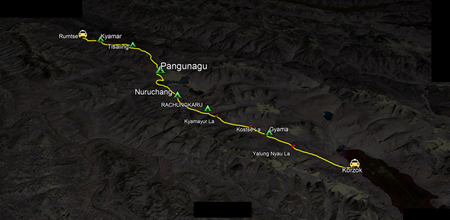
Quick Informations
- 📅 Duration: 12 Days, 11 Nights
- 🔼 Highest Altitude: 5450m
- 🛑 Grade: Strenuous ( know trek grades )
- 👍 Best Time: Jul, Aug, Sep
- 🏃 Activity Type: Trek
- 🔄 Trail Type: Same Exit Entry Point
- 🚩 Starts From: Leh
- 🚩 Ends In: Leh
- 🌏 Region: India - Ladakh
- 🎌 Country: India
- 🛪 Nearest Airport: Leh, Kushok Bakula Rimpochee Airport ( IXL)
- 🚉 Nearest Rail Head: Katra, (KEA), Jammu Tawi ( JAT)
Key Geographical Highlights
Daywise itinerary for rumtse tsomoriri trek, ▼day 1 arrival day leh.
We will receive you in the airport and drive in to our Hotel in Leh. After checkin, we are free for the day. The majority of the day today is to be spent inside the hotel and for self monitoring. In the evening we can take a light walk in the Leh city center taking precaution that we do not over-exert ourselves
▼Day 2 Acclimatization Day Leh
Today is a very important day as we undertake few local walks to acclimatize ourselves well. While in the morniong after our breakfast, we start our hike to the Tsemo Monastery an d Leh Palace. After completing it, we come down to the main market for lunch and shop for the missing items. We rest for the remaining part of the day until evening when we walk up to the Shanti Stupa in the evening. This activity not only ensures we are well prepared for te trek, but also gives us the chance to explore the beautiful city of Leh.
▼Day 3 Acclimatization Day Leh
Acclimatization drive to Khardungla top and return.
▼Day 4 Trekking Day Kyamar
Early morning after breakfast, we leave Leh for Rumtse from where our trek starts. Its a sceninc drive to enjoy and lasts about 3.5 hours. Once we reach Rumste, we start our short trek to Kyamar today.
▼Day 5 Pass Crossing Day Tisaling
Today we cross 2 passes to reach Tisaling, our night halt camp
▼Day 6 Pass Crossing Day Pangunagu ( Tsokar)
Today we cross Shibuk La to reach Pangunagu, our camp for the night
▼Day 7 Trekking Day Nuruchan
A long walk to Nuruchan
▼Day 8 Pass Crossing Day Rachungkaru
Cross Horlam Kongka La to rech the base of Kyamayur La
▼Day 9 Pass Crossing Day Gyama
Cross Kyamayur La to reach Gyama Barma for the night halt
▼Day 10 Pass Crossing Day Korzok
Cross Yalung Nyau La to reach the banks of Tsomoriri
▼Day 11 Trekking Day Leh
Drive back to Leh
▼Day 12 Departure Day Delhi
Rumtse tsomoriri trek - package & cost details, ▼ cost terms.
Cost Terms :
- The above-mentioned cost is in the range of minimum to maximum per-person cost for this trek as per 1 - 12 people team. Package Inclusions as per this cost can be read below.
- 5% GST (goods and service tax) is applicable for all our purchases.
- We follow dynamic pricing as per the actual team size on the trek. Going by our standardized service, appropriate safety measures, quality equipment, and ecologically sustainable - small group commitment, a higher team size will lower the cost whereas a lower team size will significantly increase the cost.
- Group segmented pricing if not provided here, please write to us using the contact page or text us on Whatsapp number +918017216725.
- You may choose to keep the trek open or make it private depending upon your requirements or choice. The actual per-person cost of the trek is subject to the actual team size joining the trek. If you make any customizations that drastically change the itinerary and cost as mentioned here, then it will mandatorily have to be a private group only.
- If we have dates listed on our website on Our Upcoming Treks and it is not marked as private, it means other people have booked this trek for that date and have opened it up for other members to join to lower the cost. If your dates and choices match, you may join these treks
- You may join an existing open group listed on our website or create your own group as per your convenient dates and choose to either keep it private or open it up to lower the cost if other members join the trek.
- At any point, the team size cannot be more than 12 members ( 10 for challenging treks) unless there is a unique exception requested or agreed upon by all the team members.
Customized Private Group For Rumtse Tsomoriri Trek
INTERNATIONAL GUESTS : Trek cost for foreigners is slightly higher than the cost for our Indian guests, mainly due to the higher permit fee applicable for admission to National Parks or protected forest areas. Sometimes, it may be higher due to higher local crew wages and other specific arrangements we make to ensure a safe, comfortable and enriching travel experience in India. However, we absolutely DO NOT 'hyper-charge' our International guests ever and at the same time, ensure that we meet all the standards for highly qualified trek leaders and guides, safety, medical preparation, evacuation strategy, rescue arrangements, eco-sensitive travel, high-value knowledge sharing about the area and customs of the locals.
Extra Cost For International Trekkers : Rs. 2000 per person.
Booking Process : Booking can only be done after multiple communication via email / Whatsapp / Calls. After connecting with us and discussing your needs, we finalize the trek and its requirements. After finalization, partial booking fees can be paid online or through direct bank transfers after which we trigger our preparations and arrangements for your trek. International Trekkers can pay the partial booking fees using PayPal, Wise, Western Union or Direct Wire Transfer.
Must Read - Important Pre-Booking Information
▼ Fixed Departure Dates
We do not organize fixed departures for this trip.
However, listed below are the confirmed Private Treks which members have opened up to accept a few members to make it cost effective. Please contact us for more details before booking
- Jun 01, 2024 -to- Jun 12, 2024 (open)
- Jun 08, 2024 -to- Jun 19, 2024 (open)
- Jun 15, 2024 -to- Jun 26, 2024 (open)
- Jun 22, 2024 -to- Jul 03, 2024 (open)
- Jun 29, 2024 -to- Jul 10, 2024 (open)
- Jul 06, 2024 -to- Jul 17, 2024 (open)
- Jul 13, 2024 -to- Jul 24, 2024 (open)
- Jul 20, 2024 -to- Jul 31, 2024 (open)
- Jul 27, 2024 -to- Aug 07, 2024 (open)
- Aug 03, 2024 -to- Aug 14, 2024 (open)
- Aug 10, 2024 -to- Aug 21, 2024 (open)
- Aug 17, 2024 -to- Aug 28, 2024 (open)
- Aug 24, 2024 -to- Sep 04, 2024 (open)
- Aug 31, 2024 -to- Sep 11, 2024 (open)
- Sep 07, 2024 -to- Sep 18, 2024 (open)
- Sep 14, 2024 -to- Sep 25, 2024 (open)
- Sep 21, 2024 -to- Oct 02, 2024 (open)
- Sep 28, 2024 -to- Oct 09, 2024 (open)
- Oct 05, 2024 -to- Oct 16, 2024 (open)
If you want to do this trek with us, please fill this form to Request A Customized Private Trip Plan just for your team members. We will get back to you with all the details specific to your personalized requirements
▼ Package Cost Inclusions
What's included in the price.
- Duration: 12 Days / 11 nights of trekking and climbing cost Ex. Leh
- Accommodation In Leh: 4 nights of Stay in a Premium hotel in Leh with guided acclimatization walks and sightseeing road trips with an emphasis on local food and culture. Only Breakfast and Dinner Included while in Leh
- Accommodation On Trek : Spacious, sturdy and High-Quality All Season Dome Tents will be provided on twin sharing basis.
- Sleeping In Tents : Thick Waterproof Mattress complemented with very good quality Sub Zero Sleeping bags supported with Supersoft Down Sleeping Bag Inners, For Extra Hygiene and Warmth will be provided by us
- Dining On Trek : We will provide Dining and Kitchen Tents with camping stools and camping tables for extra hygiene and comfort.
- Toilet On Treks : Dry eco-toilet will be set up with a toilet tent and toilet seat. 1 Toilet tent for every 5 trekkers will be provided.
- Meals : All meals (except for lunch in leh), specifically curated for high altitudes will be provided from breakfast in Leh on Day 1 till breakfast on Day 12 in Leh. 3 meals (B, L, D) suited for high altitude with evening snacks, soup, hot drinks and extra energizers/juice for summit days. Nutritious, Soupy, Balanced nutritious meal which is light on the stomach.
- Common Climbing Gears : All required climbing gears like rope coils, carabiners, snow stacks, etc.
- Communication : For efficient management of the trek, the team will be communicating with each other and trek base with the help of long-range wireless sets.
- Medical Safety: Oxygen cylinder, Pulse Oximeter, Thermal temperature scanner and Emergency Medical Kit accompanied by a trek leader knowledgeable on high altitude medicine and physiology
- Trek Leader and Guide: Experienced and Well Equipped English/ Hindi Speaking Trek Leader maintaining guide to trekker ratio of 1:6 . That is 1 guide for every 6 trekkers.
- Local Support Staffs : Expert and Knowledgeable local route guide with cooks, helpers, porters, mules, etc
- Trekking Permits : All required forest and other local association permits as per the prevalent rules of Local administration and our Country.
- Transfers : Return transfers from Leh to for trek in 4X4 offroader for the trekking team and support crew. Also, airport pickup and drop on Day 1 and Day 11.
- Max Team Size : Small group of not more than 10 members. You can make any batch a private batch by paying a little extra over the base trek fees.
- Personal Load Offload : allowed up to 8 Kgs only. Common equipment will be carried over mules or HAPs.
- Free Cloakroom in Leh: for extra leftover luggage while leaving for the trek.
- Personal Trek Equipments: Essential trek gears for complimentary use. ( read below)
Personal Trekking Equipment For Free Use: (No Rent will be charged. Refundable security amount of Rs. 2000 need to be deposited. You may use what you need and also bring your personal gears. )
- 1 Gaiter pair
- 1 Microspikes / Ice Tracktion Crampons
- 1 Trek Pole
- 1 Clean and Sanitized Down Sleeping Bag Inner
- 1 Walking Ice Axe
- - 20 deg waterproof expedition down jackets
- Single Supplement For Tent & Hotel. ( @ INR 20000 )
- Porterage For More Than 10 Kgs On Trek. (@ INR 9000)
▼ Package Cost Exclusions
What's not included .
- Personal Travel and Climbing Insurance
- Personal Purchases
- Food Purchased Outside Our Menu
- Personal Gears
- Lunch in Leh
- Bottled Water or Any Other Drinks
- Anything else not mentioned in the inclusion list
▼ Cancellation Policy
When should you book.
We typically get booked about 3 - 6 months in advance. It is advisable to book this much in advance as you get early bird discounts and also your travel costs like flights/hotels/trains etc are much cheaper and confirmed if you book well in advance.
Rules Of Cancellation:
If cancellation is done:
- Up to 30 days or more before the trek start date - Full Refund of the total paid amount
- Between 30 days to 20 days before the trek start date - 50% refund of the invoiced amount . 50% of the invoice amount will be charged as a cancellation penalty.
- Between 20 days to 0 days before the trek start date - No refund. Free rescheduling or transfer of slots is allowed as specified below.
- Transfer Of Slot to a Different Batch/ Trek : No Loss Of Money, valid up to 1 year from the Invoice date. It can be availed up to 20 days before Trek Start Date by sending an email.
- Transfer of Slot to Friend/ Family For Same Batch: No Loss Of Money, valid up to 1 year from Invoice date. It can be availed up to 7 days before Trek Start Date by sending an email.
- Validity : This rule is only applicable for treks between 4000 to 6000 meters of any grade
Find detailed info on Cancellation & Refund Policy
Frequently Asked Questions
Which is the best time to do the rumtse tsomoriri trek.
the months of June till the end of September makes the best time to do the Rumtse Tsomoriri Trek. On the other months, pass crossing may be difficult but not impossible.
Can Novice Trekkers Do The Rumtse Tsomoriri Trek?
A physically fit beginner with the correct motivation can undertake this trek under the supervision and support of an experienced and professional team
How Safe Is The Rumtse Tsomoriri Trek?
Given the numerous high altitude pass crossing involved in this trek, it might be troublesome if not well acclimatized. Acclimatization is very important in the initial days of the trek. Apart from the altitude and physical demands of the trek, there aren't any other major safety concerns on this trek

Ladakh has always fascinated the soulful travelers and photographers with its unmatched beauty.The stunning landscape of Ladakh ranges attracts a lot of tourists, trekkers, mountaineers, ...
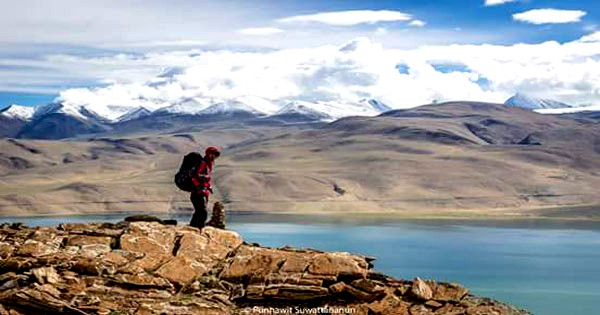
Ladakh has always fascinated the soulful travelers and photographers with its unmatched beauty. The stunning landscape of Ladakh ranges attracts a lot of tourists, trekkers, mountaineers, photographers, wildlife enthusiasts and cultural travelers from around the World. The creamy, beige and irregular patches of red and violet with some unique rock sculptures made by the artistic wind are just enough to set your imaginations flying out of bound...
If we had to suggest you a trek in Ladakh which can make you experience most of it, the Rumtse Tsomoriri Trek will top the list. Top it up with a climb to Mentok Kangri, and you gift yourself a trek bonanza !
With breathtaking views of the twin lakes of Tsokar and Tsomoriri guarded by the tall peaks of the Changtang platue in the Rupshu plains, this is a wonder trek experience which all the passionate travelers and wander souls must not miss.
Rumtse which is the starting point of this trek is just about 65 Kms drive from Leh and it takes about 3 hours of drive to reach from Leh - the capital of Ladakh. Amidst the ranges of Ladakh in the North, Zanskar in the West, The Great Himalayas to the South and the flat Tibetan Platue in the East, lies the Rupshu plains where this fairyland is of Tsomoriri Wetland Conservation Reserves is. The interactions with the Changpas, or Tibetan Nomads and their way of life with their livestock are an eye opener and a priceless value-addition to your travel experience. This land here is a heaven for nature lovers and a merryland for photographers.
Wildlife of the Tsomoriri Wetland Reserves which includes the animals like Kiangs, Tibetan Gazelle, Lynx, Mountain Goats, Blue Sheep, Marmots including the carnivores like Tibetan Wolves and the elusive Snow Leopard. Birds include the Black Necked Cranes, geese, gulls, grebe and others.
Starting from Rumtse, this trek crosses more than 5 passes and passes by the campsites of Tisaling, Pangunagu, Nuruchan, Gyama Barma to get us to pristine water of the Tsomoriri Lake. The campsite are unbelievably beautiful on this trek. This trek gets streanuous as we cross the passes every day and on somedays even 2 passes in a single day. The passes of Kyamar la (4870m), Mandalchan La (4996m), Shibuk la (5016m), Horlam Kongka La (4900 m) , Kyamayur La (5410 m ) and Yalung Nyau La (5440 m) are very interesting and tests the mental endurance of even a regular trekker.
As one gets to Tsokar after few hard days of trek, one just feels elated and extremely joyful. Further on we move towards the Korzok Phu and spend a few days around the Tsomoriri Lake to experience the serenity, beauty and get a rare sight of the wildlife if the Rupshu.
If you want to further challenge yourself and also get the most out of this fairyland, you need to climb the summits of Mentok Kangri 6250 meters to satiate your thirst fro adventure. Many Himalayan High Seekers do that. You may check for the itinerary in details on the following link - Mentok Kangri Summit with Rumtse Tsomoriri Trek

Rumtse Tsomoriri Trek - Why Its A Must-Do
- Grand Vista of the Rupshu Plains and the Tsomoriri Lake The grand vista of the Tsomoriri Lake and Rupshu plains surrounded by some of the high snow capped peaks of Ladakh in the morning sunlight is a breathtaking view and once in a lifetime moment which all the Himalayan High Seekers must experience.
- Sighting the rare wildlife of the Tsomoriri Wetland Conservation Reserves. Kiangs, Tibetan Gazelle, Lynx, Mountain Goats, Blue Sheep, Marmots,Tibetan Wolves and the elusive Snow Leopard. Birds namely the Black Necked Cranes, geese, gulls and grebe are commonly sighted nearby the lake.
- The interactions with the Changpas , or Tibetan Nomads and their way of life with their livestock are an eye opener and a priceless value-addition to your travel experience.
- Photographer's Delight - Ladakh is as it is astonishing, everyone knows, but this trek a photographer's merry-land with so many natural elements and their interactions to capture and preserve the moment.
- The culture and villages of Ladakh are an experience in itself .
- introduction
- geographical info
- detailed itinerary
- elevation profile
- package Details
- common questions
- contact info
- description
- key highlights
+91 8017216725
+91 9434062849
Write To Us
WhatsApp Us

- Info Ladakh
- History of Ladakh
- Monasteries of Ladakh
- Festivals of Ladakh
- Why Higher Himalaya?
- Terms & Conditions
- Ladakh & Zanskar Cultural Tour
- Explore Ladakh Cultural Tour
- Classic Ladakh Cultural Tour
- Aryan Valley Cultural Tour
- Nubra Valley Cultural Tour
- Mesmerising Ladakh Cultural Tour
- Markha Valley Trek from Chilling
- Markha Valley Trek from Spituk
- Markha Valley Trek from Lamayuru
- Chadar Expedition
- Tsomoriri – Kibber Trek
- Taru – Nubra ValleyTrek
- Spituk – Matho Trek
- Sham Valley Trek
Rumtse – Tsomoriri Trek
- Tsomoriri-Miru Trek
- Zanskar – Lamayuru Trek
- Stok Kangri Expedition
- Kangyatze Expedition
- Mentok Kangri Expedition
- Manali – Leh Cycling Tour
- Rafting Expedition in Ladakh
- Snow Leopard Ulle
- Snow Leopard Rumbak
- Spiti Valley
- Spiti – Kinnour
- Buddhist Pilgrimage
- Sikkim – Kangchenjunga Trek
- Colours of Rajasthan
- India Golden Triangle Tour
- South India Explore
- South India Holiday
- Everest Base Camp – Kala Pattar
- Mustang – The Hidden Kingdom
- Kingdom of Bhutan Cultural Tour
- India and Bhutan Cultural Tour
- Festival of Bhutan
- Mount Kailash and Manasarovar Tibet
- Kathmandu to Lhasa Tour
- Testimonials
- Photo Gallery
Adding item to wishlist requires an account
Already a member.
Forget Password?
Don't have an account? Create one.
Why book with us.
- No-hassle best price guarantee
- Customer care available 24/7
- Hand-picked Tours & Activities
Get a Question?
Do not hesitate to give us a call. We are an expert team and we are happy to talk to you.
+91-9419333393, +91-9469867272, +91-(0)1982- 255223
Duration : 15 Days Grade : Hard
The trek from Rumtse to Tso Moriri is one of the most beautiful treks in Ladakh. It takes you through the Changthang region, a high-altitude plateau that has unique landscapes and stunning lakes like Tsokar and Tsomoriri. This region is home to nomads with their pashmina goats and yaks. It’s an exceptional trek, but demanding because of the crossing of numerous high passes above 5000m.
NOTE:- All the itineraries can be customized to suit your own special interests, preferences, abilities, extension and reduction of numbers of days.
Day 1: Delhi - Leh (3501m)
Our services start with your arrival at Leh airport. Meet & greet and transfer to the Hotel. Welcome drink on arrival. We recommend you completely relax for the rest of the day to enable yourselves to acclimatize to the rarefied air at the high altitudeanda successful trek in Ladakh requires you to acclimatize well with high altitude, tourist can explore the Leh market and shanti stupa in the evening only if you feel fine. O/N hotel
Day 2: Leh (Full day monasteries & palaces tour) 112kms
After breakfast take a full day excursion to renowned monasteries and palaces of Ladakh region. Founded in 1433 by Palden Sherab, Thiksey monastery the beautiful village of Thiksey, dominated by an imposing Gelugpa monastery. This Thiksey monastery majestically overlooks the valley, a magnificent group of about 80 monks; discovery of the beautiful inner courtyard which distributes access to the various temples. The most amazing is certainly the temple of Maitreya with its gigantic interior statue which covers all floors of the building. To join the next site, we will take the path of school children.
Founded in 1632 by Lama Staktsang Raspa, Visit Hemis Monastery, it is a Tibetan Buddhist monastery of the Drukpa Lineage. The monastery houses an amazing collection of the age-old relics such as the idol of Lord Buddha made up of copper gilt, gold and silver stupas It holds the distinction of being the biggest as well as the wealthiest monastery of Ladakh. The annual Hemis festival honoring Padmasambhava is held here in June.
On the way back to Leh visit Shey (Built in 17th century by king Deldan Namgyal) capital of ancient Ladakh, is an interesting complex whose importance is still measured by the quality of the paintings and the astonishing quantity of chortens or other votive monuments that surround it, especially the copper gilt statue of lord Buddha. The Rock-carved statue of five Buddha can be seen below the palace on the roadside, which was probably carved during the reign of Singay Namgyal.
And the Stok Palace built in 1825th by king Tsespal Tundup Namgyal , residence of the present kings of Ladakh. Transformed into a museum, the collections presented evoke a recent past where the royal family ruled over this valley. O/N hotel.
Day 3: Leh - Lower Indus Valley –Lamayuru (3510m) 152kms
After breakfast drive to Lamayouru enroute visit Likir, also known as lu-Khyil gompa, the Likir Monastery was ordered to built by the 5th king of Ladakh Lhachen Gyalpo and was thus founded by Lama Duwang Chosje in 1065. The monastery is of the Gelugpa sect of Tibetan Buddhism, visit Alchi temple Renowned as the oldest Buddhist learning centre, the Alchi Gompa is one of the magnificently built monasteries in Ladakh. Located 70 kilometres west of Leh on the banks of the Indus River, it is also the largest and most famous of the gompas built by Tibetan translator Rinchen Zangpo in 11th century, continue drive to visit the mesmerizing Moon landscapes and the Lamayuru monastery renowned as Tharpa Ling which means the ‘place of freedom’; Lamayuru monastery is one of the oldest monasteries in Ladakh. Arahat Nimagon blessed the site and Naropa founded the monastery in the 11th century. O/N hotel
Day 4: Lamayuru-Leh (3501) 130kms
After the Breakfast drive to Leh, visit Rizong, according to popular belief, Guru Padmasambhava along with other lamas used to meditate in the caves around Rizong in isolation, surviving on two times meal a day and avoiding any contact with the outside world. Before building the monastery in 1831, Lama Tsultim Nima started a hermitage at the site to teach monks about Buddhism, visit a nunnery, known as Chulichan (Chomoling), is under the cover of the monastery, where 20 nuns or the Chomos reside and worship at the temples of the monastery, perform chores like milking, spinning wool and getting oil for the temple lamps. Arrive at Leh by evening. O/N hotel
Day 5: Rumtse – Kyamar (4498m) 4hrs
Elevation gain +298m / elevation loss -0m After having breakfast to drive to Rumste which is about 2 hours drive. On same day we continue our trekking to Kyamar, follow the trail to Kyamar which was once known as the salt road. Through this valley, the salt from Tsokar was transported to Leh and the Indus valley. the sceneries and landscapes are different from the rest of Ladakh. O/N camp
Day 6: Kyamar - Kyamar La (5050m)-Mandalchan La(5200m)-Teysaling (4900m) 6-7hrs
Elevation gain +786m / elevation loss -384m move upwards gradually towards the Kyamar La and enjoy the fantastic view of the Changthang region from the pass. climb down towards Tiri Doksa, a temporary shelter for the shepherds ,keep to the trail and climb the Mandalchan La and then climb down to Teysaling. O/N camp
Day 7: Teysaling-Shibuk La(5280m)-Ponganagu (4645m) 6hrs
Elevation gain +377m / elevation loss -666m Follow the trail as it slowly begins to gain elevation towards the Shibuk La. Enjoy the spectacular view of Tsokar lake from the pass. Walk down to Ponganagu near Tsokar lake. This area is well known to observe wildlife such as migratory birds, kyang (wild asses), marmots and ibex. O/N camp
Day 8: Ponganagu-Nuruchan (4670m) 5-6hrs
Elevation gain +173m / elevation loss -145m Continue your trek walking along the west side of Tsokar lake where you might be able to spot black necked cranes and brahmini ducks. Tsokar is also called “white lake” because of the salt that get deposited on its banks. trek to Nuruchan. O/N camp
Day 9: Nuruchan-Kyamayuri La (5400m)-Gyamar Barma (5175m) 7-8hrs
Elevation gain +855m / elevation loss -340m You will be crossing two passes today (Horlam Kongka La and Kyamayuri La) to reach Gyamar Barma. On the way, you will meet several nomad families with their yaks, sheep and goats. O/N camp
Day 10: Gyamar Barma-Kartse La-Gyamar (5140m) 3hrs
Elevation gain +213m / elevation loss -251m After crossing the Kartse La, walk down towards the Gyamar valley. O/N camp
Day 11: Gyamar-Yalung Nyau La-(5420m) Korzok (4500m) 5-6hrs
Elevation gain +300m / elevation loss -905m Cross the Yalung Nyau La, the highest pass of the trek and have a great view of Tso Moriri lake from the top. Walk down to Korzok village, on the bank of Tsomoriri. O/N camp
Day 12: Tsomoriri (4500m)
In the morning visit Korzok monastery (found in 1861 by Lama Kunga Lodos Nyingbo) village with its houses and its gompa appearing like a “Mirage”. The few barley fields at Korzok must be among the highest cultivation in the world and today you will visit the Korzok monastery and this is the village where nomad people has concrete house, explore the village and walk around the lake or Possibility of a walk on the heights to embrace the landscape and increase the chances of seeing wildlife. Back to camp. O/N camp
Day 13: Tsomoriri-Leh (3501) 230kms
The road goes to Kyagar Pass before driving into the Indus Gorge. From Mahe , multicolored rocks over hang us over 1000 meters, also on the way visit Chumathang Hot sulphur springs We find the plain of Leh at the level of Upshi. O/N hotel
Day 14: Leh
Free day for personal activities. O/N hotel
Day 15: Leh-Delhi
Early morning transfer to Leh airport to board flight back to destination. Tour ends with sweets memories.
For the more adventurous a drive to either Manali or Srinagar can also be arranged on request. The road journey is covered in two or more days with an overnight halt at either Sarchu or Jispa, which lies on the Leh-Manali highway, or Kargil, which lies on the Leh-Srinagar highway.
- to and fro leh airport transfers.
- all Transportation by non AC taxi. (point to point basis only)
- hotel on twin sharing with all meals.
- sightseeing as per program, trekking with full camping facilities.
- camping charges, wildlife fee, red cross, Ladakh environmental fee, monument fee and inner line permit.
- ponies to carry luggage.
- guide, cook and helpers.
- in the homestay trekking all the meal will be prepared at home stay.
- any air ticket.
- hotels & services in Delhi.
- sleeping bags, trekking shoes and clothing.
- rafting and camel safari.
- any extension tours.
- anything not specifically mentioned under the head “Prices Included”
- items of any personal nature such as, Tip, travel insurance, Laundry and Phone Calls.
- extra hotel nights, rescue and evacuation costs.
- Any Kind of drinks (alcoholic & non alcoholic)
- cost incidental to any change in the itinerary/ stay on account of flight cancellation due to bad weather, ill health, roadblocks and/or any factors beyond control.
Essential Info
Pay heed to the guidelines given by trek leader or instructor in order to enjoy a safe and sound trekking experience.
Avoid trekking during the nights. Single rooms and tents can be requested for a supplement (subject to availability). Please enquire at the time of booking.
Ladakh is very safe, tourist friendly and cheering place, but still you need to take care of some preparations which can make your tour even better and memorable: Carry headache, stomachache, anti-vomiting tablets with you. Please respect the culture of Ladakh. We are providing world class services in the secluded place, which is similar to an oasis, is very difficult and challenging. Still we try our best to bring cheer on your faces.
Code of Ethics for tourists visiting Ladakh a. As a Guest – Respect local traditions- protect local cultural- maintain local prides. b. While taking Photographs- Respect privacy-ask permission and restraint use of flashlight for photography and filming inside National Monuments and smoking and alcohol drinking is strictly prohibited c. Respect Holy Place- preserve what you have come to see- never touch or remove religious objects- purchase and sale of antiques which is more than 100 years old is against the law and it attracts punishment under rules. d. Keep stream water clean and avoid using pollutants such as detergents in stream and springs- if no toilets facilities are available- make sure are at least 30 Meter away from water source and Bury or cover waste. e. Giving to Children encourages begin- a donation to project like Health Centre or School is a more constructive way to help. f. Visitors who value local traditions encourage local prides and maintain local cultures-please help them to gain a realistic view of life in other parts of the World. g. The beauty of the place and loving kinds of the people may change you but please do not change them.
Eating and Drinking Whilst camping, the staff will bring a hot drink (usually tea) to your tent each morning. When you reach camp in the afternoon tea and biscuits will be served. At breakfast, dinner and in the afternoons, there is a choice of hot drinks. Breakfasts typically include cereal, toast and jam, eggs and porridge. Lunch on trek is usually served as a picnic en route (except on shorter days when it is in camp). Lunch and dinner typically include soup to start, followed by a variety of hot dishes (both local and western) such as potatoes/chips, vegetables, curry, pasta, rice, dal and paneer (cottage cheese). At dinner time a dessert such as tinned fruit and custard, fritters or cake is also be served. Note:- that although some meals will include meat, it is not as readily available while camping.
Drinking Water Staying hydrated is important when undertaking any physical activity but particularly so at altitude where it is generally recommended to drink at least 3-4 litres per person per day.
We strongly encourage you not to buy bottled water as this contributes to the growing problem of plastic pollution in Ladakh. In Leh there is a shop called Dzomsa which sells safe drinking water. Your leader will show you where this is on your first day in Leh.
During the trek the cooks will collect and boil drinking water from the mountain streams and fill up your water bottles for you, but you may need to collect water during the day and may wish to use your own water purification treatment as well.
We also suggest that you may like to bring a reusable bottle with a wide opening (Nalgene or similar)
Weather The above weather chart for Leh shows average temperatures only – it does not reflect extremes of heat and cold. Generally the weather is good in Ladakh during the summer time, with warm to very hot sunny days (up to 30ºC/35ºC+) with cooler nights depending on the altitude (it can reach freezing point at some higher places in September). There is, however, the possibility of rain, and you should be prepared for this. The sun is very strong at these altitudes and some of the days on trek can be extremely hot.
Ladakh, though technically part of the Tibetan plateau and classified as a high altitude desert, can and does occasionally experience the effects of the Indian monsoon. Although the departures are timed to coincide when the weather is normally good, you should remember that in any mountain area the weather is never wholly predictable and you should be prepared and equipped to deal with any differences in weather beyond the conditions described above.
Note:- While on a trek or expedition in a remote area if any client suffers from altitude sickness or any other serious injury, the sirdar/guide sends a runner to the nearest telephone/army post/road head to ask for help. Emergency evacuation becomes necessary in the following cases:High Altitude Sickness – If the client suffers from High Altitude Sickness, he/she needs to descend immediately. Injury – In case the client is badly injured – broken bones/fractures or sickness like thrombolysis (blood clotting), paralysis, loss of eyesight – in these cases as well he/she needs to be evacuated/descend immediately.
What to bring Hiking trousers and shirts, warm jackets, pullovers and raincoat Good hiking shoes Flash light Sun hat/baseball cap Sunglasses, Lip balm Sun lotion cream and toiletries
Enquiry Form
Your Name (required)
Your Email (required)
Travel Date
Your Message

- +91-9310109466
Rumtse to Tso Moriri Trek Ladakh
Home / Booking object / Rumtse to Tso Moriri Trek Ladakh
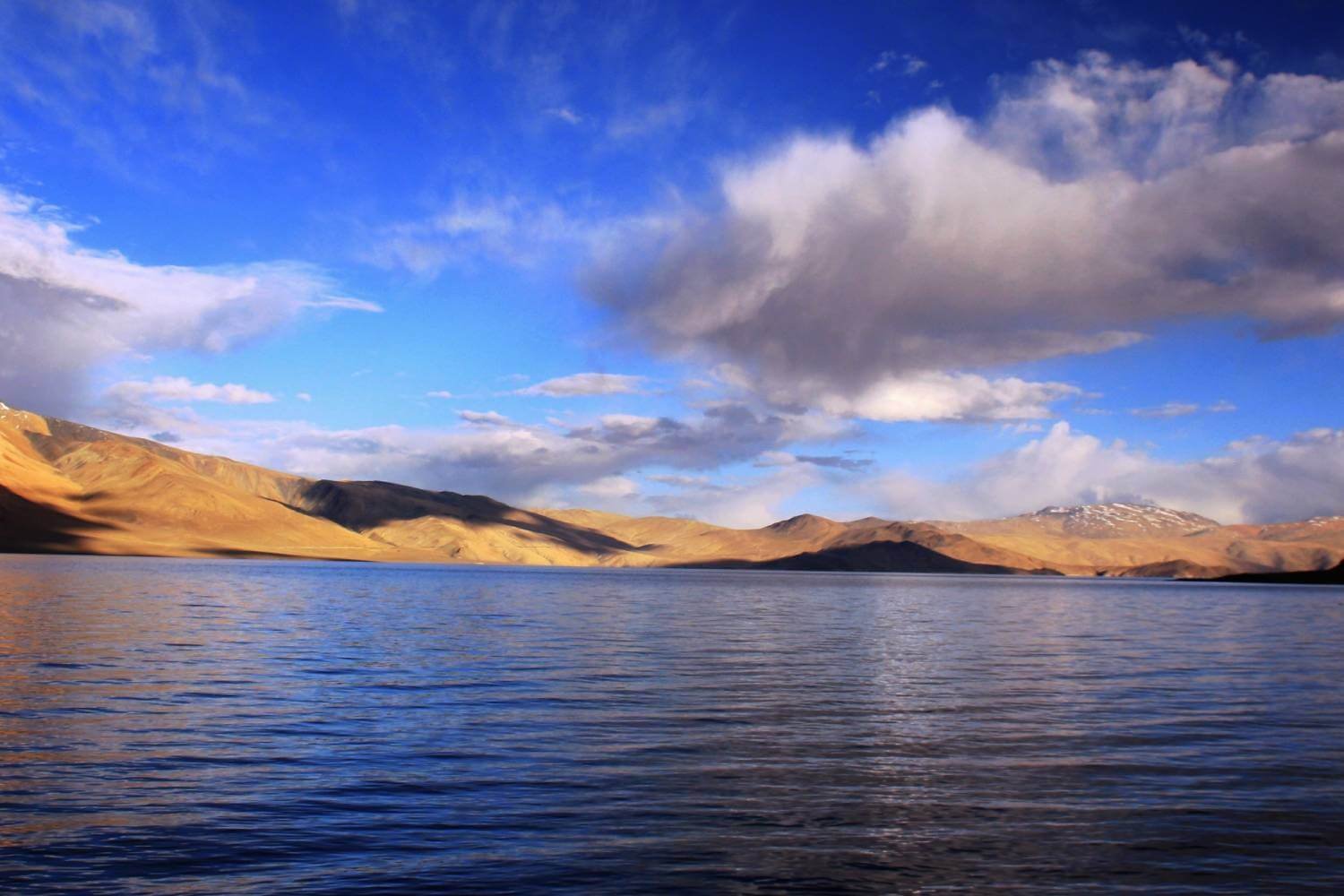
- Grade – Difficult
- Max Altitude – 5440 metres
- Trek Length – 105 km
Rumtse to Tso Moriri Trek is a difficult but incredibly rewarding trek for those who want to conquer high mountain passes, see the surreal brilliance of turquoise lakes, and immerse themselves in the distinctive culture of the Changpa nomads. It takes you through the incredibly beautiful and untouched Chang-thang Valley, a beautiful destination in Ladakh. This expedition, spanning over 100 kilometres, puts your strength to the test with seven challenging passes beyond 5000 metres in elevation, including the daunting Yarlung Nyau La and Shibuk La, over ten river crossings, and three campsites above 16,000 feet.
The Rumtse to Tso Moriri journey is a four-season trek, allowing you to experience the four distinct seasons along the way. Perfect rivers, verdant meadows, snow-capped summits, and bleak, lonely surroundings. The sceneries occasionally shapeshift, creating multi-facade mountains with a burst of colour. Strong physical fitness and appropriate acclimatisation to Ladakh’s high altitudes are required due to the altitude and the demanding climbs and descents. However, as you reach each summit, you’ll be rewarded with breath-taking views like the saline Tso Kar Lake shimmering like a mirage and concluding the adventure on the sapphire-blue expanse of Tso Moriri Lake, one of the most beautiful destinations in the Ladakh treks . Rare species can also be found in the area, including snow leopards, blue sheep, marmots, and wild asses that roam freely. Occasionally, the ever-changing scenery, which ranges from vivid green campgrounds to snow-dusted peaks grazing the heavens, leaves its observers speechless.
When you camp under the stars at locations like Tisaling, Kyamar, and Rachungkharu, where emerald meadows defy the hard altitude, the gorgeous mountains will provide moments of pure magic. Take in the captivating world of the Changpa nomads, their robust yaks, and their pashmina goats that adorn the countryside. Take in their stories, feel their kind hospitality, and discover their traditional way of life.
Highlights of the Trek
- Six mountain passes including the highest Kyamayuri La (5400 M) and Yalung Nyau La (5414 M).
- Crystal clear alpine Tso Kar and Tso Moriri Lake.
- Beautiful campsites at Tisaling, Kyamar and Rachungkharu.
- Glimpses of Changpa nomads, their culture, and castles.
- Possible wildlife sights of Kyang, Blue sheep, Marmots, Himalayan ibex, snow leopards, etc.
Best Time to Do Rumtse – Tso Moriri Trek
The Rumtse to Tso Moriri Trek is considered difficult thus the best time to do it is between June and September. The weather during these months is pleasant during the day and cold at night. Daytime temperatures range from 20°C to 30°C, and nighttime temperatures range from 5°C to 10°C. Attempting the trek in early and winter seasons is not advisable due to the potential challenges of crossing high passes blocked by snow. While it’s not impossible to cross the passes in winter, it requires careful preparation for cold conditions and altitude sickness. If undertaking the trek during these months, it is crucial to take proper precautions and make necessary arrangements to ensure a safe and successful journey.
For access to the detailed trekking itinerary, tour prices, or any customization options, please send us an email or call/WhatsApp at +91-9310109466.
Included/excluded.
Your email address will not be published. Required fields are marked *
Save my name, email, and website in this browser for the next time I comment.
Calendar & Prices
You may like.
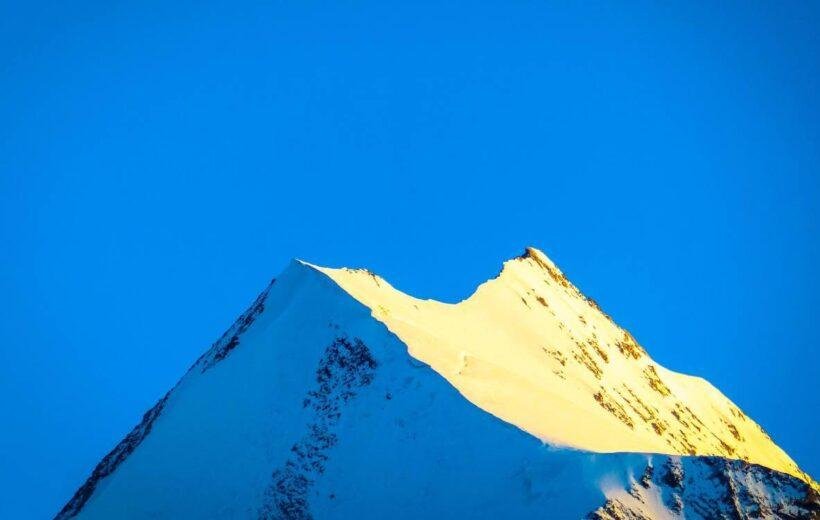
- Amenities 5

Book This Tour
No of People
Tour Description
Last Minute Deals
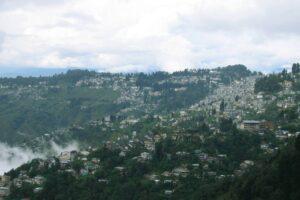
- Amenities 4
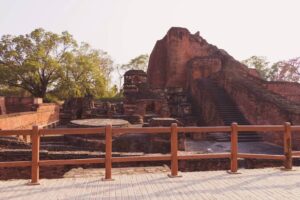
Don’t wait any longer. Contact us!

One of the India’s leading startup Bon Travel India specializes in offering the best holiday packages and tour services in India & Worldwide.
Noida - INDIA
Our Services
- Holiday Packages
- Hotel Booking
- Air Ticketing
- Visa Assistance
- Wildlife Tours
- Beaches Tours
- Trekking Tours
- Pilgrimage Tours
- Hill Stations Tours
- Weekend Tours
Get Updates & More
Subscribe to the free newsletter and stay up to date
- Privacy Policy
- Term & Conditions

+91-8802149265

Hi On Life Adventures
Rumtse to Tsomiriri Lake – Ladakh, India

Tsomoriri Lake which spreads over 120 Square kilometers, is the largest high-altitude lake in India that lies completely in India. This area is on the Changthang Plateau, which is famous for its outlandish landscape and Nomads and their traditional lifestyle. The area is also a famous for being a wildlife sanctuary, home to the endangered snow leopards and wild asses, as well as various species of birds, such as the black necked crane.
Important Info
After arrival to New Delhi, we fly in to the Ladakhi capital of Leh, where we spend the next 4 days acclimatizing. During these 4 days we visit monasteries around Leh and also do a day trek from Likir to Yangthang for acclimatization. Having been acclimatized we drive from Leh to Rumtse on the Leh-Manali Highway. The trek from Rumtse passes through mesmerizing valleys completely uninhabited. It is a pure untouched nature, very rare to meet people but sure to have sightings of wild animals including, wolves, Lynx, Marmots and Argali (wild Tibetan sheep) and Kyang (wild Ass). After crossing two passes we reach Tsokar Lake. This is a salt water lake and was the main source of salt during the Trans Himalayan trade. After Tsokar we venture more deeper into the wilderness with outlandish landscapes, crossing high passes camping at extraordinarily beautiful campsites occasionally coming across Nomadic camps. We end the trek at Karzok, a small village which lies at the banks of Tsomoriri Lake. After the trek we drive back to Leh.
- Spread over 120 square kilometres, Tso Moriri is the largest high-altitude lake that is entirely within India.
- Cross through seven mountain passes,
- Outlandish landscapes of Changthang Plateau.
- The Rocky Mountains that constantly change its colours as the day progresses.
- The home to Changpa nomads- It is an experience to see them camping with their livestock and to interact with them.
- Peaceful and serenely beautiful camping grounds of Kyamar, Tisaling and Rachungkharu.
- Home to some of the rare species of wildlife including Snow Leopard, Kyang (wild ass), Black Necked Cranes, Himalayan Ibex and several other species of brids and animals.
Altitude: 216m
On arrival to Indira Gandhi International Airport at New Delhi and finish with the immigration and custom formalities, our representative will meet you at the Main Exit with a Hi On Life Adventures placard. It is about 15 to 20 mins drive to the Aerocity where we have chosen your hotel for the practicality for the next days early morning domestic airport transfer. When you arrive at your hotel you will be briefed about your trek and "do's and don’ts" while your stay in India. In the evening we will have a welcome dinner to begin the taste of India at one of the finest dining in New Delhi.
Altitude: 3500m Flight duration: 1 hour 25 mins
Early morning drive to the domestic airport to fly to Leh. Be prepared for an extensive security checks for your own safety owing to the fact that Leh is strategically located close to Pakistan and China. Baggage allowance Delhi-Leh is only 15kg per person, unless you have a through ticket on the same airline internationally. However, excess baggage charges are only $5 per kilo. It will be an early morning flight to Leh which is a fantastic mountain flight. The flight takes about 1 hour and 20 mins to Leh and approach to the airport at Leh is extremely scenic, so get your cameras ready. The airport at Leh is also an Indian Air Force Base, therefore it is heavily guarded and again extensive security checks. We will be received at the airport by a representative from Ladakh and will be transferred to our hotel. An important component of our trip that we must adhere to is the acclimatization required due to high altitude. Do not plan on heading out at all today. Rehydration is the key to cope up with the high altitude, so drink water regularly. We will take this first day at high altitude with leisure, maximum exertion should maybe be a small stroll outside to the neighboring shops.
Altitude: 3500m- 3100m Sightseeing duration with drives: 6 to 7 hours
We begin with a 40 km drive to Hemis. The wealthiest monastery of Ladakh and India, Hemis Monastery belongs to the Drukpa lineage of Tibetan Buddhism. The monastery was re-established in 1672 by the Ladakhi king Sengge Namgyal. After visiting Hemis monastery, we will visit Thiksey monastery. Thiksey monastery is affiliated with the Gelug sect of Tibetan Buddhism. It is located on top of a hill in Thiksey approximately 19 kms east of Leh. It is noted for its resemblance to the Potala Palace in Lhasa, Tibet and is the largest monastery in central Ladakh.
After the sightseeing, we will drive back to our hotel. The rest of the afternoon is free.
Altitude: 3100m- 3610m Drive: 55 kms, 90 mins hours one way Trek: 3 hours
We drive along the river Indus till Likir monastery, which is again an extremely scenic drive. From Likir we begin our trek on a jeep road until we reach a small pass called Phobe La (3580 mts). From here we leave the jeep road and walk an off the beaten track. After an hour walk we arrive at Sumdo village, cross the river and continue in the valley and finally reach the summit of Charatse La (3700 mts). From the summit descent to Yangthang Village. Yangthang is a beautiful agricultural village. After spending some time at the village, we drive back to Leh by late afternoon.
Today your guide will organize a short walk to Leh monastery for further acclimatization. You can utilize the rest of the day for last minute preparations before the trek.
Altitude: 3500m- 4100m Sightseeing duration: 2 hrs drive + 3 hrs sight seeing
We drive from Leh to Rumtse and visit the monasteries of Shey, Thiksay and Hemis monasteries en route. Shey monastery: Along with the Palace was built in 1655 by King Deldan Namgyal. The monastery is noted for its giant copper with gilded gold statue of a seated Boudha. Palace was used as a summer retreat by the kings of Ladakh.Thikse monastery: It is noted for its resemblance to the Potala Palace in Lhasa, Tibet. Thikse monastery is a Tibetan Buddhist monastery of the Yellow Hat School (Gelugpa) Hemis monastery: Built in 1672 by the Ladakhi king Sengge Namgyalis , is a Tibetan Buddhist monastery of the Drukpa Lineage,located in Hemis. The annual Hemis festival honoring Padmasambhava is held here in the month of June or July. By late afternoon, we reach the village of Rumtse. The local monastery near Rumtse, Gya, is 700 years old and has as many as 108 stupas. Overnight camping
Altitude: 4100 m to 4383m Trek duration: 4 to 5 hours- of 9.5 km
After a short walk in the begining, the trail leaves Chhaba Chu and enter Kyamar valley. This point is a confluence of Kyamar stream and Chhabu Chu. There are many rivulets and can easily be crossed.Here the landscape is green marshy meadow which soon changes to gravel. There is a small gradual ascent over a rocky spur which leads to the base of this plateau. After walking for 30 minutes, the green marshes will re-appear along Kyamar stream. The Changpa nomads are known to camp here during summer. Kyamar’s grounds are surrounded by beautiful rocky hills on three sides of the valley. We will camp on a beautiful lush green grounds beside a stream. Overnight camping.
Altitude: 4383m – 5070m – 5200m – 4800m Trek duration: 8-9 hours, 15 km
We have a long day ahead. We leave the green landscape behind as we now enter the barren mountains of the upper plateau of Kyamar. The trail now gradually climbs up as we approach the base of Kyamar La. Looking behind, we get splendid views of the Zanskar ranges. It is a gradual ascent and takes about an hour to reach the base of the pass. We cross a small stream from where it is a steep ascent all the way to the pass. From the top of the pass we get great breathtaking views of Changthang range with its colorful rife of mountain. After the pass we leave the Kyamar valley behind, and the trail starts to descend on the right side of the ridge for about 15 mins and then descend sharply. The trail is slippery, with loose gravel and takes 30-45 minutes to climb down to the river bed. We cross the Taasa Phu and again start to ascend towards Mandachalan La which takes about 2 ½ to 3 hours. Himalayan Ibex, Marmot and Wild hare are often seen here.The trail continues into a bowl-shaped valley and descends to the green camping ground of Tisaling below which is beautiful high altitude grassland.
Altitude: 4800m – 5290m – 4585m Trek duration: 6-7 hours, 15 km
We begin with a gentle climb and then steepen gradual to the pass. It is about 2 hours to reach the top of Shibuk La. We are rewarded with spectacular views of the Tso Kar valley that stretches out right ahead of you. We can also get views of the salt lake, Tso Kar, in the distance. Mt. Thugse (6,050 m) and Mt. Gursan (6,370 m) stand prominently at the horizon. From the pass the trail follows a rocky scree and then continues along brackish barren land which has a unique array of colours that keep changing as the day progresses. It takes about 3 hours from the pass to the Tsokar basin. Soon we will be at our campsite at Pongunabu, which is a windy place. Overnight camping.
Altitude: 4585m to 4650m Trek duration: 6-7 hours, 16 km
Today is a relatively easy day for trekking. The trail follows an easy but dusty jeep leading to Tso Kar lake. Along the salty shores of the lake, we can often see some of the endangered migratory birds like the black necked cranes and Brahminy ducks. The valley widens as we approach Nuruchen, a Changpa village. The trail has gentle ascents with level walks for most of the day but it is a long day. The campsite is on a grassy land beside a stream.
Altitude: 4650m – 4970m – 4925m Trek duration: 4 hours, 9 km
Another fairly easy day. Horlam La is the easiest pass in this trek. From Nuruchen we proceed further towards south west into the Tso Moriri Valley. The ascent to the pass is gradual with marvelous views of the turquoise blue Tso Kar Lake behind. From the top of the pass, we descend to the grassy marshes of Spanglung Serpa river basin. The trail now takes you on a five kilometre stretch along the mushy masrshes of the rver basin till the campsite of Rachungkharu. Overnight camping
Altitude: 4925m – 5420m – 5400m – 5150m Trek duration: 6 hours, 13 km
Today we have two of the most formidable pass crossings. The other challenge of the day is fording a series of rivulets, including a few of them that can be tricky. We follow the passing rivulet as we approach the base of the pass. After about an hour, we begin ascending all the way to the pass. It takes an hour to reach the top of Kyamayaru La. Ahead of us lies the wide valley of Gyam chu. After the pass, we descend to the extensive river basin of Gyam Chu. We cross the river and move ahead into Gyam Chu basin. The ascent to the next pass is steep. It takes close to two hours to reach the top which has several prayer flags neatly laid out. Descending from the pass we proceed towards the arid side of Gyamar basin. Here we have a few exhilarating experience of river-crossings. We will try boulder hopping or wade through the deep currents. After crossing the river, we warm up and dry ourselves as the water is icy cold. Gyamalhoma campsite is across the river, which is a beautiful pasture ground frequented by Changpa yak herders. Overnight camping
Altitude: 5150m – 5435m – 4540m Trek distance: 6 hours, 14 km
Extremely scenic walk, prepare to cross the highest pass of the trek, the Yarlung La (5435m). We take the marked trail heading south east of the river valley and after an hour we will enter a rocky landscape. As we go higher, it gets windy with thunderous bursts. As we reach the top, the first appearance of Tso Moriri lake that dominates the landscape, is an overwhelming sight to fathom. We are rewarded with brilliant views of some snow caped peaks of Chhamsher Kangri (21,725 feet) and Lungser Kangri (21,870 feet). The descent to Tso Moriri lake is long and we descend about 3,000 feet. We continue to Karzok, which is located at the bank of Tso Moriri. There is an ancient 500-year-old Buddhist Monastery at Karzok. A beautiful campsite awaits us at the end of a long strenuous day. Overnight camping.
Drive: 7 hours
We drive back to Leh through the dramatic gorges of the mighty Indus, leaving behind the beautiful lake Tsomoriri. On arrival to Leh, we are transferred to our hotel. In the evening we might be able to organize a traditional Ladhaki cultural show depending on group size. Overnight hotel.
Flight duration: 1 hour 25 min Sightseeing duration: 3 hours
Early morning drive to the airport to catch early morning flight to Delhi. Once again prepare for an extensive security checks. Lithium Batteries (eg spare camera batteries) – must be in your checked luggage for the return flight from Leh back to Delhi. On arrival to New Delhi we are transferred to our hotel. In the afternoon we take a Rikshaw ride through the narrow lanes of Old Delhi- a “must do” fascinating trip.
You will be transferred to Indira Gandhi International airport 4 hours before your flight departure time.
Drive: 5 hours Sightseeing duration: 1 ½ hour
We begin early morning on a 233 km drive to Agra. The drive is comfortable and the road condition is of “Western standards” on the Express Highway. Before we go to our Hotel at Agra, we visit the Agra fort. Agra Fort is a massive and awe-inspiring fort built by the Emperor Shah Jahan during the Mughal reign in India. From here you can get the first glimpse of Taj Mahal across the river Yamuna. After visiting Agra fort, we check in to our hotel.
Drive: 5 hours Sightseeing duration: 2 hours
An early morning visit to Taj Mahal to get the beautiful views of the first lights on this fabulous monument and also to avoid the crowd, which get very heavy during the day. Taj Mahal is one of the 8 wonders of the world and is one of the most beautiful monuments in the world. Neither any words, nor any pictures can justify the beauty of this amazing monument. We will spend a couple of hours at the Taj Mahal and then drive to our hotel. After breakfast, we drive back to New Delhi to our hotel. We arrive New Delhi early afternoon, so if you would wish to go to the main center for some shopping/ sightseeing, your guide can arrange or escort you.
Depending on your departure flight time, you guide can arrange additional trip around Delhi or you may just relax or enjoy the swimming pool at your hotel. We will drive you to Indira Gandhi International Airport 4 hours before your time of departure flight. Trip ends
Price Includes
- All International and Domestic airport transfers in Private A/C vehicle
- All guided sightseeing tours in Delhi, Ladakh and Agra in Private A/C vehicles
- 5 Star hotel accommodations on BB plan on twin sharing basis in New Delhi and Agra
- Welcome dinner in one of the finest authentic Indian dining in Delhi
- 3 Star category hotel in Leh on full board
- All Camping and Monasteries entrance fees
- Wild life fee for the applicable area
- Services of English speaking guide during trek only.
- Cook and kitchen helpers
- Horses and mules for carrying bags and camping gears
- Comfortable North face VE 25 tents on twin share basis unless single supplement is booked
- 1 ridge mattress + 1 Exped Down mattress for each person.
- Kitchen tent, Dining tent and Toilet tents
- Table Chairs and all Kitchen materials.
- All three times meals during trek. (Picnic at lunch time)
- Hot beverages with biscuits and snacks on arrival to camp
- Use of personal trekking pack consisting of a duffle bag, sleeping bag, sleeping bag liners, and down jacket.
- Hi On Life Adventures T shirt.
- Staff insurance and all applicable taxes
Price Excludes
- Insurance: Travel/Accident/Medical /emergency evacuation
- Private room accommodation in Delhi and Leh unless a single supplement is paid.
- Staff tipping
- Indian Visa
- Telephone, laundry, mineral water, soft drinks and alcoholic beverages.
- Emergency rescue evacuation cost if needed
- All other personal nature expenses.
About India
India, officially Republic of India, is the seventh largest country in the world by area. It also has the second largest population in the world with over a billion people, and prides in being the largest democracy on Earth. It is an extremely diverse country, with vast differences in geography, climate, culture, language and ethnicity across its expanse.
The earliest archaeological traces are from 7000 BC in Mehrgarh, which grew to be the “Indus Valley Civilization”, which is one of the earliest civilizations in the world. By 3300 BC, this civilization had well-planned towns and well-laid roads.
India’s culture and heritage are a rich combination of the past and the present. It offers the visitor a view of fascinating religions and ethnography, a vast variety of languages with more than 438 living languages, and monuments that have been present for thousands of years.
From the tallest mountain range in the world, Himalaya, to sun washed beaches, dense sub-tropical jungles to deserts, tranquil temples and rich architectural ancient monuments to frenetic bazaars, lantern lit villages to software supreme cities, India has it all. There’s simply no other word that captures the enigma that is in India. With an ability to aspire, frustrate, thrill and confound all at once, India presents an extraordinary spectrum of encounters for the traveler. India also boasts on having one of the wildest and largest culinary varieties in the world, each region presenting their own specialty. This is one country that will definitely jostle your entire being. It’s a place that fires the imagination and stirs the soul like nowhere else on earth.
India at a glance:
Area: 3,287,590 Sq Kms Population: 1.2 billion Capital city: New Delhi
About Ladakh
Ladakh, “The land of high passes”, is a region in the Indian state of Jammu and Kashmir. Although, rock carvings found in many parts of Ladakh indicate that the area has been inhabited from Neolithic times, not much is known about Ladakh before the 1st century. During the 2nd century when much of eastern Ladakh and western Tibet was still practicing the Bon religion, Buddhism started to spread into western Ladakh from Kashmir. In 842 Nyima-Gon, a Tibetan royal prince annexed Ladakh after the break-up of the Tibetan empire, and founded a separate Ladakhi dynasty. During this period, Ladakh acquired a predominantly Tibetan population. Also known as “Little Tibet” Ladakh’s culture and history are closely related to that of Tibet.
The largest town in Ladakh is Leh, followed by Kargil. Ladakhis are Tibetan-Mongoloid in appearance although traces of Kashmiri Moslem influence can also be seen. The predominant religion in Ladakh is the Tibetan form of Buddhism, although Islamic influences are found from the Kashmir Valley as far as Kargil, and there are some Christian families in Leh.
Some interesting facts about Ladakh
- Ladakh is the highest settlement in India. The fields at Korzok, on the Tso-moriri Lake, at 4,600m are widely considered to be the highest cultivated lands in the world.
- A Bailey bridge between the Suru River and Dras River in Ladakh, is the highest bridge in the world at an altitude of 5,602m.
- Only place in India where twin humped Bactrian camels can be found.
- Ladakh is home to the mystical Magnetic Hill, which is a so-called “gravity hill”. The alignment of the road with the slope of the background can give the illusion that cars are able to drift upwards.
- The Pangong lake in Ladakh is one of the highest salt lakes in the world
- Kadakh is also home to some of the rare species of wildlife including Snow Leopard, Kyang (wild ass), Black Necked Cranes, Himalayan Ibex and several other species of brids and animals.
Recommended preparation:
Stamina is essential, as walking days are long. We recommend previous trekking experience, preferably at altitude. Walking or jogging 45 mins to 1 hour for at least two times a week on undulating terrain or on a tread mill with inclined angle for at least 3 months prior to departure. Cycling is recommended. Long day hikes on weekends with a daypack in variable weather conditions is also recommended.
A Day On Your Trek
Although each day is different, considering the weather, general pace of the group and length of the days walk, in general your day begins with a wake up tea at around 6 to 6:30 in the morning. You will then be provided with a bowl of warm water for washing. Then you will need to pack your duffel bag and your daypack and come to the dining tent for breakfast.After breakfast we will hit the trail and usually walk for about 3 to 4 hrs before we stop for lunch. Lunches are usually picnic packed lunch. We allow you about an hour rest during lunch, which will also give enough time for the staff to prepare lunch, wash dishes and have their lunch and pack. Usually after 3 to 4 hrs of walking we finish the days walk by 4 PM. Tea/ Coffee and snacks will be served on arrival to the camp. Your Group Leader will often organize side trips in the afternoon. Your dinner will be served around 7 PM.
Food and water
The cook and the kitchen crew prepares hot food which is normally a very balanced diet comprising of fresh vegetables and breads, to pastas and sandwiches and occasionally even cakes and pizzas. Breakfasts are usually bread eggs and cereals, and lunch and dinner are a three course meals. We make sure that you get the required amount of carbohydrates and proteins and vitamins as you burn a lot of calories walking uphills, so plenty of vegetables, canned meat and fish and eggs and cereals are carried.We provide boiled and treated water 4 times a day.
High Altitude
On this trek you will be going up to 5400m, so it is very important to understand the affects of altitude. The greatest provocation is going too high too fast. Hi On Life Adventures’s itinerary has been carefully designed to minimize the effects of altitude. We ascend slowly and surely allowing enough time for safe acclimatization.Headaches and breathlessness are common at altitude which in itself is nothing to worry about. In rare cases, this may worsen to Acute Mountain Sickness (AMS), so a close watch is kept on all trekkers by the group leader who is trained to recognize the symptoms of AMS which are severe headaches, nausea, lethargy, loss of appetite serious breathlessness even at rest. If any trekkers show such signs they will be descended to relatively lower and safer altitude. The Group Leader’s decision on evacuating such person to a safe altitude is final. Do not medicate yourself without first informing your group leader. Going to altitude slowly with adequate rest and adequate intake of fluid (3 to 4 litres per day), you will most likely have no problems apart from breathlessness on hills which is completely normal as the percentage of Oxygen in the air is relatively lower to that at sea level. The most important thing is not to worry about altitude because our team is there to take care of you.
Group leader: your most important member of your staff. Our Group leaders are highly trained in all aspects of the trek, conservation, first aid specializing on altitude sickness, emergency procedures and have extensive knowledge of the natural history of the area.
Sirdar: His job is to manage and organize staff duties, select and organize campsites. He is responsible for the actual operation of the trek.
Sherpas: Their job is to lead your way and distribute equal loads to the porters and also help clients and other staff when need arises.
Porters: They are responsible to transport your duffle bags and their job finishes once they reach the designated lodge. Our porters are provided with Gore-Tex suits, trekking boots, gloves, hats, socks, snow gaiters and snow goggles. Most importantly, we regulate them on a 25 Kg carrying load. Our clients can therefore feel comfortable knowing that our porters are working in a good humane condition.
Please note: In our Ladakh trips, we do not use porters, instead we have mules and horses to carry the gears.
The best time for this trek is June till August. It is summer time in Ladakh and the temperatures are pleasant at high altitude. However, below 4000m it can be soaring 28 C in the sun. Another typical thing about the climate in Ladakh is that the temperature varies enormously. It can be 28 C+ on a sunny day and within an hour the temperature could drop below 10 C if it gets cloudy. At altitudes above 4500m the night time temperatures could drop just below freezing.
Recommendations for things you should bring:
- Water bottle: 3 bottles min 1 liter each, should be able to hold hot water)
- Day pack: medium size 35-40 liters
- Sunglasses: Poloroid/ UV protection 2-4
- Duct tape: Small roll for emergency fixing of torn jacket/ sleeping bags etc.
- Stuff bags: Small stuff bags or plastic bags to organize you duffle bag
- Toiletries: Your essentials. We provide toilet papers
- Towel: Quick dry travel towel
- Torch: Preferably head lamp
- Disposable lighter
- Medical kit: As per your prescriptions. It should be noted that the group leader will be carrying a first aid kit.
- Walking sticks ( highly recommended)
- Knee guard for those with bad knees.
- Daytime snack (chocolates/ dry fruit trail mix)
- Trousers: 2 lightweight for easy walking and 1 warmer for colder days preferable wind/water proof, 1
- stretchable running trousers
- Shorts: 1 (Not too high cut revealing ones)
- T-shirts: 2 light cotton or preferably polypropylene
- Full sleeves T- shirts: 2 preferably poly propylene or wool.
- Hats: 1 Sunhat and 1 woollen one for colder days
- Buff (cover for your mouth and keeps your neck warm)
- Gloves: 1 warm woollen/ fleece and 1 medium weight Gore-Tex
- Thermal underwear: 2 pair light weight tops and trousers, preferably woollen, and 1 pair medium weight
- Socks: At least 4 pairs (both thin and thick woollen ones)
- Jackets: 1 fleece/ wool and 1 Gore-Tex wind/waterproof. Please note that we provide down jackets.
- Walking boots: Preferably waterproof
- Gym shoes/sandals For evenings
For every trek we provide these extremely warm down jacktes and -10C to -20C extreme temperature down sleeping bags depending on altitude.
Healthy and trouble free holiday
Please consult a doctor for vaccination against Typhoid, Meningitis, polio, and hepatitis. If you have special dietary requirements or allergies, please give us a list of what you can and can’t eat so that we can provide proper food for you. If you are undergoing a course of prescription medicine, please ensure that you have sufficient supplies for the entire holiday. Some types of drugs including antimalarias have side effects at high altitude; therefore please consult your doctors regarding these drugs. The places you trek are mosquito free and there has been no report on malaria in Ladakh and you do not spend a lot of time in the low lands of India.
Insure yourself:
We highly recommend you to take a comprehensive Personal Travel Insurance before leaving home. This should cover for your loss of baggage, airline delays, sickness, and accidents. It should cover all incuring costs for evacuations.
Money Matters
The ideal currency to bring with you is USD or Euro. You can exchange them in Delhi or Leh. You can also draw money from ATM machines in New Delhi or Leh.The exchange rate is 1 USD = 62 Indian Rupees approx. (subject to change)
In Delhi and Agra : During the entire trip the only meals that you need to pay for are 3 dinners and 2 to 3 lunches depending on your time of departure flight. Delhi has a wide variety of restaurants with a very wide range of price. Depending on where you eat, each meal will cost anything between 5 to 25 USD + drinks. Plus 20 to 30 USD for your taxis if you wish to go around the city.
On trek : Basically there are no place where you can spend money on the trek. However, in few places you might find small tea shops that sells cold drinks, chocolates etc. It is recomended to bring around 5 USD per day. This money is chocolates, soft drinks and beers etc and also for small donations in the monasteries.
Although tipping is entirely optional and personal matter the following is recommended as a guideline
In Delhi and Leh : for bellboys, waiters and porters 50 to 100 Indian Rupees
On the trek : At the end of the trek it is a customary to tip the field staff. The recommended amount is 100-150 USD depending on group size. The Group leader will collect the tip and then split it between the staff and put it in envelops so that the trekkers can give it to the staff during the “Farwell Ceremonies”. Please note- the Group Leader is not included in this tip. If you want to tip the Group Leader, you can do it seperately.
Some Do’s and Don’ts
Ladakhki people treat visitors as special guests. Although they will never rebuke you publicly for unknowingly offending them, we must consider their culture.
While in Ladakh please observe the following:
- Full or partial nudity is not accepted.
- Over display of affection between men and women, especially in temples and monasteries are discouraged.
- Please remove your shoes before entering monasteries and temples.
- Never point the soles of your feet at a person or shrine.
- Locals walk around the Mani walls and Stupas in a clockwise direction as a respect and they expect you to do the same although it is not compulsory.
- Please ask before taking pics of a person or his/her child
Some useful tips while travelling in Delhi and Agra
Dress code : Dress sensibly and don’t walk around alone at night. For men knee length shorts and t shirts and sandals are best to cope up with the heat but in some temple and mosques you need to wear long trousers. For women it would be wise to cover up and dress modestly to avoid unwarranted advances. Light cotton trousers or knee length skirts are ideal and avoid bare back dresses.
Personal space : The concept of personal space is almost nonexistent in almost all over India. Whether you’re standing in a queue or walking in a crowded Bazaar, get used to moving shoulder-to-shoulder.
People in North India tend to stare a lot : Please don’t be offended because most of them do this out of curiosity. Easy way to deal with this is to not make direct eye contact with strangers and passersby. Get used to it and don’t let this make you uncomfortable.
Bargaining skills : In shopping malls the prices are fixed and you cannot bargain. However, in rest of your shopping adventure, it is inevitable that you will be exploited to a certain degree, the simple fact is that most vendors know you have money. Skillful bartering takes practice- a beginner’s rule of thumb is to cut the starting price in half and then work your way to a middle ground.
Beware of Pickpockets : The streets of Delhi can become very crowded, exposing you up to a risk of being easily pick-pocketed. Keep your money in your money belt or in a forward facing backpack to avoid any thieves. If you need to take money out of your wallet, it is best to find a quiet spot and do it quickly to avoid being robbed.
Beggars : You will likely see things that strike your emotional core, but it is important to realize that these are deep rooted problems with no easy fix. Moreover if you give money to one beggar, within secs you will find yourself surrounded by a dozen other beggars from children to adults. Also keep in mind that beggar mafias control much of the inner city.
Street Hawkers : When you walk out of the sightseeing points you will meet several hawkers trying to sell you small souvenirs from pics and all sorts of things. Do not engage in a bargain or converstation unless you really want to buy them. They can be very pushy sometimes.
Go With the Flow: Despite the fact that the cities in India can be tiring with all the staring, crowded streets, beggars, pestering hawkers’ etc. try not to care about the small stuff. If you get caught up and stress about the little things, you will miss out on the bigger picture, which is that you are in one of the most distinctive and important cities in the world. The city will often come to feel like another planet entirely.
“TODAY IS YOUR DAY! YOUR MOUNTAIN IS WAITING, SO… GET ON YOUR WAY!” DR. SEUSS
You can send your enquiry via the form below.
- Trek Distance 105 km
- Starting Elevation 3500 m
- Maximum Altitude 5435 m
- Accomodation Lodges & camping
- Best Season June till August
Related trips you might interested in
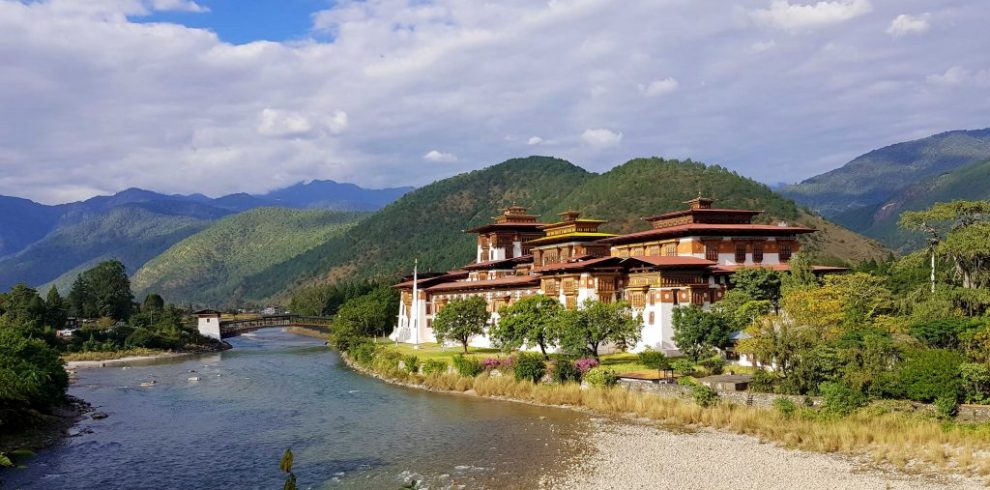
Bhutan Yoga Retreat with Kanchendzonga trek
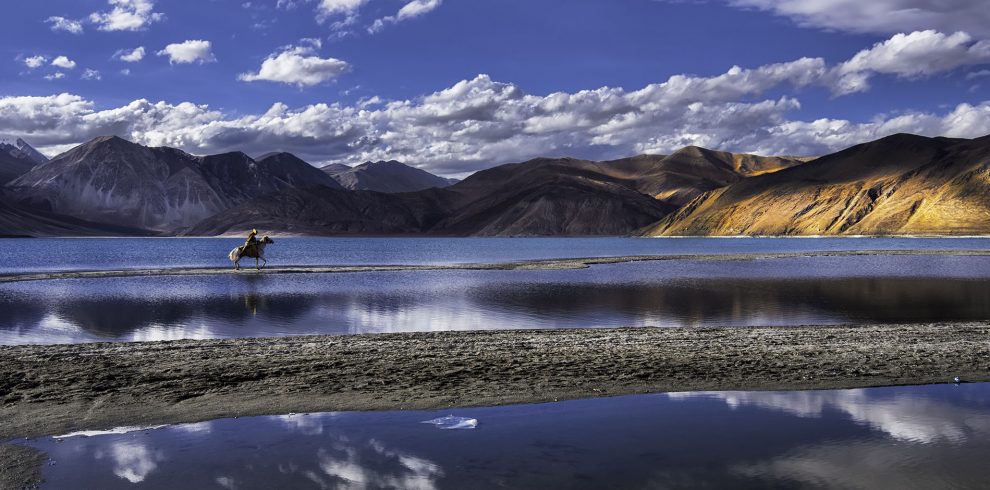
Ladakh Yoga and Wellness Retreat
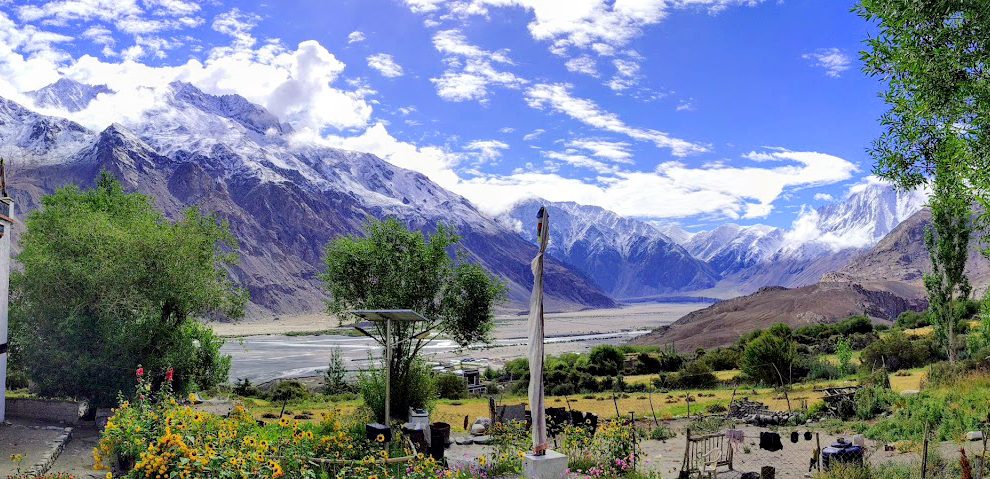
Family Adventure Ladakh- Summertime special
TREKKING IN LADAKH
Winter treks, mountaineering in ladakh, cultural tours in ladakh, adventures in ladakh, fixed departure treks - join a group, ladakh information, mountaineering, cultural tours, join a group, hemis to tso moriri trek (kharnak), day 1: hemis - martselang - shang sumdo, day 2: shang sumdo - lartse, day 3: lartse - kongmaru la - tachungtse, day 4: tachungtse - yakrupal, day 5: yakrupal - zalung karpo la - khar, day 6: khar - dat, day 7: dat - yar la - lungmo che, day 8: lungmo che - zara, day 9: zara - ponganagu, day 10: ponganagu - nuruchan, day 11: nuruchan - kyamayuri la - gyamar barma, day 12: gyamar barma - kartse la - gyamar, day 13: gyamar - yalung nyau la - korzok, getting to / from the trek.

IMAGES
VIDEO
COMMENTS
Overview. One of the most breathtaking high altitude treks in Ladakh, the trail from Rumtse to Tso Moriri traces a verdant blanket of greenery and revolves around wildlife, alpine lakes, monasteries, and nomads. This daunting trek starts from the village of Rumtse at 4,100 m and ends at the beautiful Tso Moriri Lake in the Changthang region ...
What to take on the Rumtse to Tso Moriri trek Rumtse to Tso Moriri is a difficult trek . The trek starts at an altitude of nearly 14,000 ft which is often the highest most other treks get to, and one goes to an altitude of almost 18,000 ft. Trekking at these altitudes even on flat terrain can be physically demanding.
The legendary Rumtse to Tso Moiriri Lake Trek takes you through the highly untouched and supremely beautiful Changthang Valley of Ladakh. With a jaw-dropping length of 100 km and 6 staggering 5000M+ mountain passes and three high altitude oligotrophic lakes, the Rumtse to Tso Moriri Trek is unlike any other trek in Ladakh, the land of high passes and mountains.
Rumtse to Tso Moriri trek (Rupshu) list of treks in Ladakh. Duration: 7 days. Difficulty: level 4. Distance: 98 km. Max elevation: 5435m. Elevation gain / loss: +3002m / -2690m. The trek from Rumtse to Tso Moriri is one of the most beautiful treks in Ladakh. It takes you through the Changthang region, a high-altitude plateau that has unique ...
The Rumtse to Tso Moriri Trek is a unique and challenging adventure that takes you through some of the most scenic landscapes in India's Ladakh region. [email protected] +977-1- 4544435
Gyamabarma - Yalung Nyau La (5440 mts/17844 ft) - Karzok (4550 mts/14925 ft) 6 hrs. Trek to Korzok along Yalung Nyau. Korzok is on the northwestern shore of Tso MoRiri, which is also known as Moountain Lake. Explore the Korzok Monastery.
The Rumtse to Tso Moriri Trek is a fascinating journey through the remote and scenic landscapes of Ladakh, India. This moderate level trek takes you through high mountain passes, remote villages, and vast stretches of barren desert terrain. The trek can be completed in 7 days and 6 nights, and offers stunning views of the Himalayan range.
Best time to trek to Tso Moriri is from May to September In early season you may not be able to cross the high passes because of the snow. The best trekking season coincides with the time many shepherds go along the same trekking trails. It is also the best time for birdwatchers at both the lakes Tso Kar and Tso Moriri.
Take some time to bask in the view before starting your descent to Tso Moriri lake, losing altitude by 3,000 feet. Hike all the way up to Karzok, which is located at the bank of Tso Moriri. Day 10: Drive to Leh. Altitude: 14,895 ft - 11,562 ft. Distance: 211 km. The trek ends at Karzok, and you'll drive back from Karzok to Leh.
Rumtse to Tso Moriri Trek. Days - 7; Grade - Moderate; Distance - 98 Km; Height - Gyamayurla 5200mt+/-Walking Hrs - Max. 7/8 and Min 4/5 ; Rumtse to Tsomoriri Trek - The Trek from Rumtse to Tso Moriri is one of the most beautiful treks in Ladakh. It takes you through the Changthang region, a high-altitude plateau that has unique landscapes and ...
Short Itinerary of Rumtse to Tso Moriri Trek. Day 1 - Rumtse to Kyamar - Distance - 10 km, Time taken - 4 hours. Day 2 - Kyamar - Kyamar La - Mandalchan La - Tisaling - Distance - 13 km, Time taken - 6/7 hours. Day 3 - Tisaling to Shibuk La - Ponganagu - Distance - 14 km, Time taken - 6/7 hours.
Day 3 Leh - Rumtse - Kyamar (4000 m)/ trek 4-5 hrs. +. Post breakfast drive to Rumtse via Leh-Manali highway. The first phase of trekking starts from Rumtse to Kyamar (4000 m). Moving on with the trek, you will come across a pasture valley where the nomadic herders or Changpas bring their yaks & goats to graze on.
Jul 22, 2023 - Aug 2, 2023. ₹62,000.00. About the trek - The Rumtse to Tsomoriri trek puts on exhibition all that Changthang has to offer! From scenic revelations to high altitude passes. Trip Enquiry Book Now. Total Trekking Distance : 98 Kms Highest Altitude : 5435 mts. Trek Overview.
Rumtse to Tso Moriri Trek. Andy Crisconi February 21, 2024 Himalayan Trekking Tours. Confirmed Group Trip Date: August 17 to September 1, 2024. The hike from Rumtse to Tso Moriri is one of the most beautiful in Ladakh. Our trekking journey takes us to the Changthang region, a high-altitude plateau comprising of unique and colorful landscapes ...
Cost incidental to any change in the itinerary/ stay on account of flight cancellation due to bad weather, ill health, roadblocks and/or any factors beyond control. ... Rumtse to Tso Moriri Lake Trek Trekking; Rumtse to Tso Moriri Lake Trek Trekking; Location: Luxury: Super Deluxe: Deluxe: Superior: Standard: Leh: The Grand Dragon:
11-day Rumtse to Tso Moriri trek. Fixed departures. list of group treks. 1140 € per person. BOOK NOW. The trek from Rumtse to Tso Moriri is one of the most beautiful treks in Ladakh. It takes you through the Changthang region, a high-altitude plateau that has unique landscapes and stunning lakes like Tso Kar and Tso Moriri.
The Rumtse to Tso Moriri Lake Trek starts from this hamlet which itself is at a height of 4166 M and takes you to the remote freshwater lake of Ladakh, Tso Moriri but, only after crossing 105 km with 6 astonishing high altitude mountain passes over 5000M. Thousands of people ride on the Leh-Manali highway and hundreds visit the blue Tso Moriri ...
Rumtse to Tsomoriri trek is a challenging high altitude trek in Ladakh. The trek starts from Rumtse (4100m) a village in Eastern part of Ladakh and ends at Tso Moriri Lake, a beautiful High altitude lake in Changthang, which is also the breeding ground to birds like the Black-necked Crane, Tibetan Sandgrouse, Bar-headed geese, etc.
A detailed guide and expert advice for the Rumtse Tsomoriri Trek including best time to visit, cost, travel duration, safety, itinerary, and lots more ... ( 4193m ), Kyagar Tso ( 4671m ), Kyun Tso ( 4982m ), Ryul Tso ( 4985m ), Tso Moriri ( 4522m ), Tsokar Lake ( 4531m ) 1 National Parks Or Forest Reserve: ... The actual per-person cost of the ...
The trek from Rumtse to Tso Moriri is one of the most beautiful treks in Ladakh. It takes you through the Changthang region, a high-altitude plateau that has unique landscapes and stunning lakes like Tsokar and Tsomoriri. ... cost incidental to any change in the itinerary/ stay on account of flight cancellation due to bad weather, ill health ...
Best Time to Do Rumtse - Tso Moriri Trek. The Rumtse to Tso Moriri Trek is considered difficult thus the best time to do it is between June and September. The weather during these months is pleasant during the day and cold at night. Daytime temperatures range from 20°C to 30°C, and nighttime temperatures range from 5°C to 10°C.
Spread over 120 square kilometres, Tso Moriri is the largest high-altitude lake that is entirely within India. Cross through seven mountain passes, Outlandish landscapes of Changthang Plateau. The Rocky Mountains that constantly change its colours as the day progresses.
11-day Rumtse to Tso Moriri trek. 10-day Kang Yatse climb (6200m) 8-day Nubra valley trek. 6-day Stok Kangri climb (6153m) LADAKH INFORMATION. LADAKH INFORMATION. General. ... Hemis to Tso Moriri trek (Kharnak) list of treks in Ladakh. Duration: 13 days Difficulty: level 5 Distance: 198 km